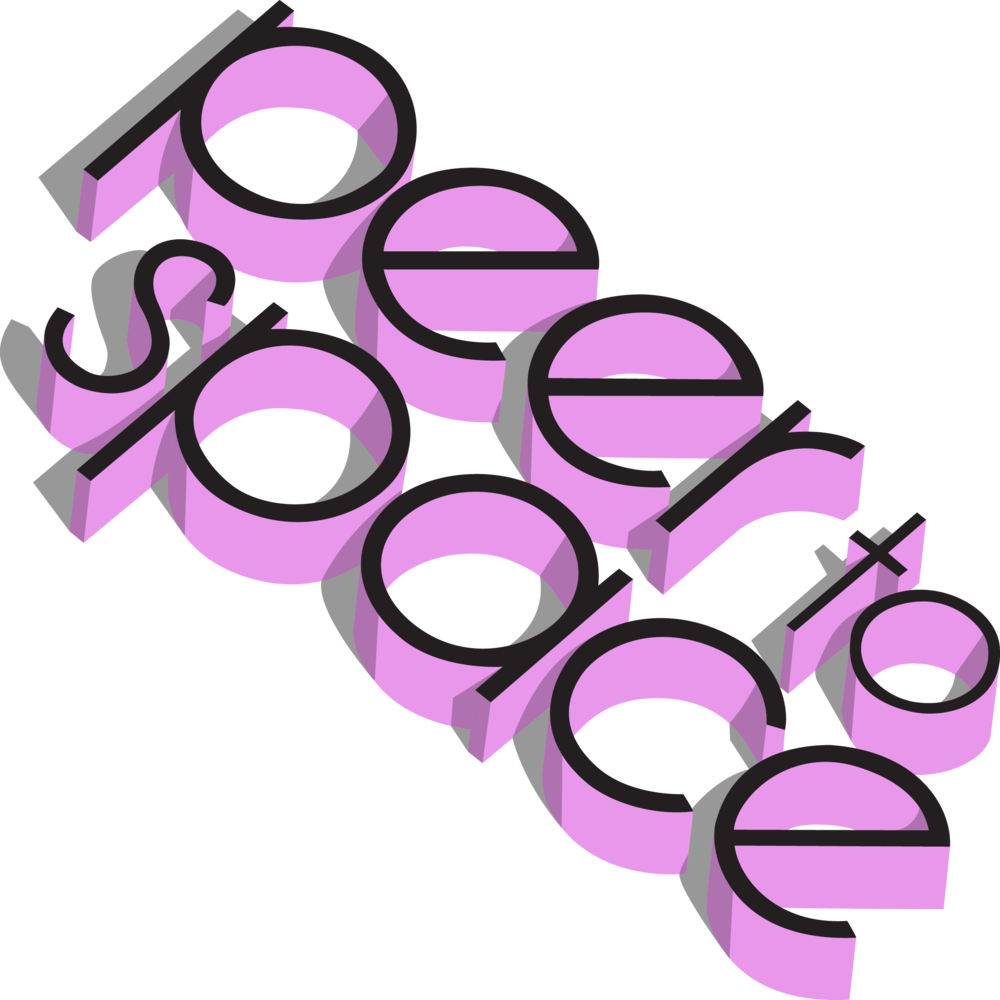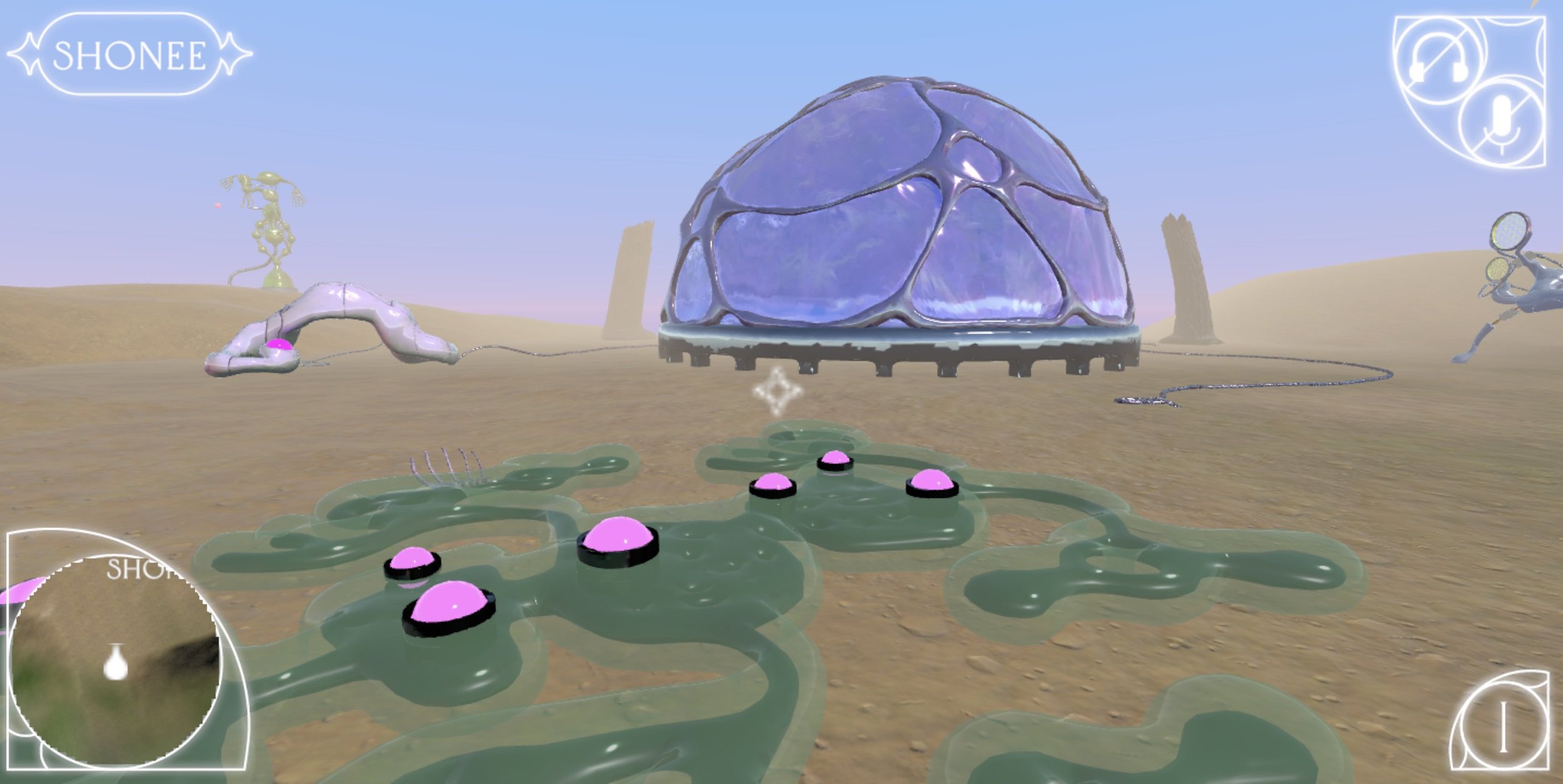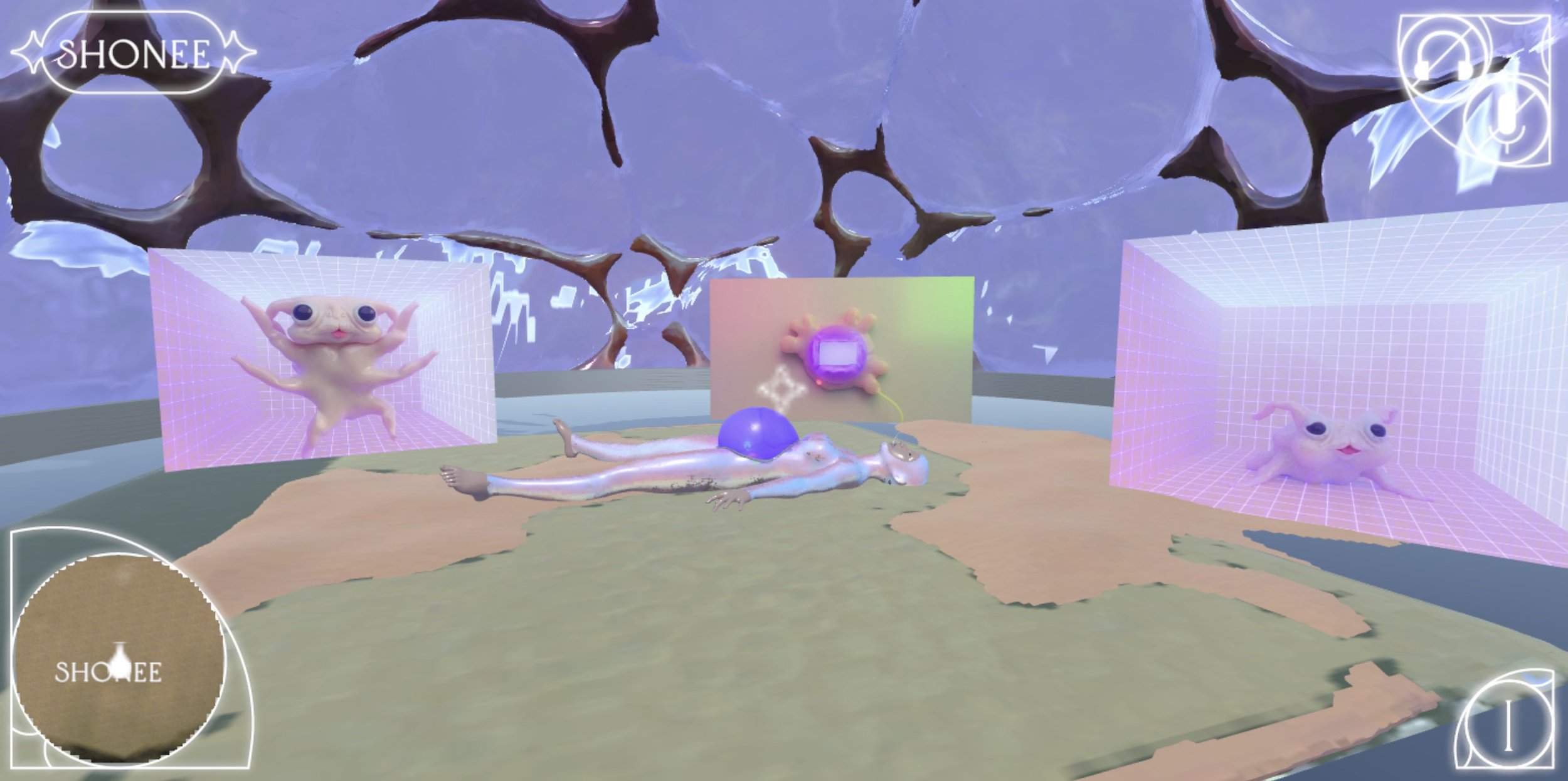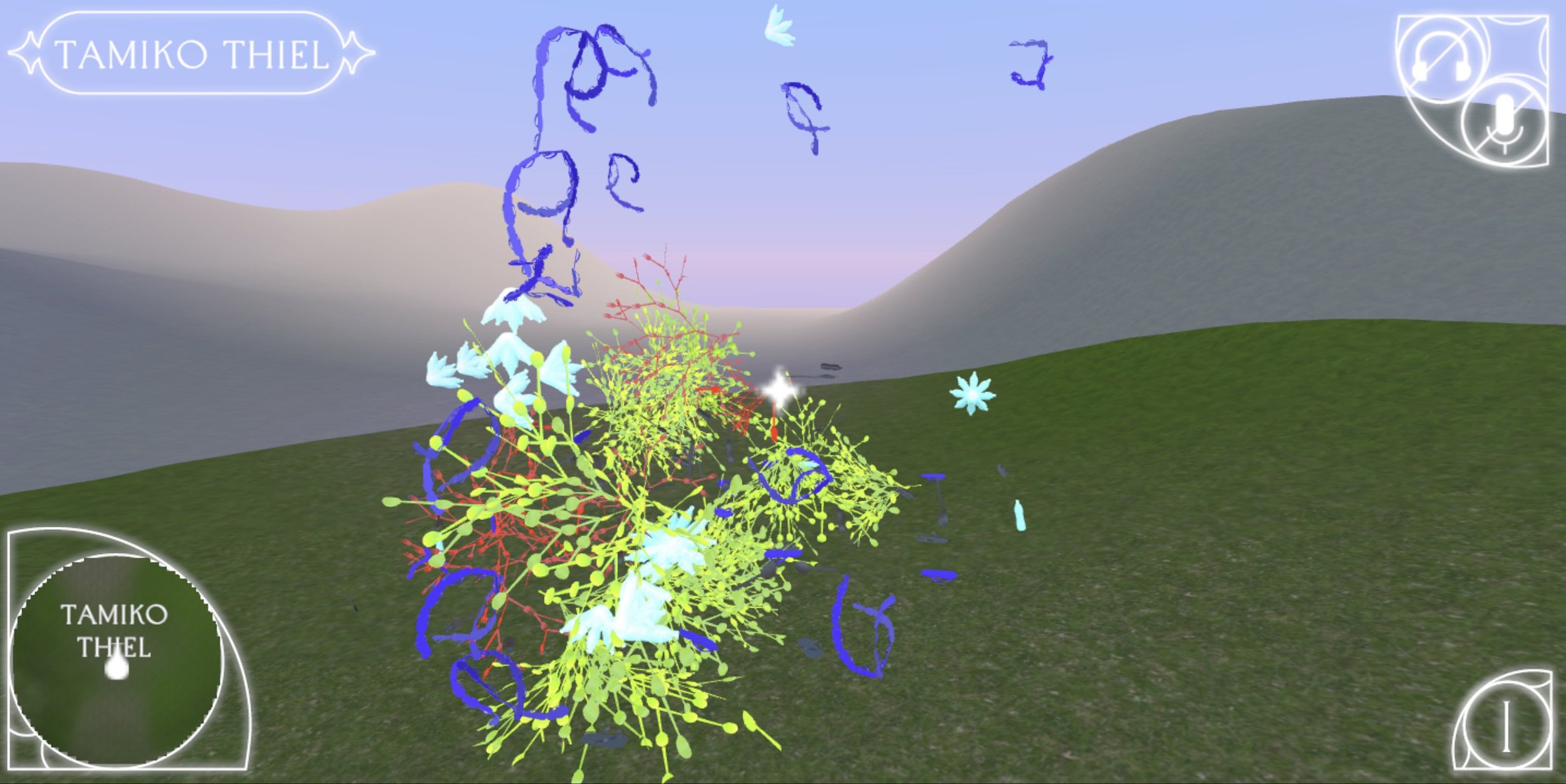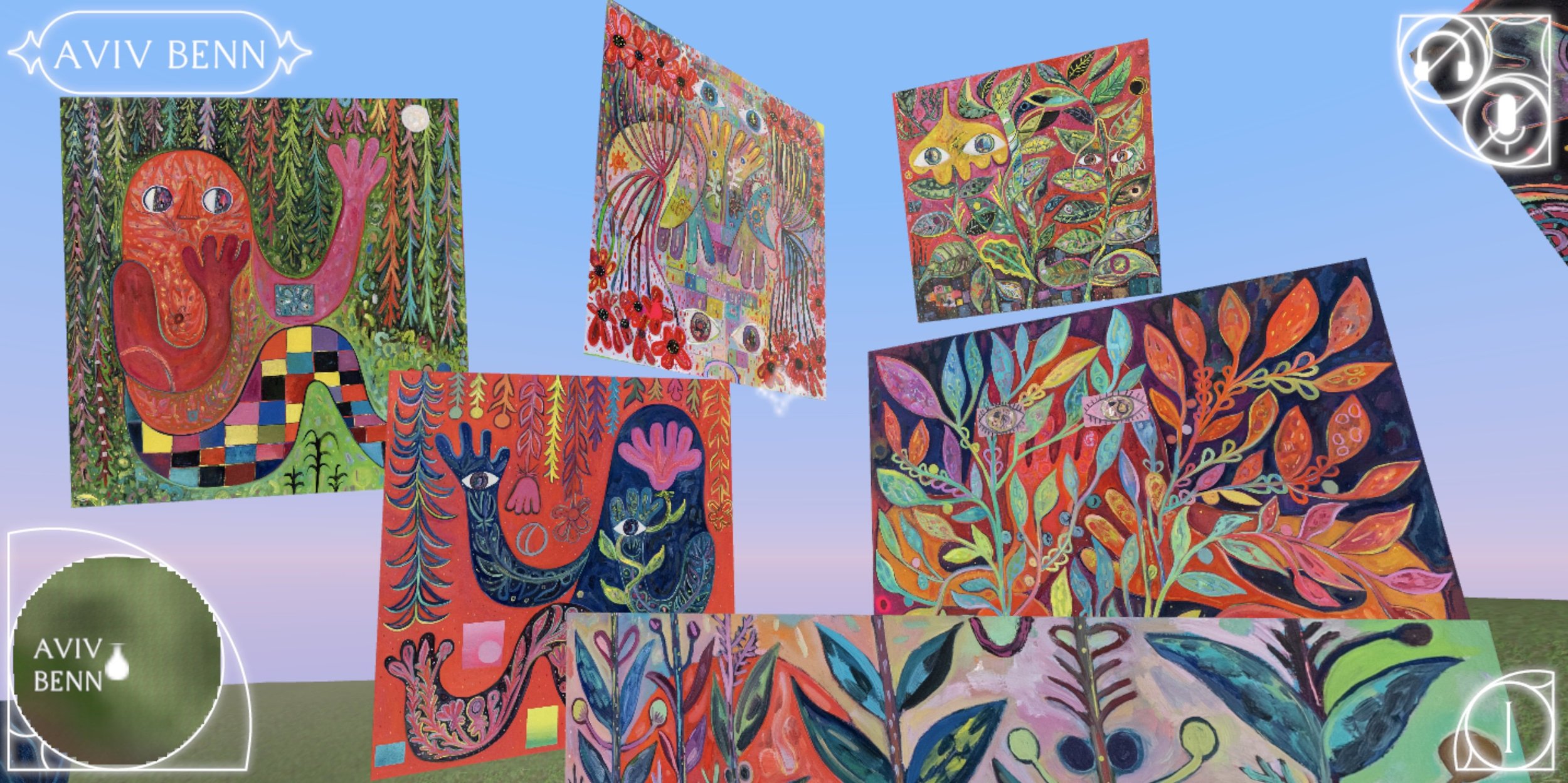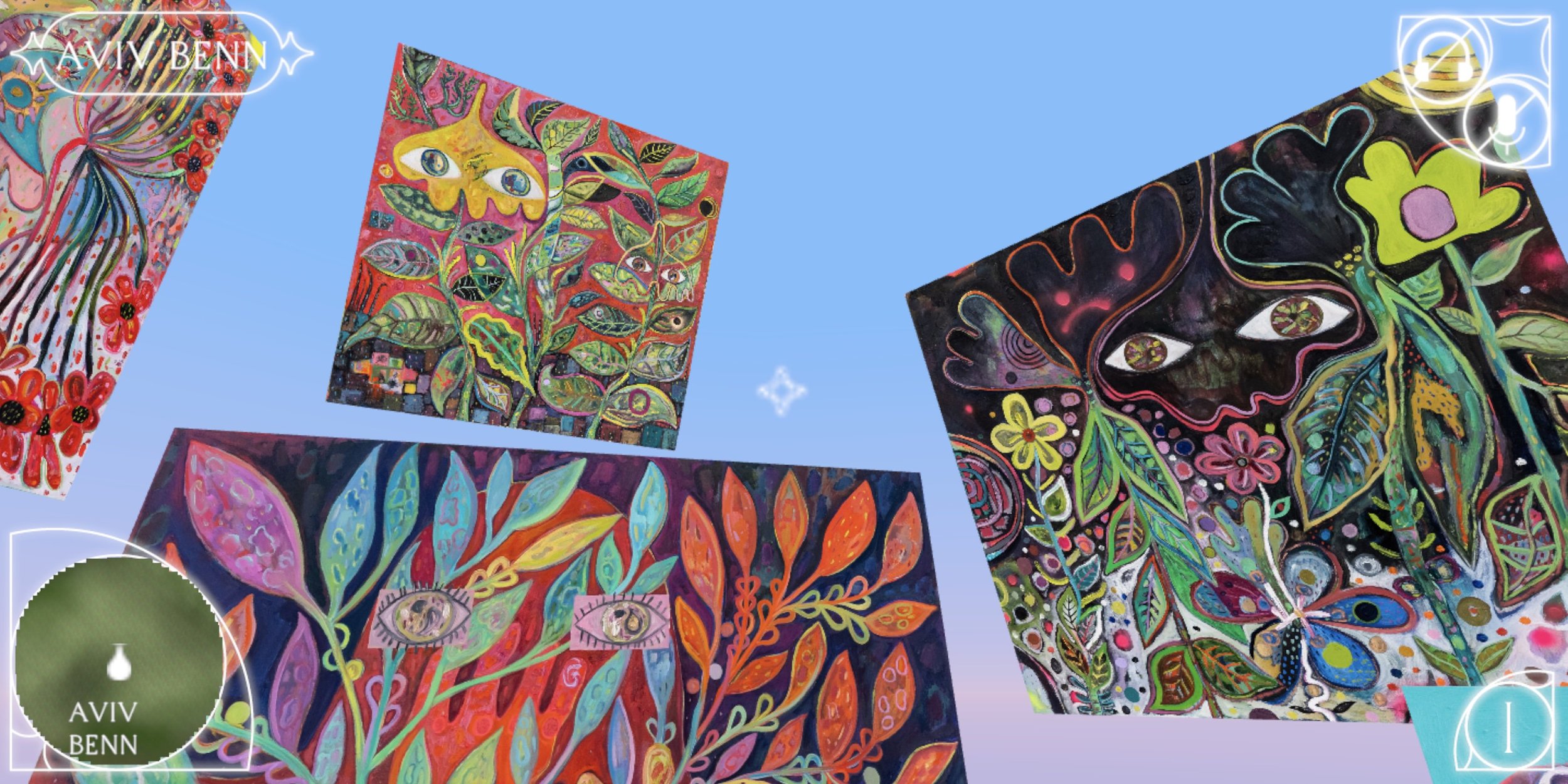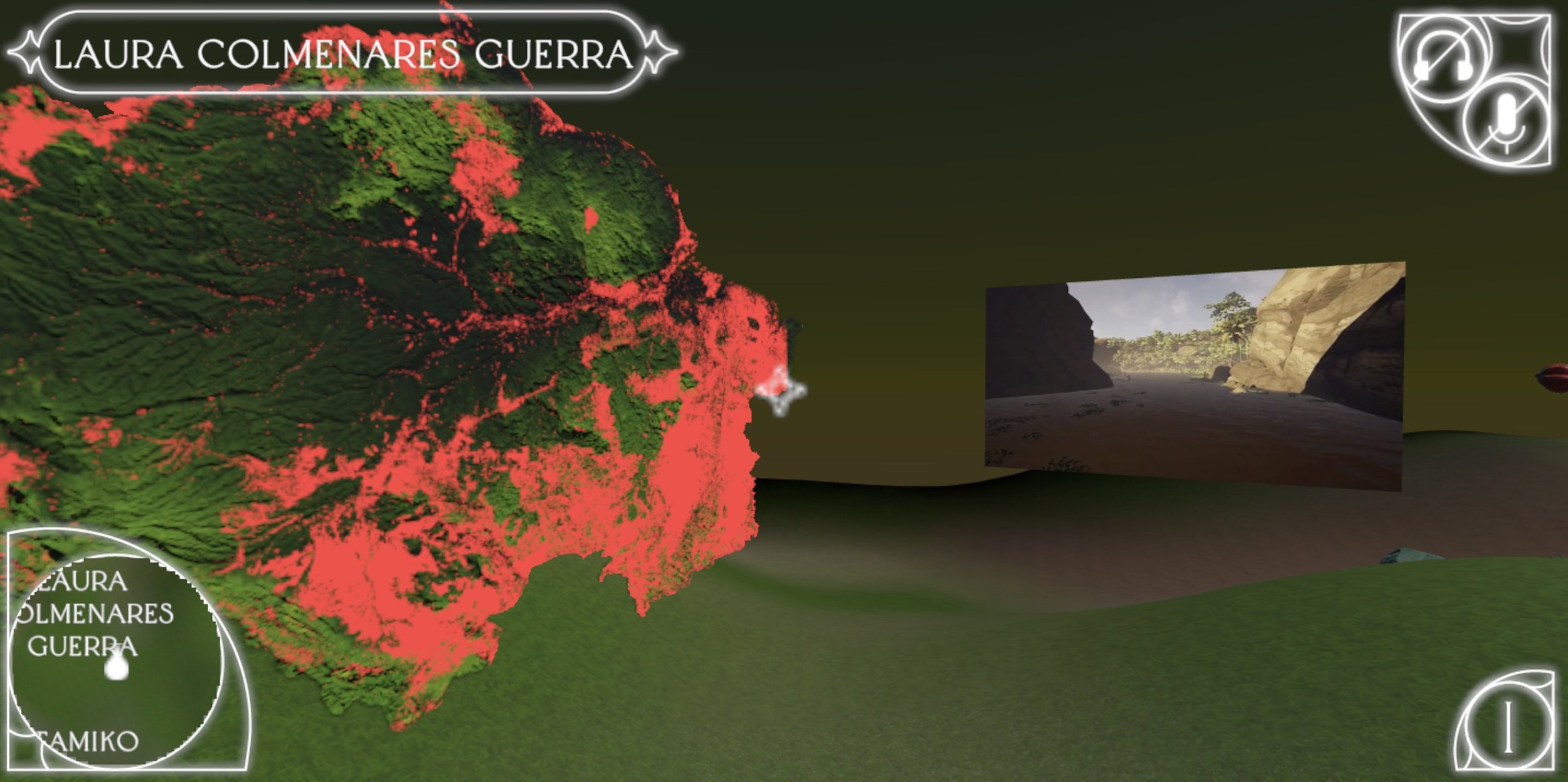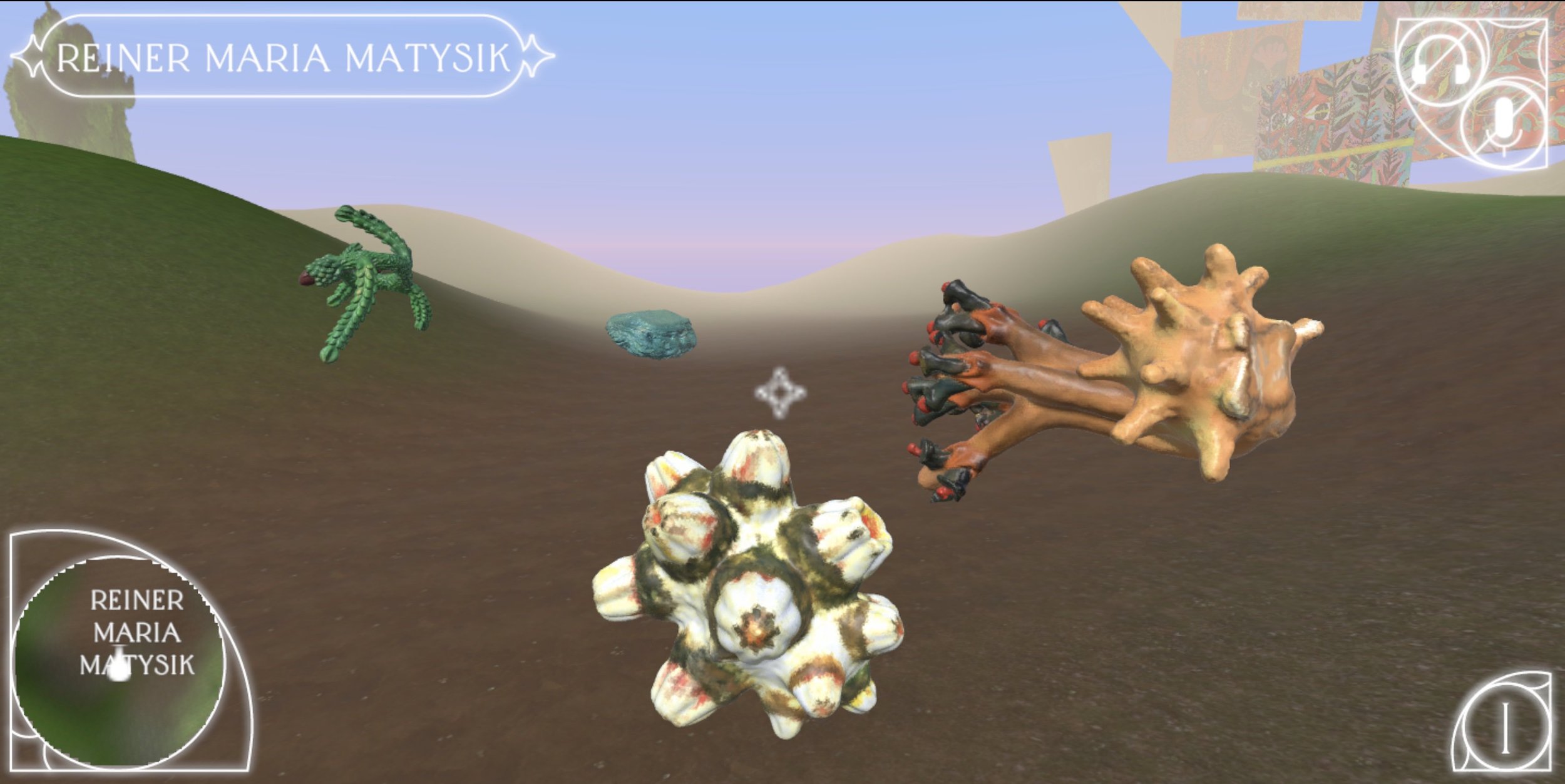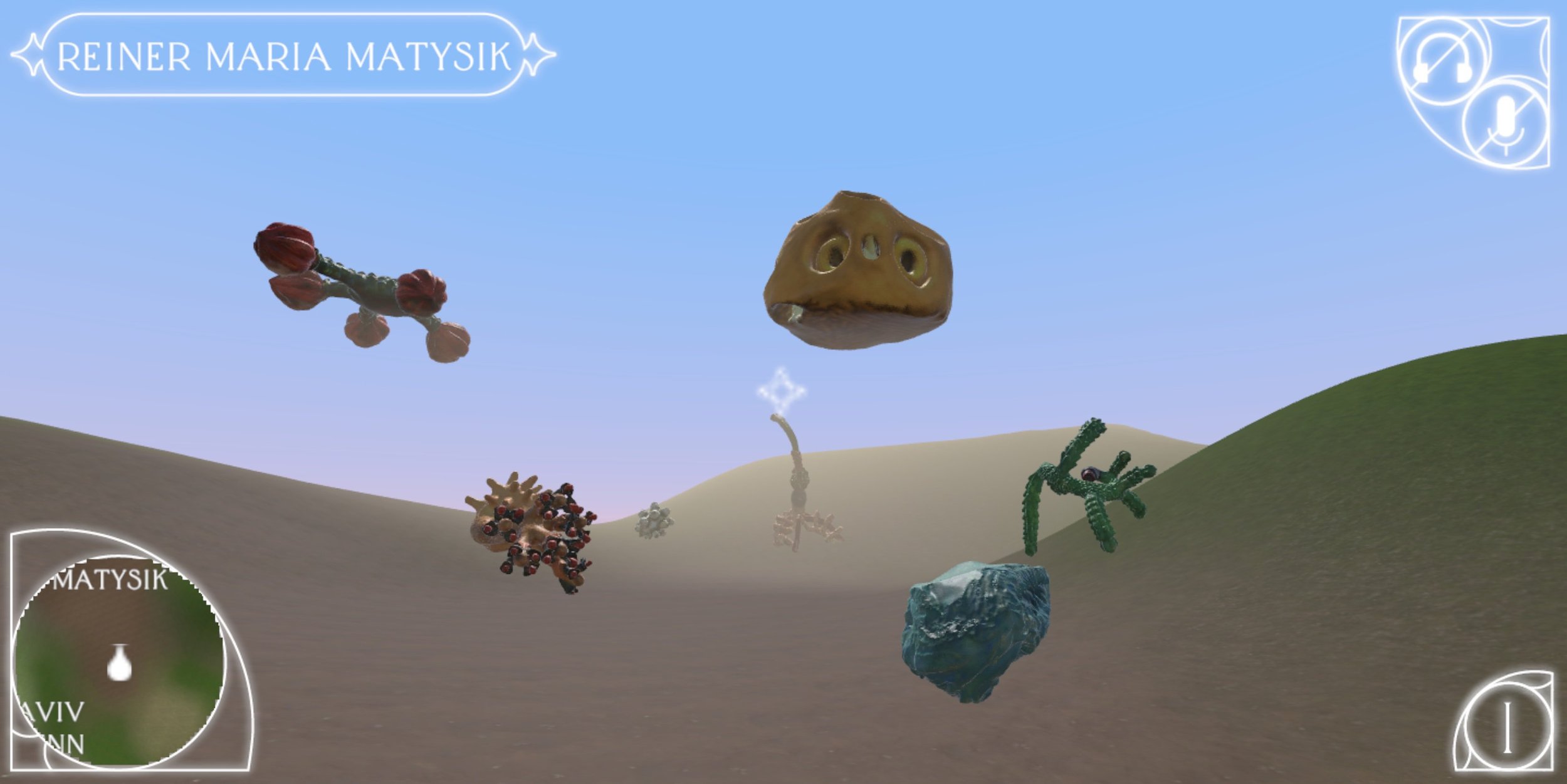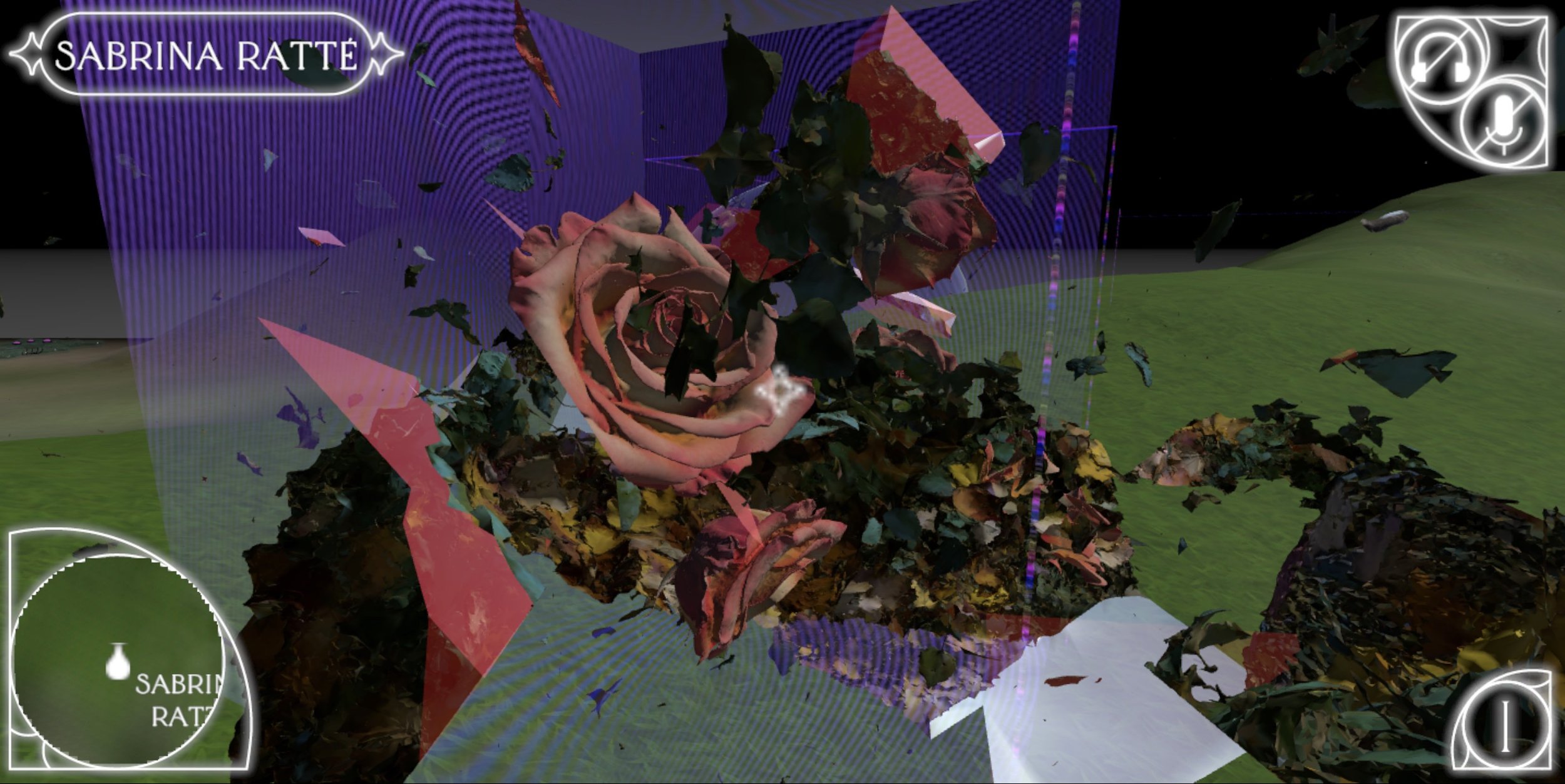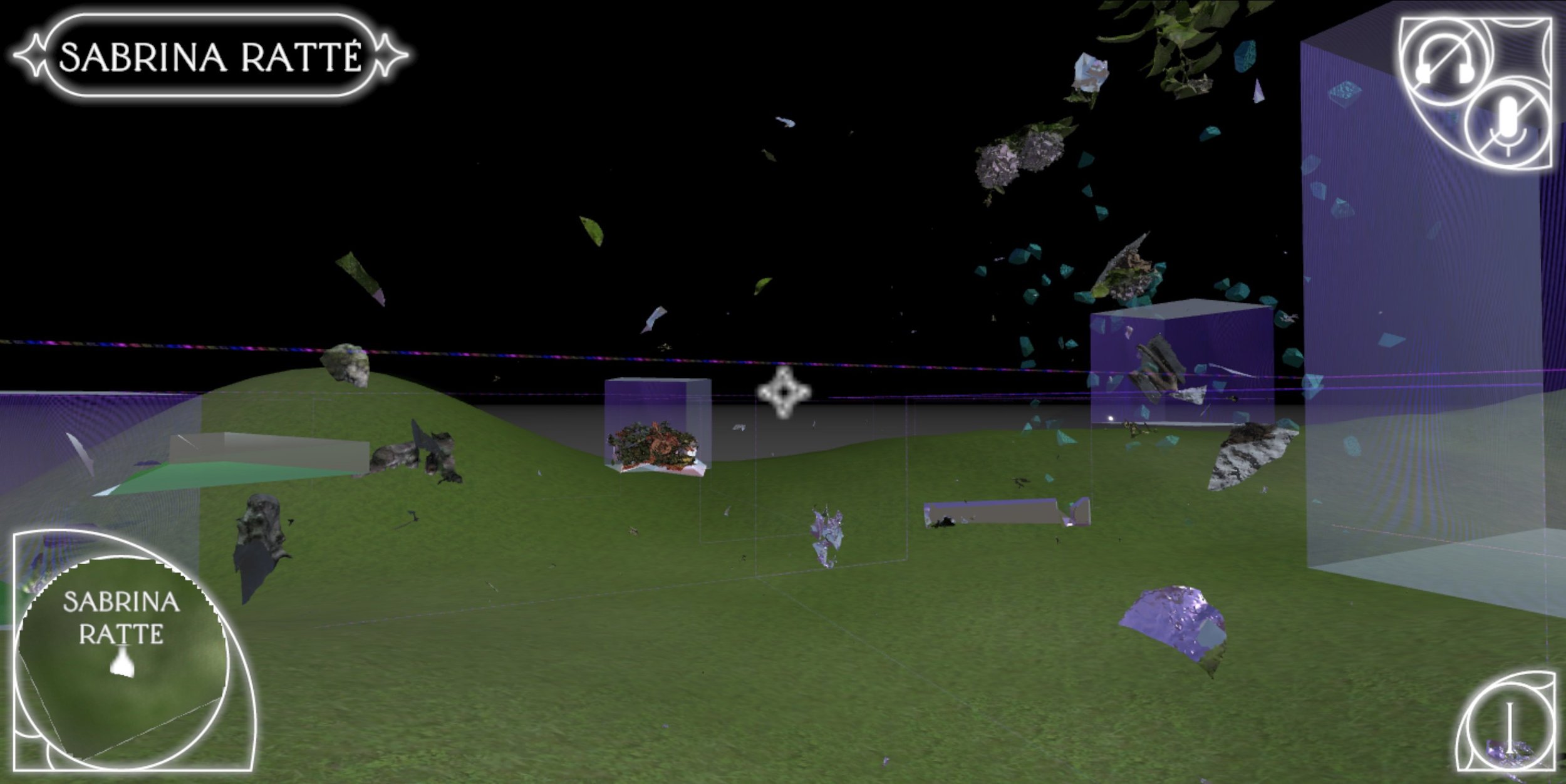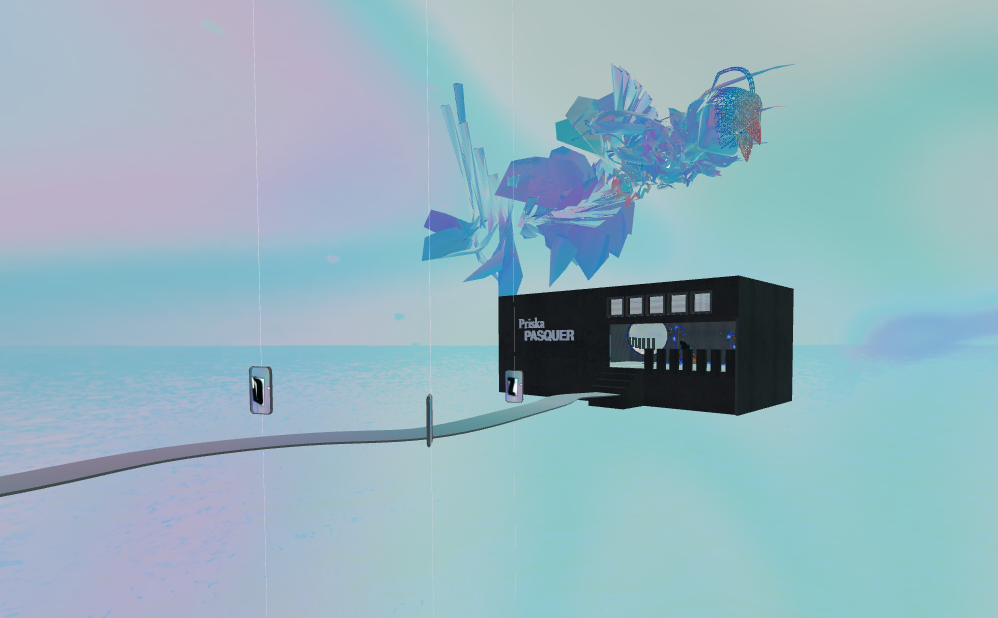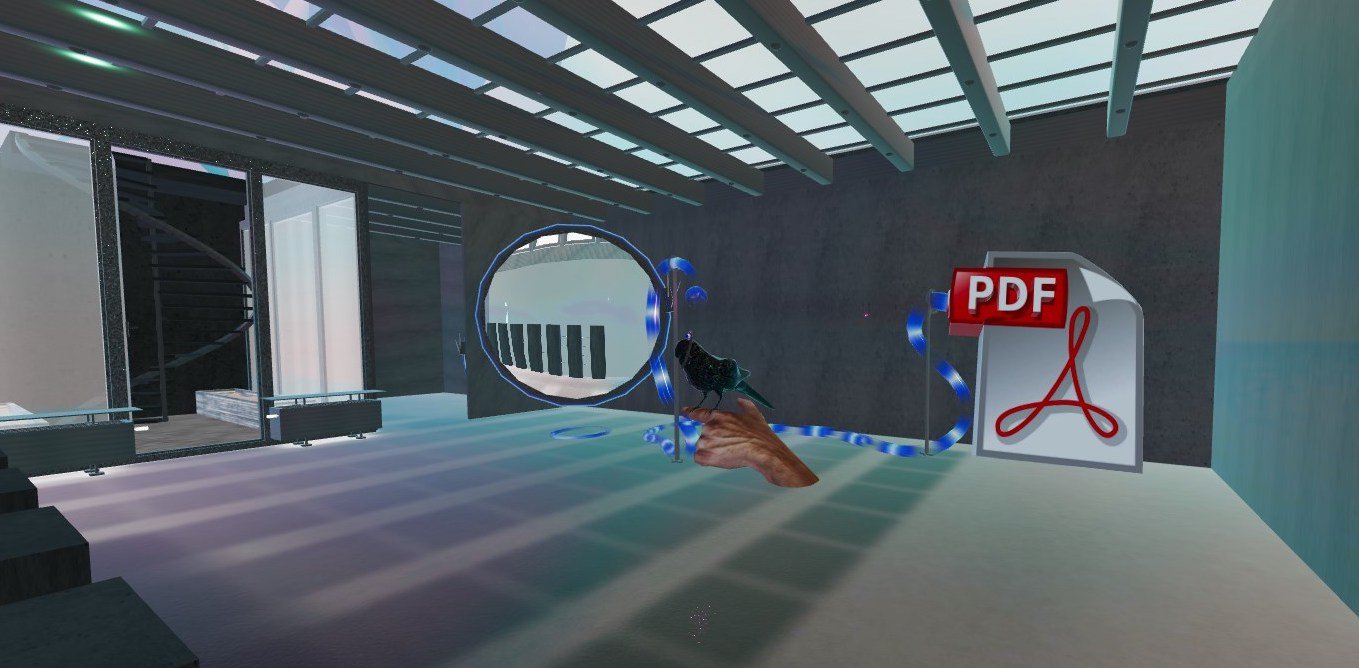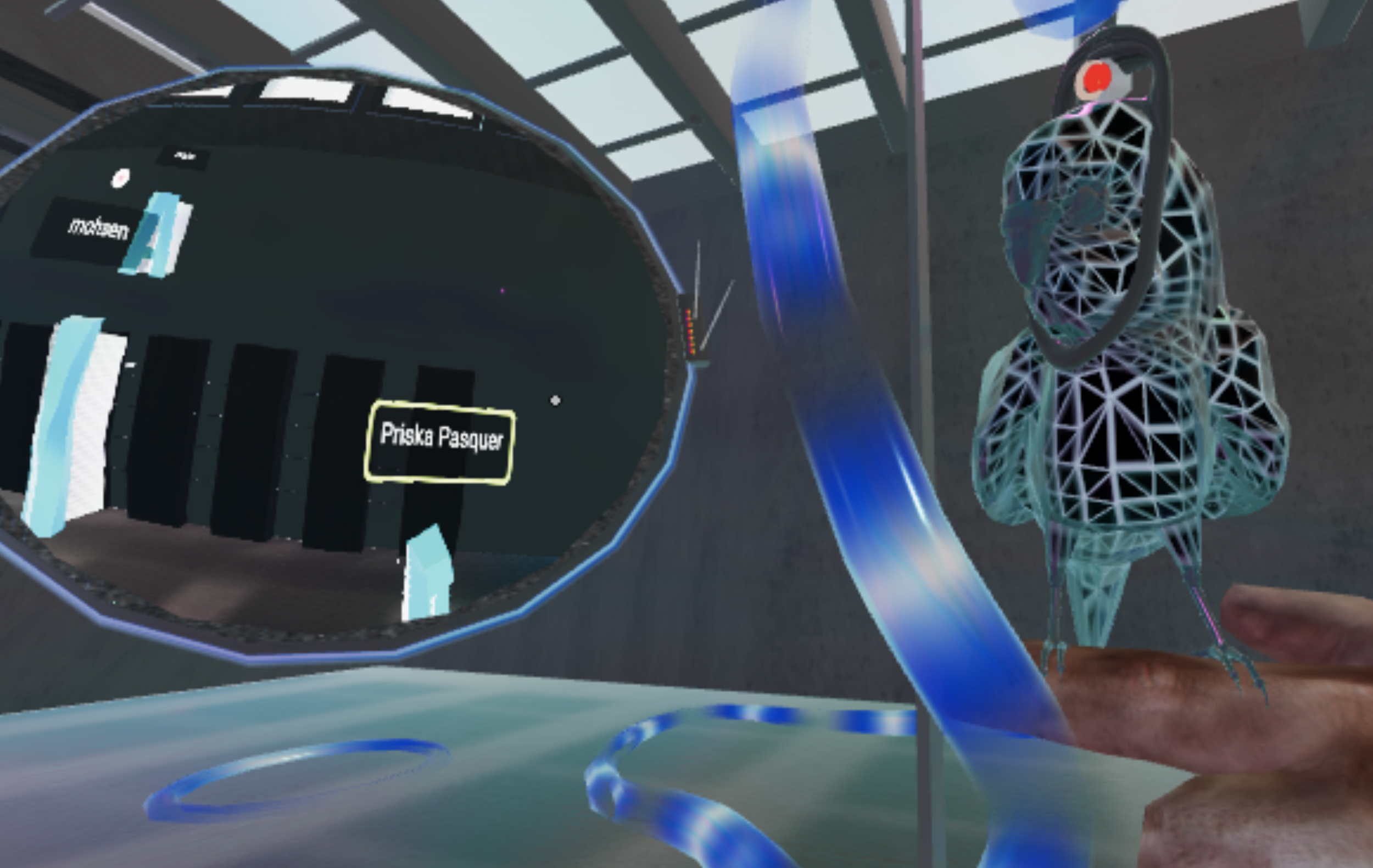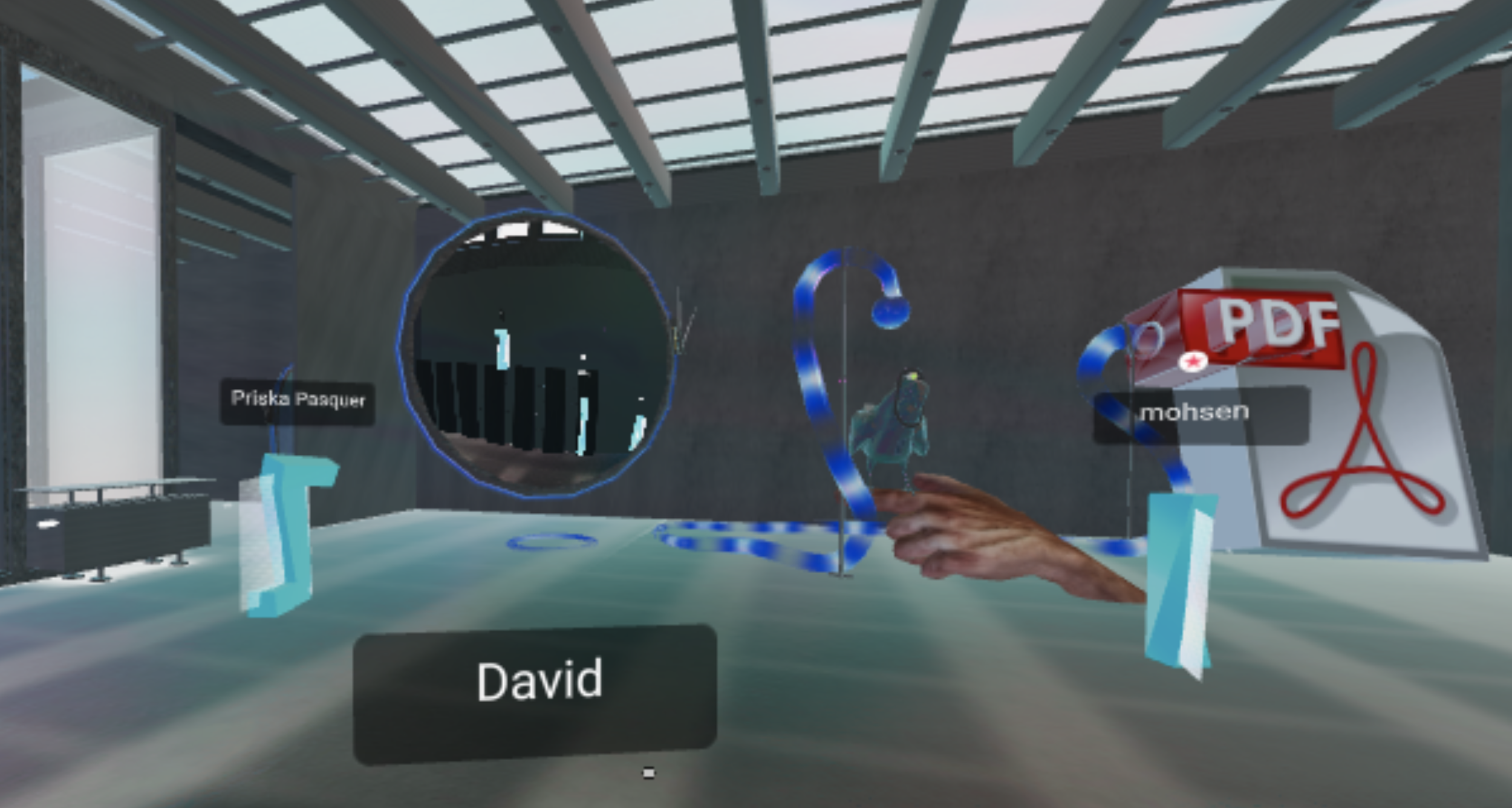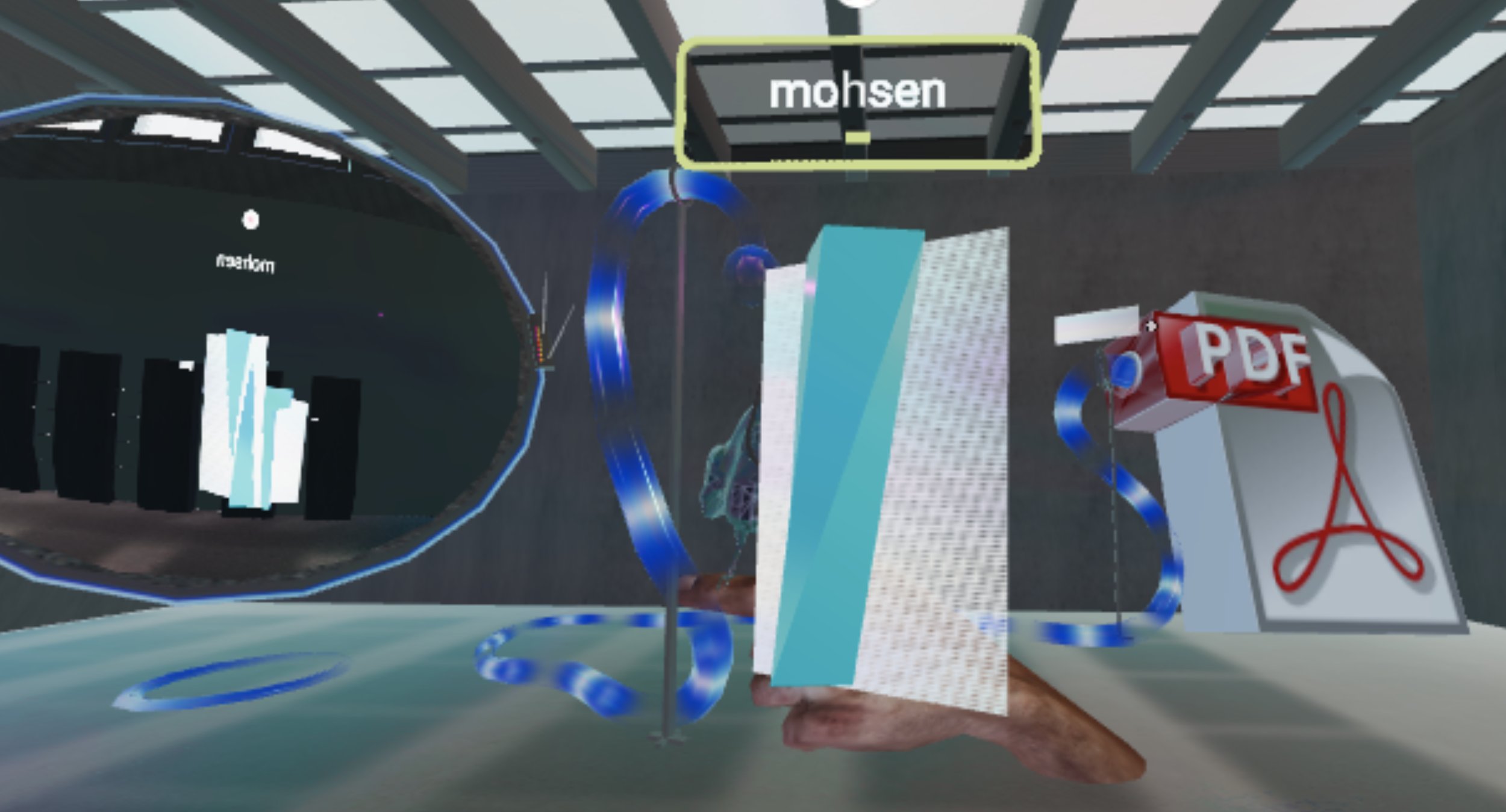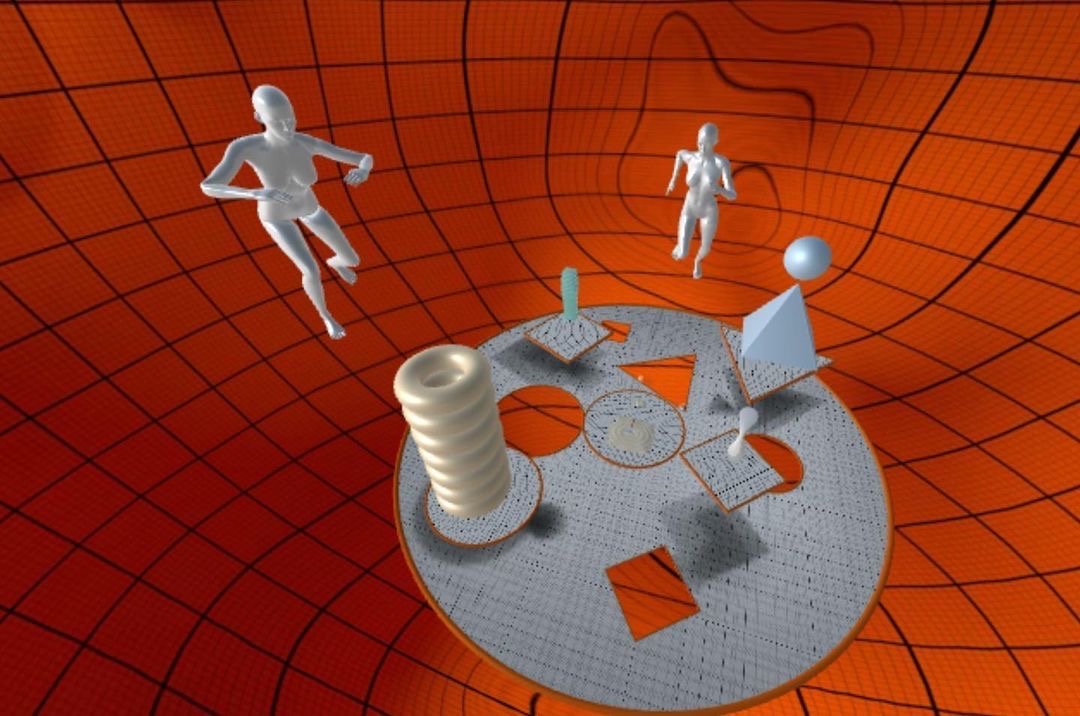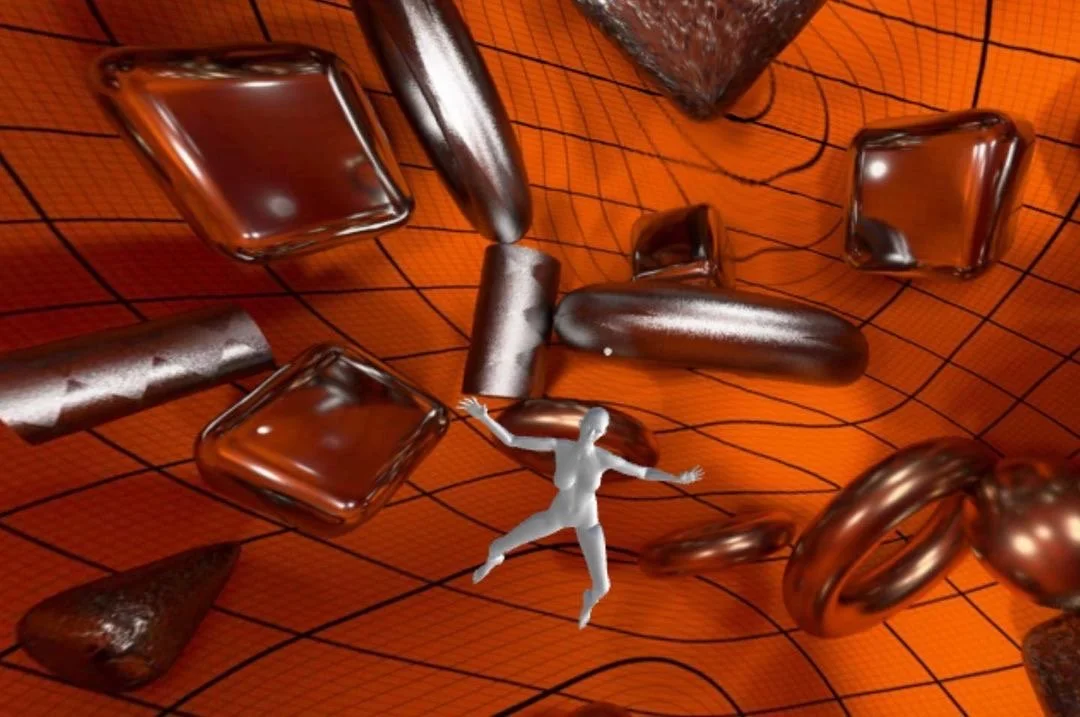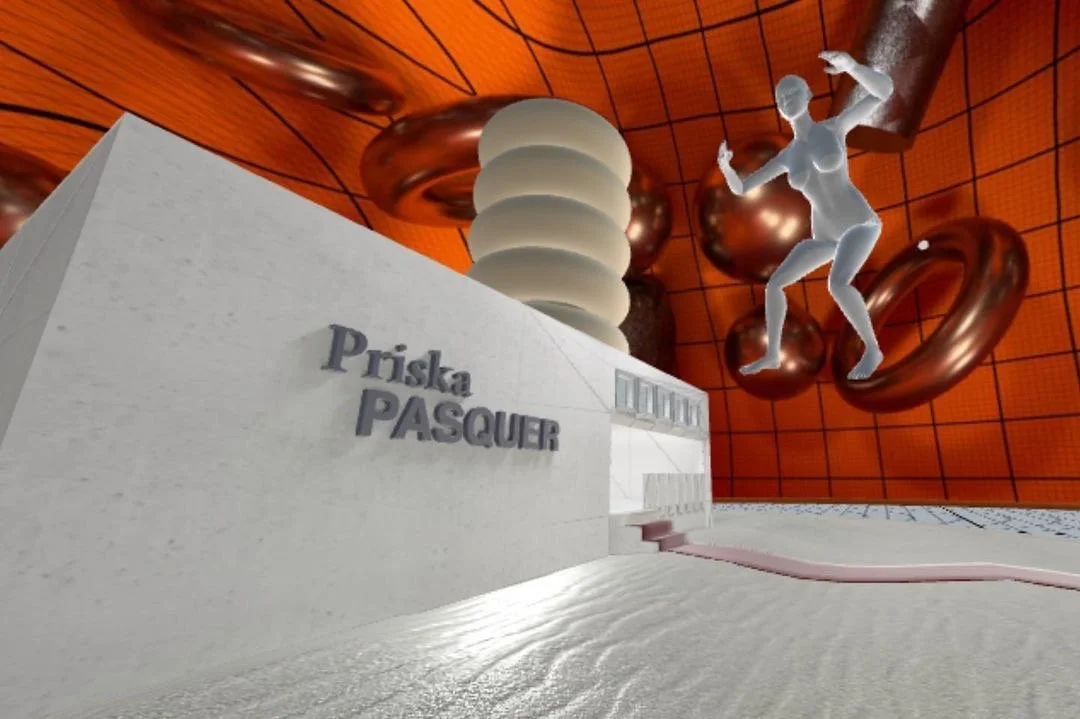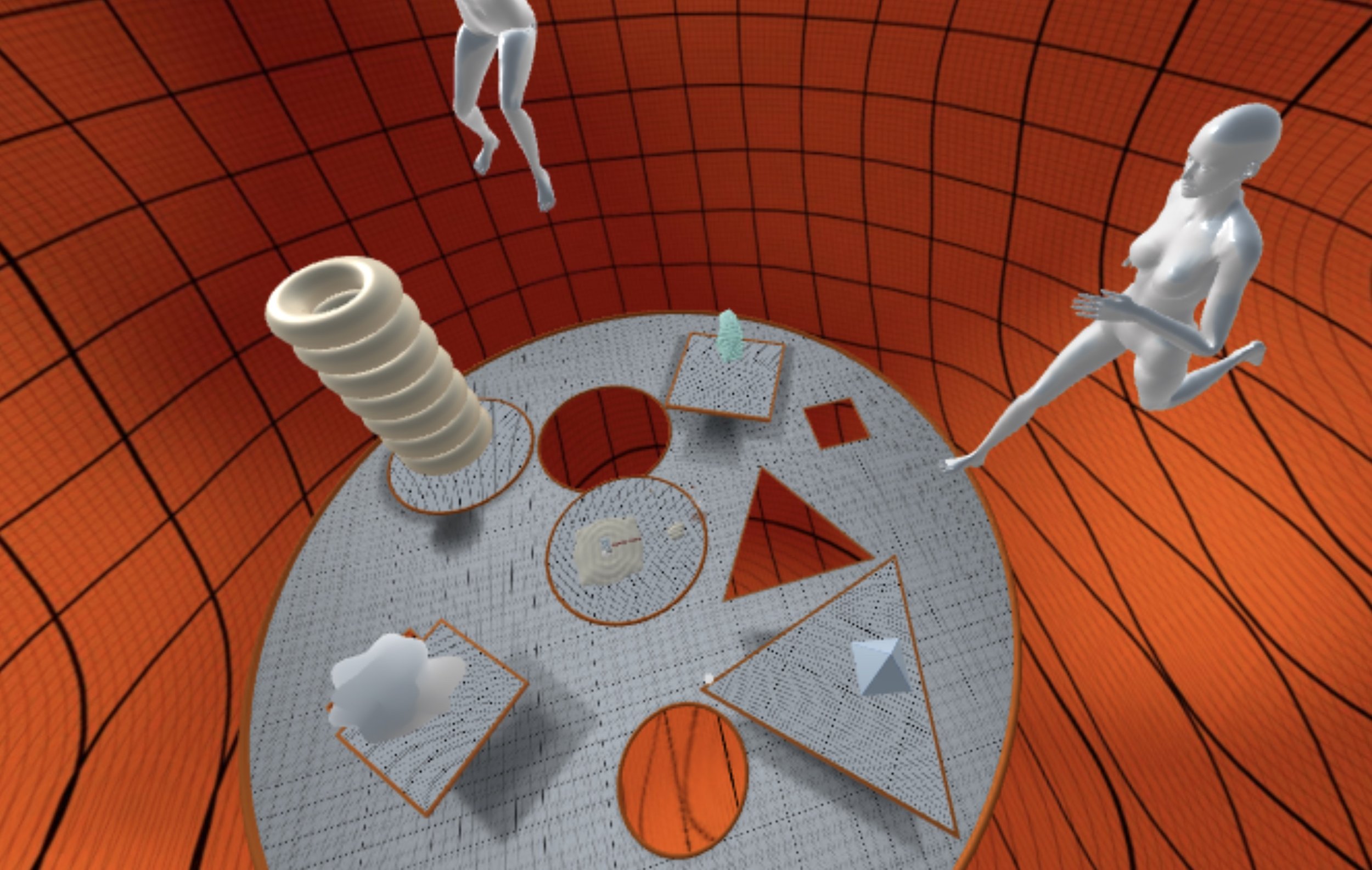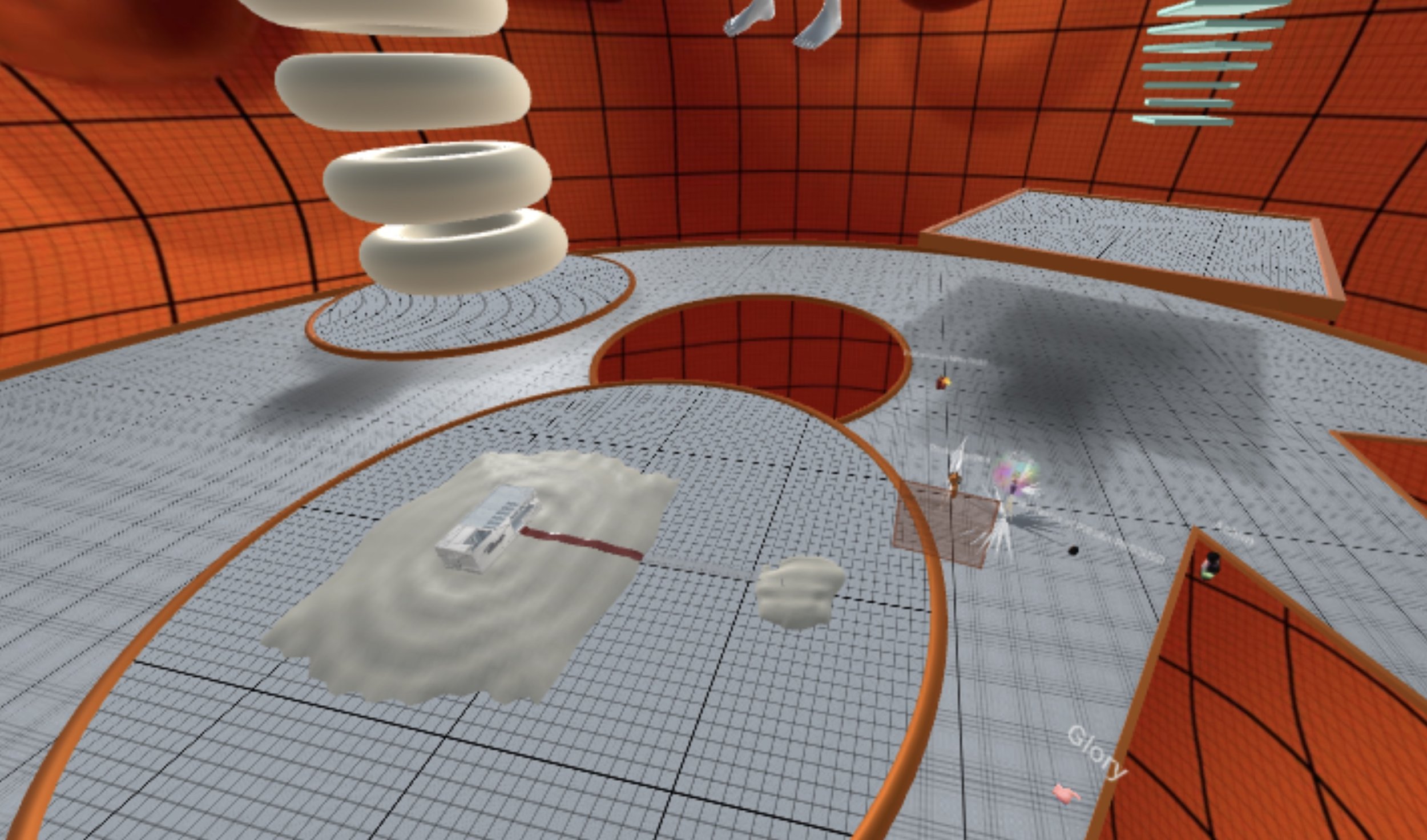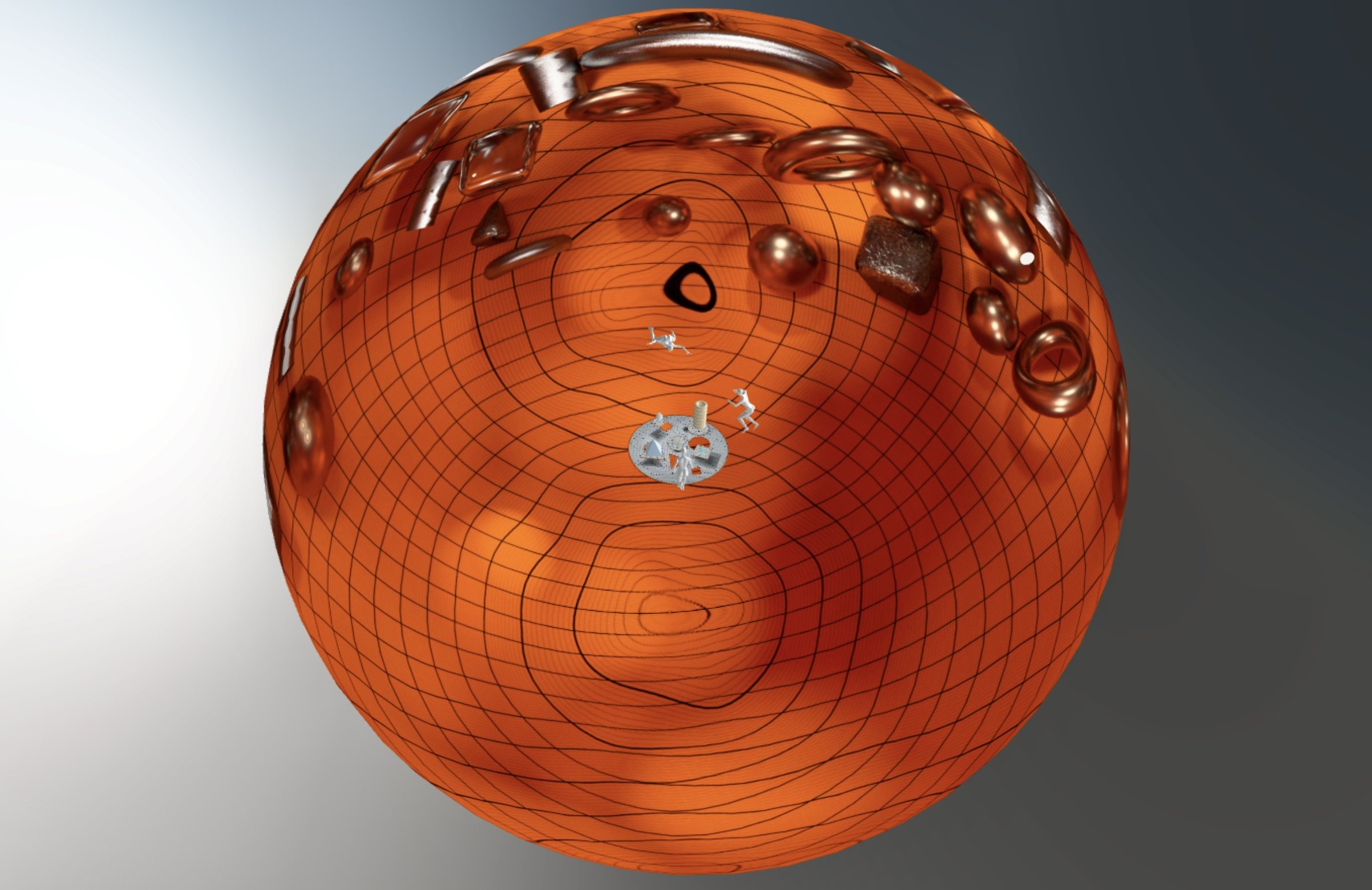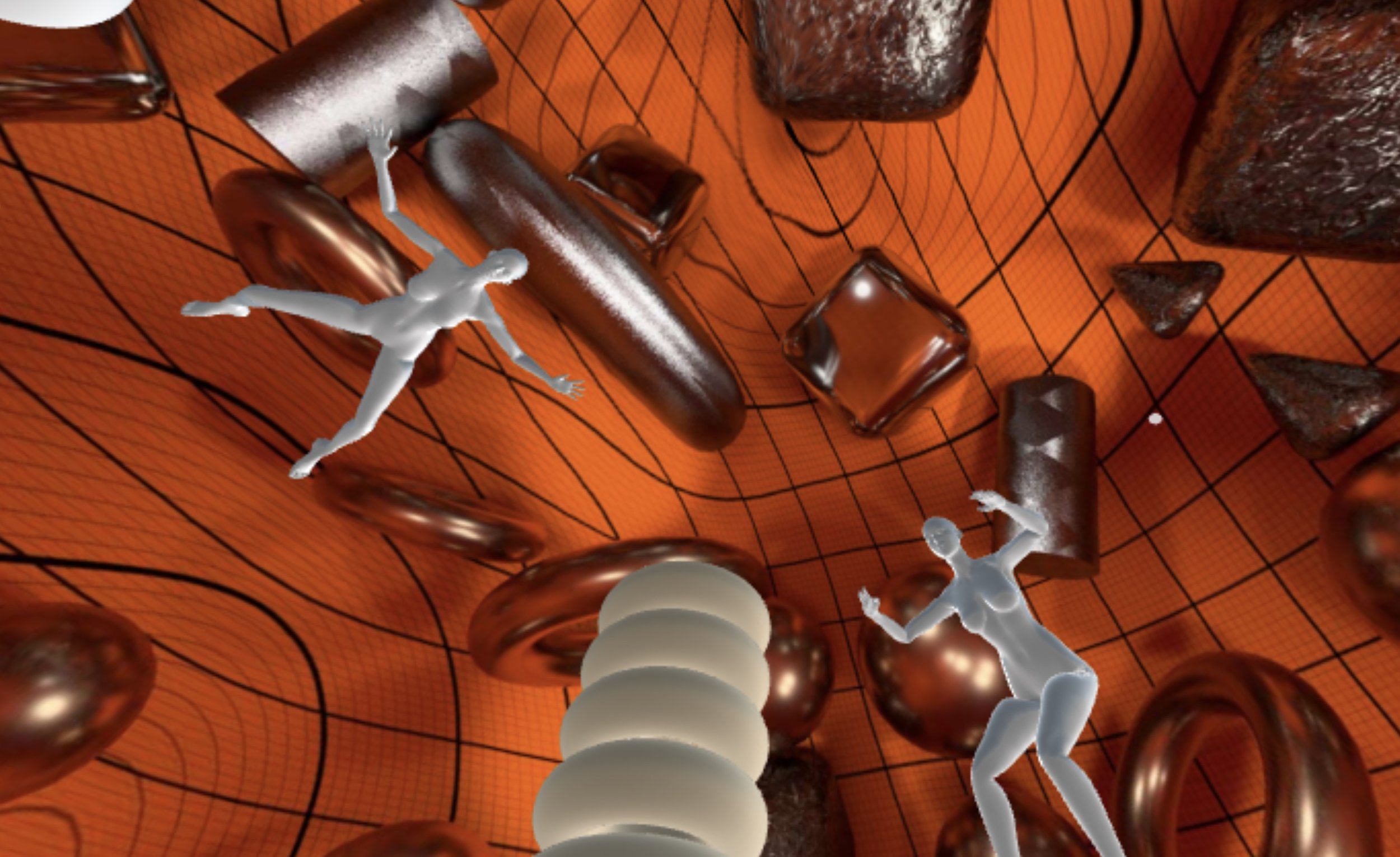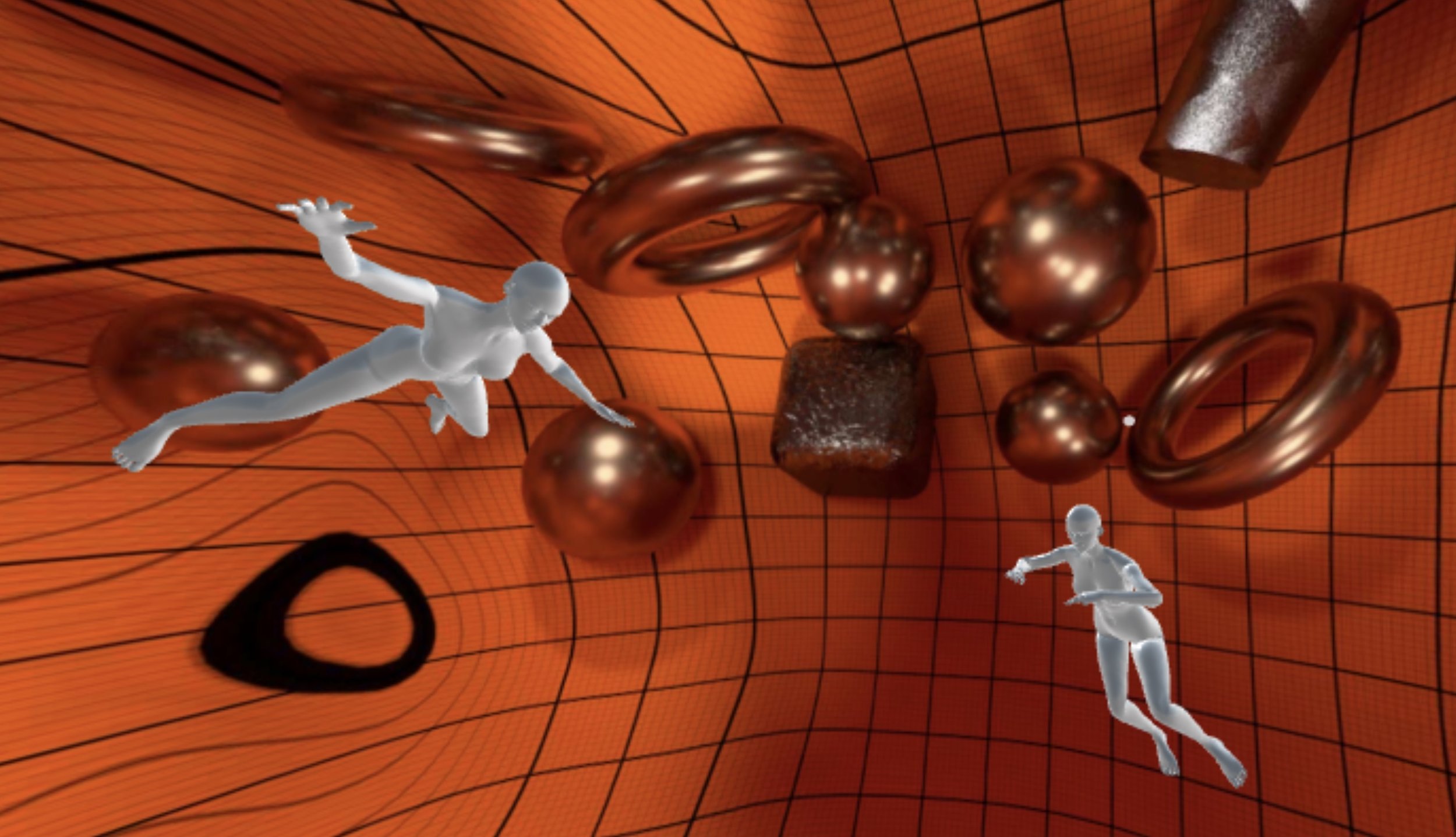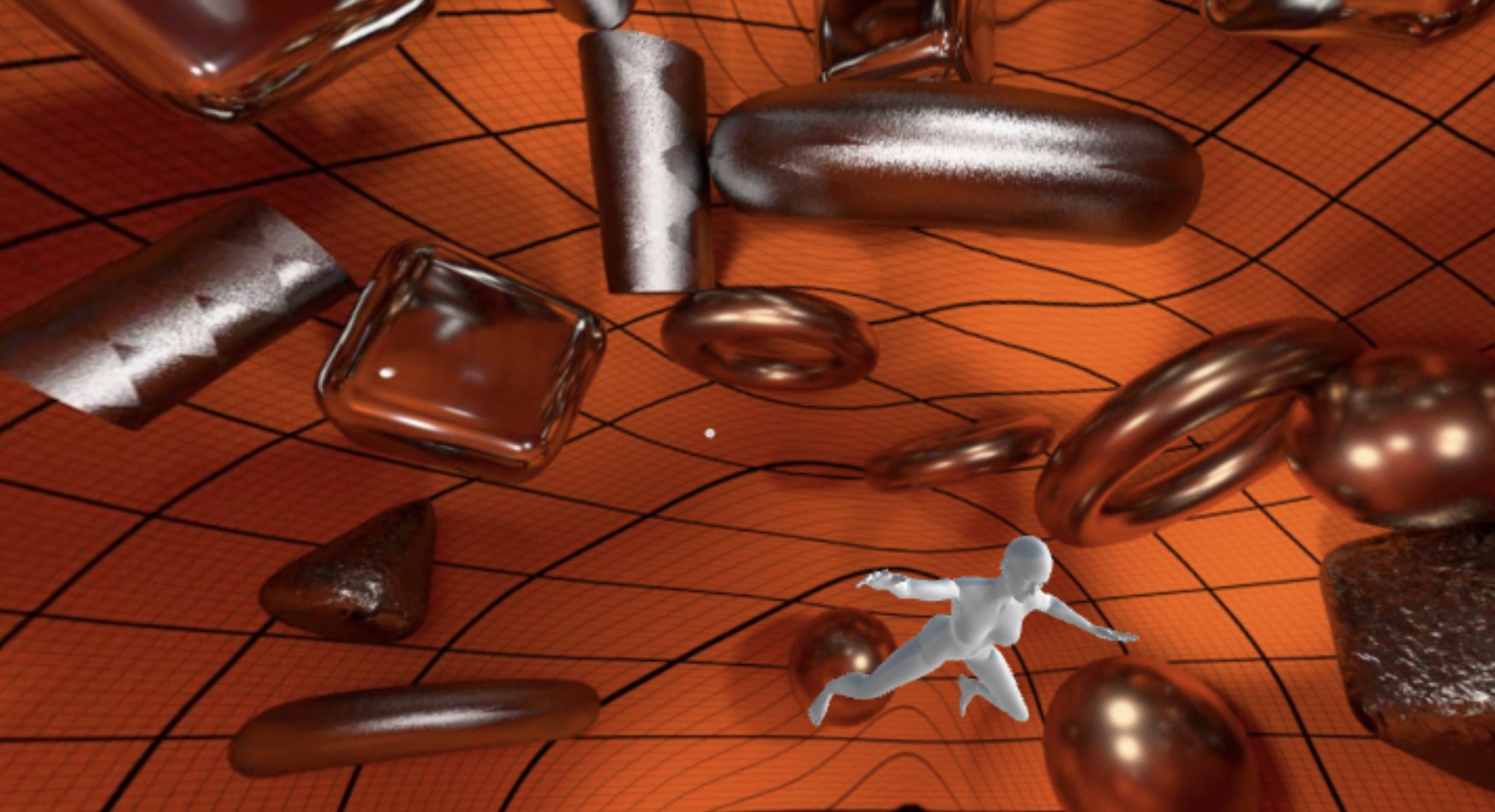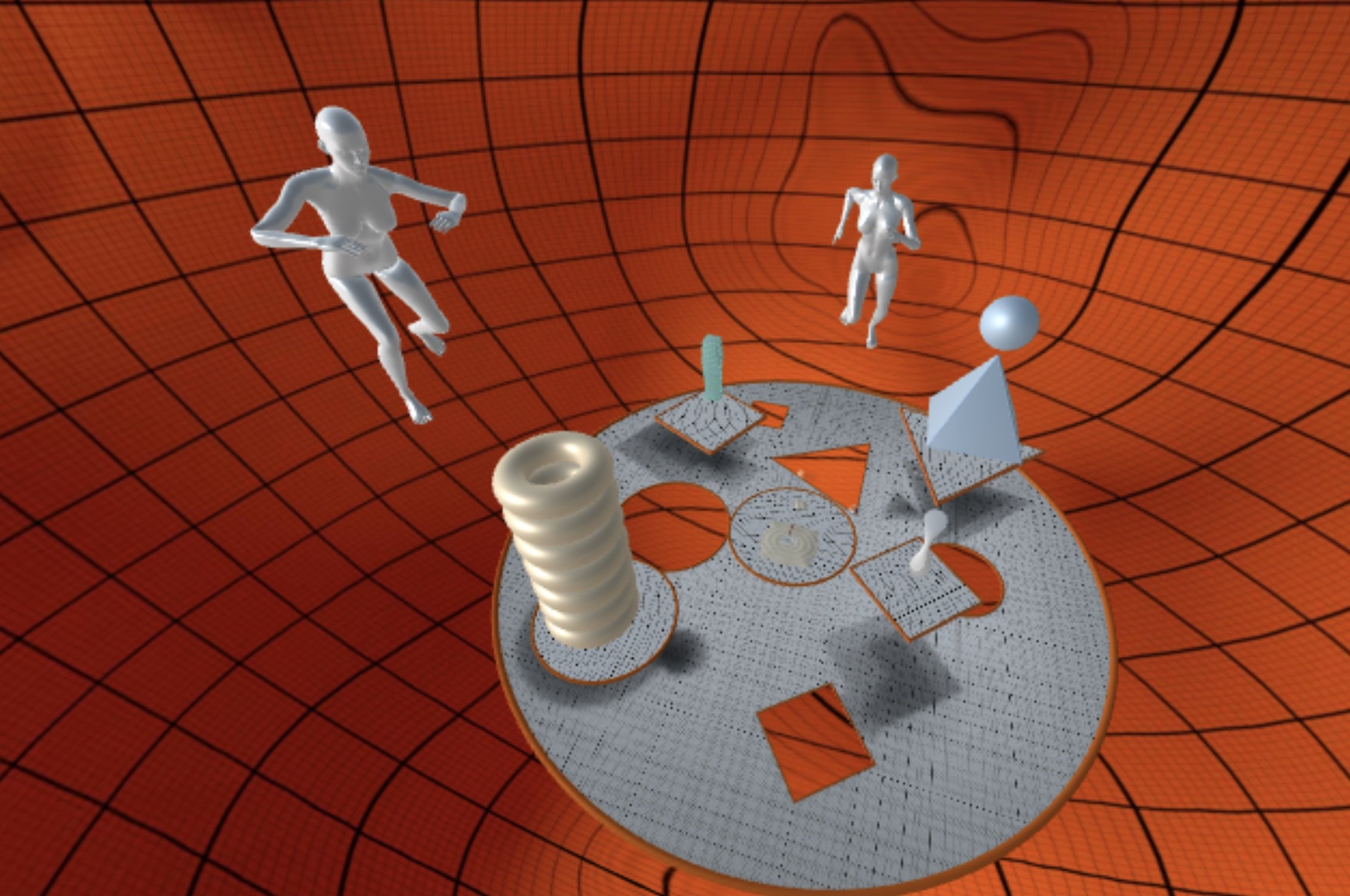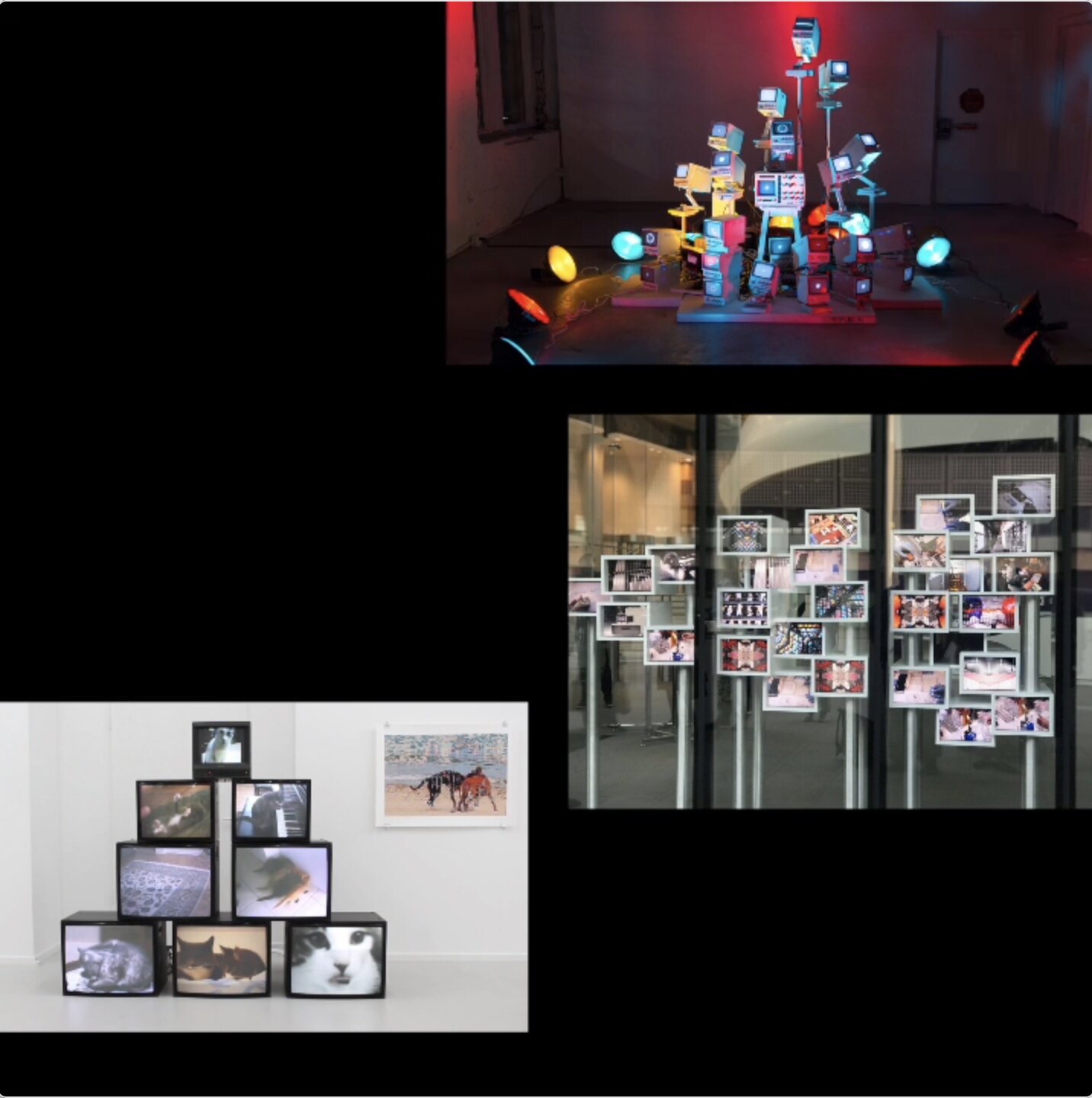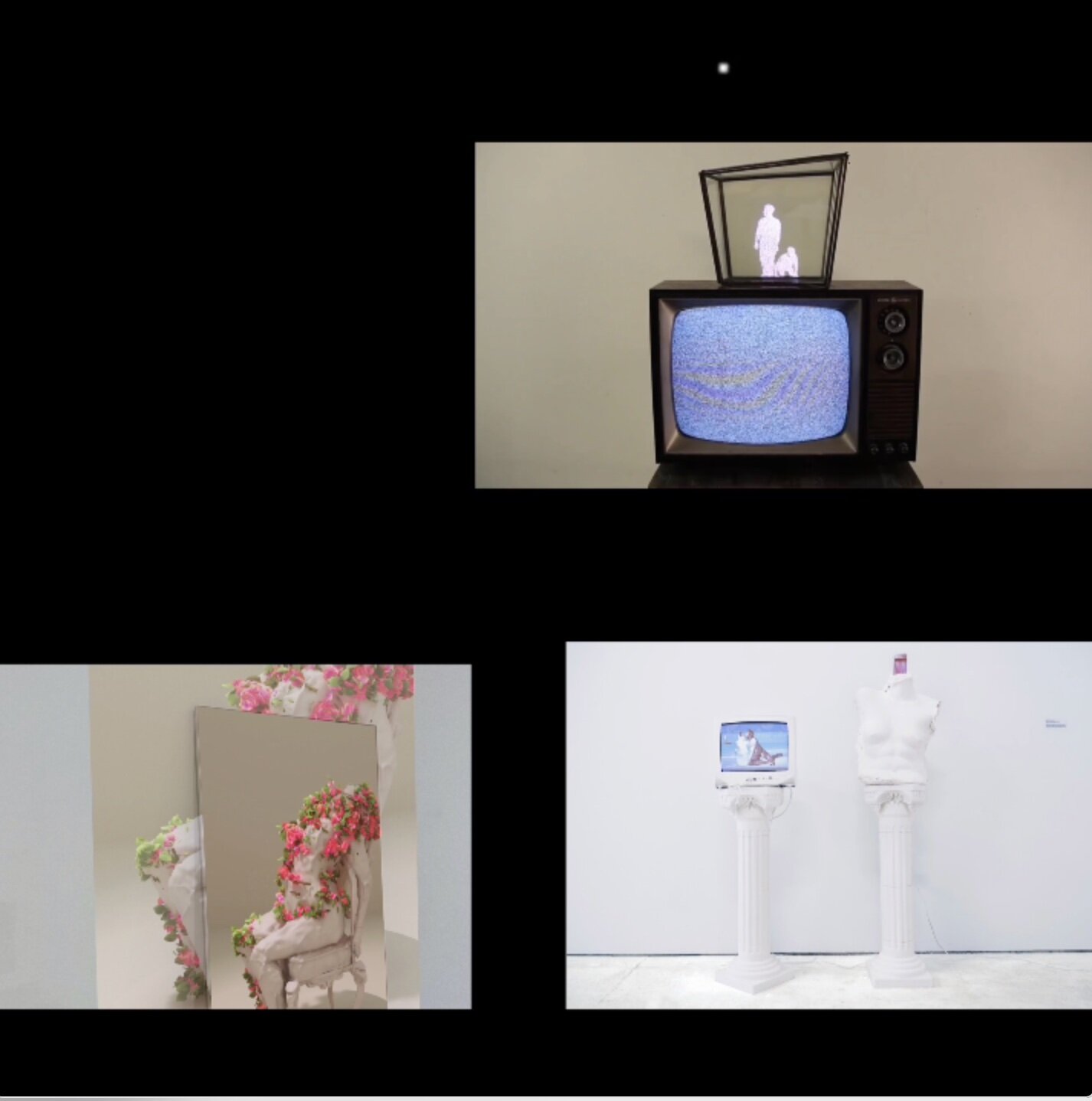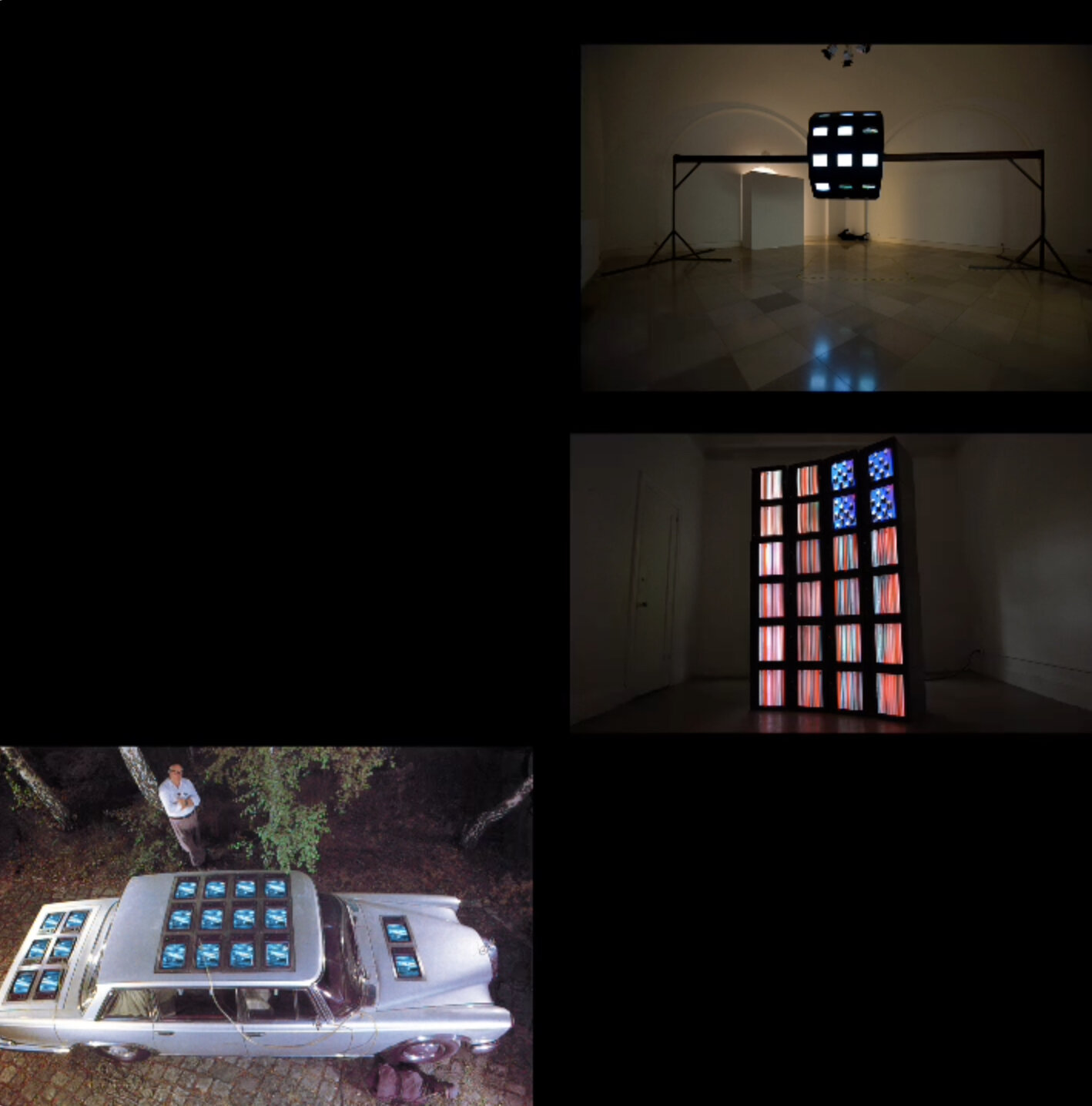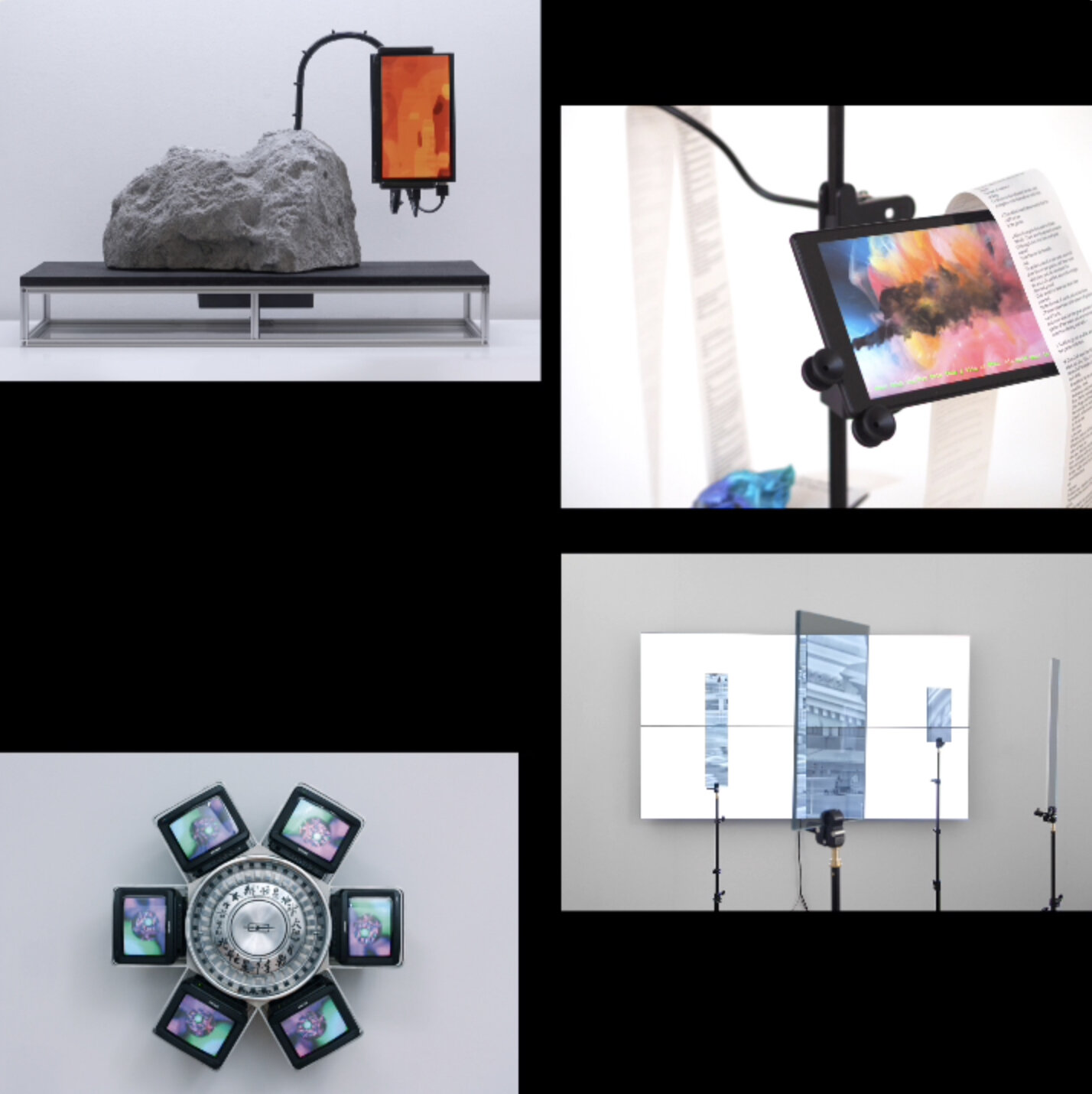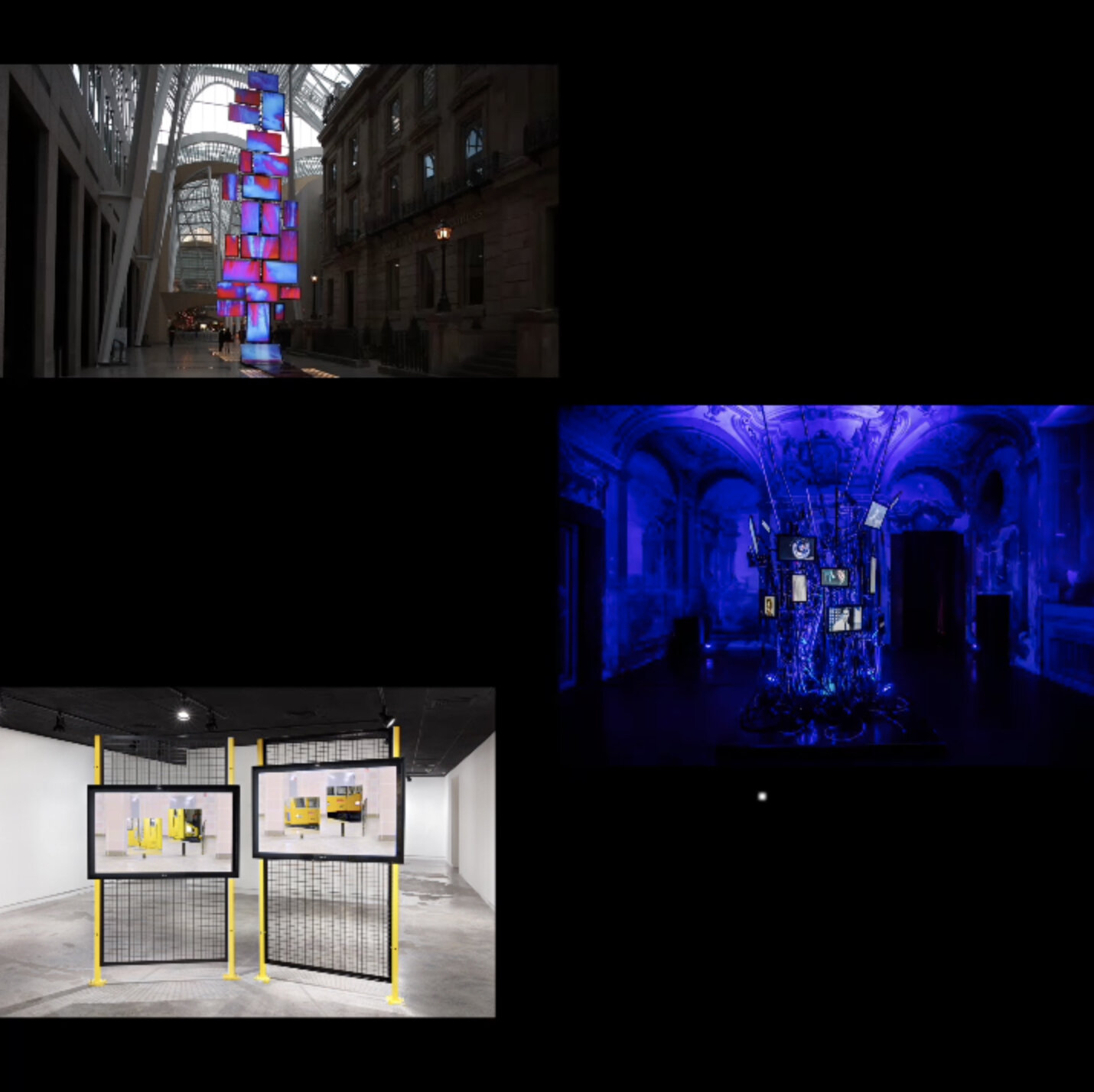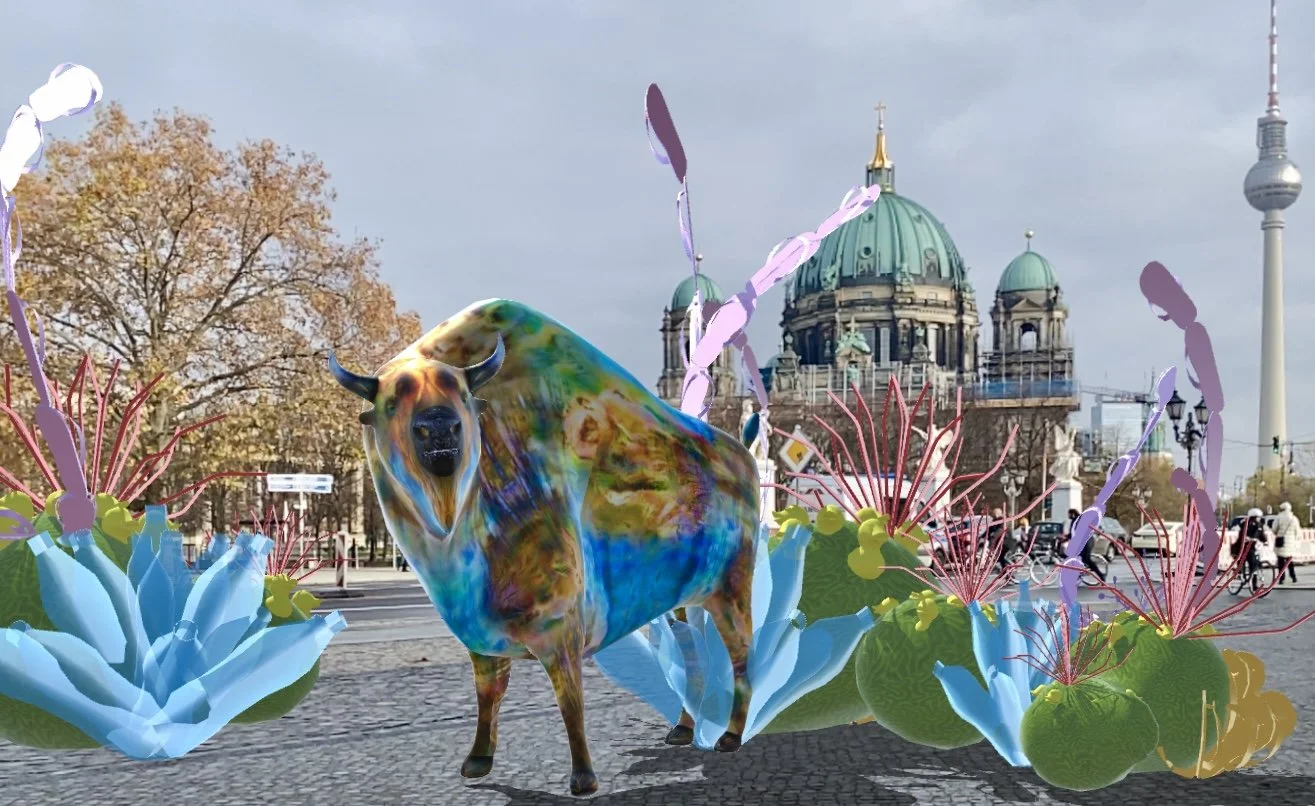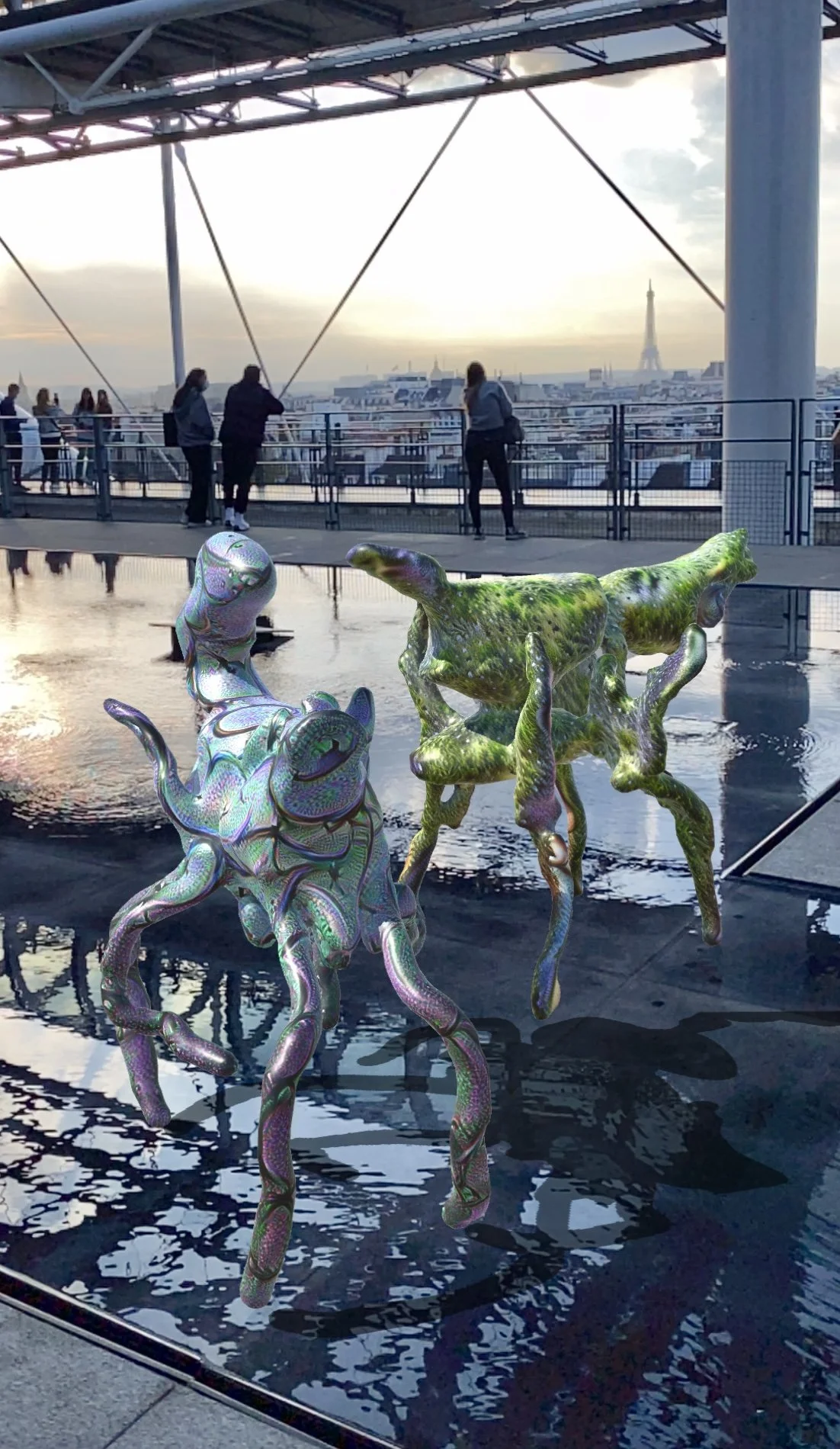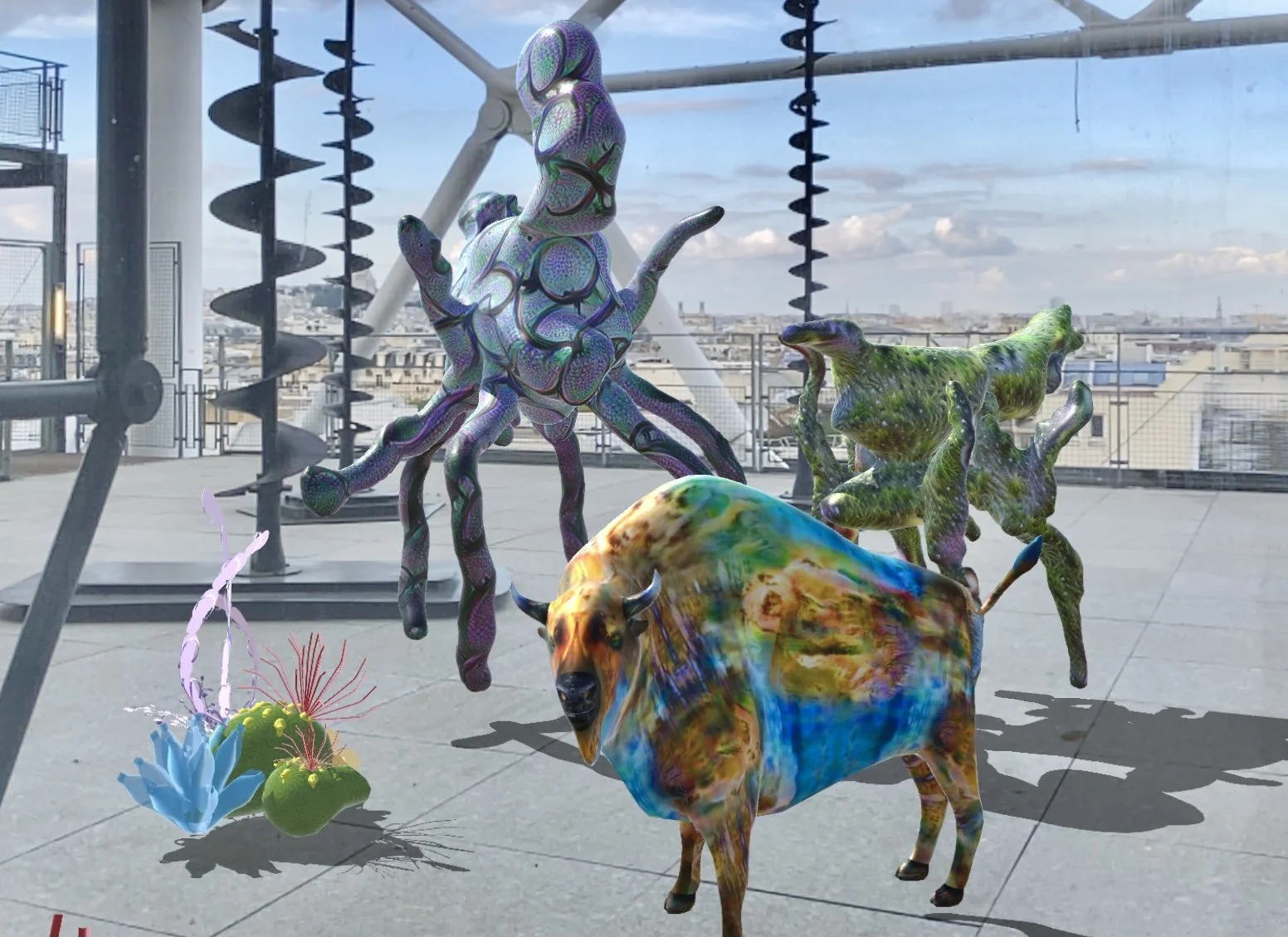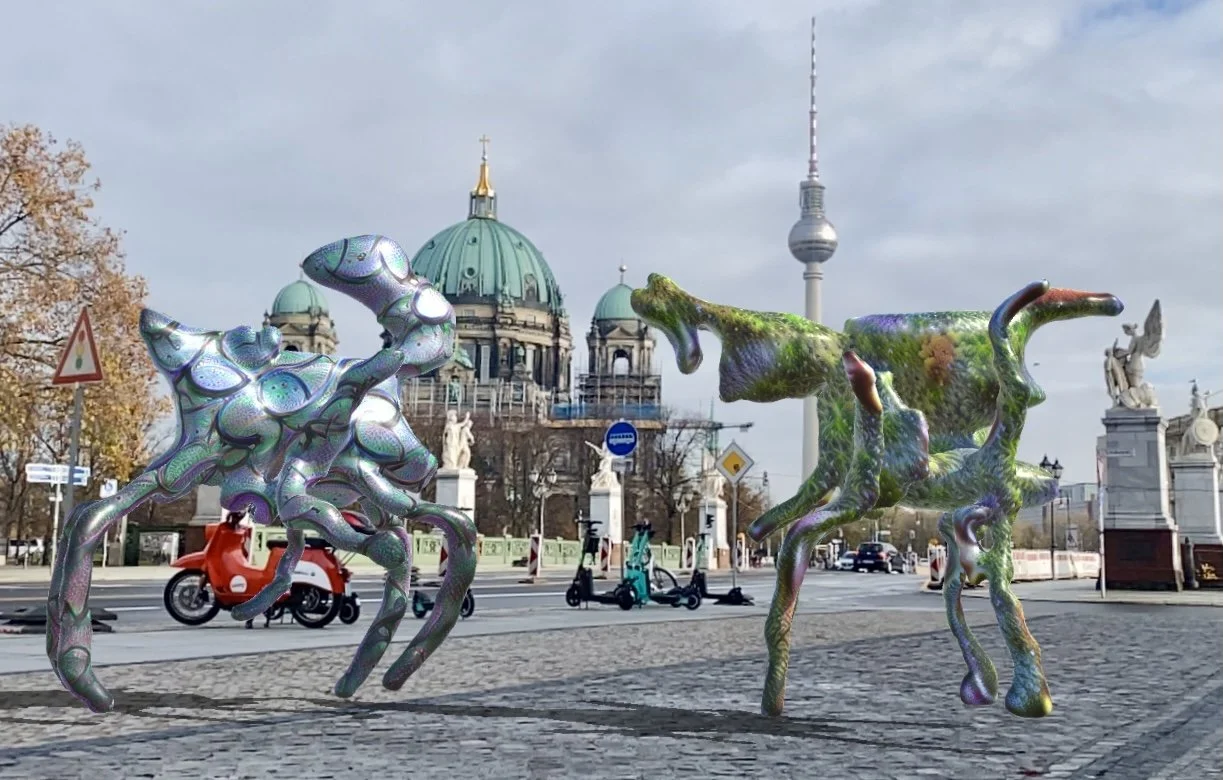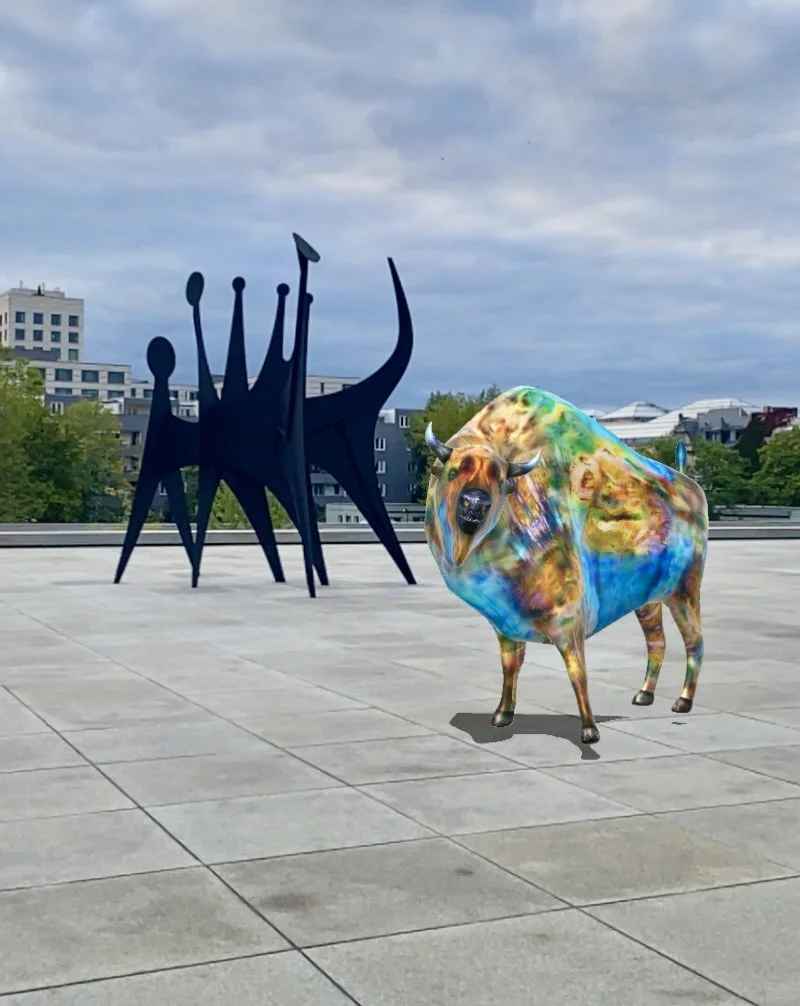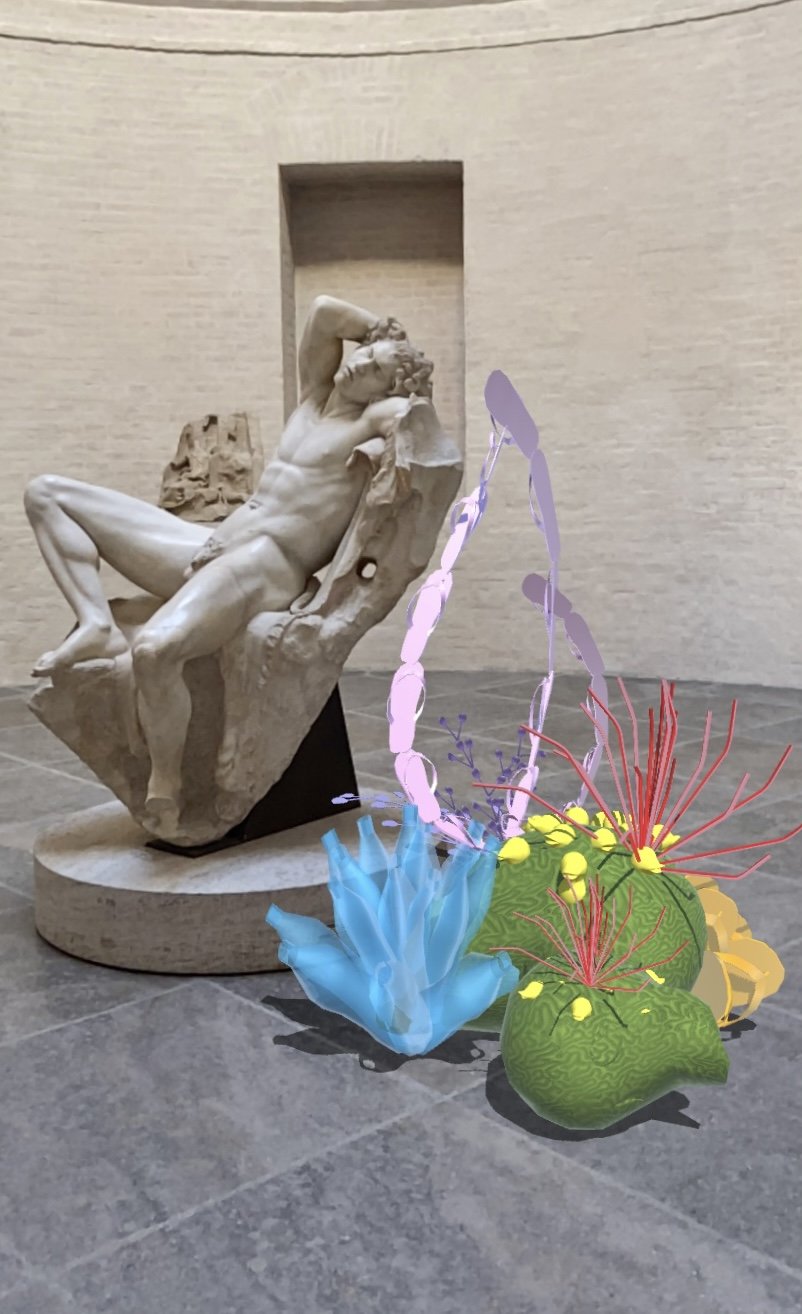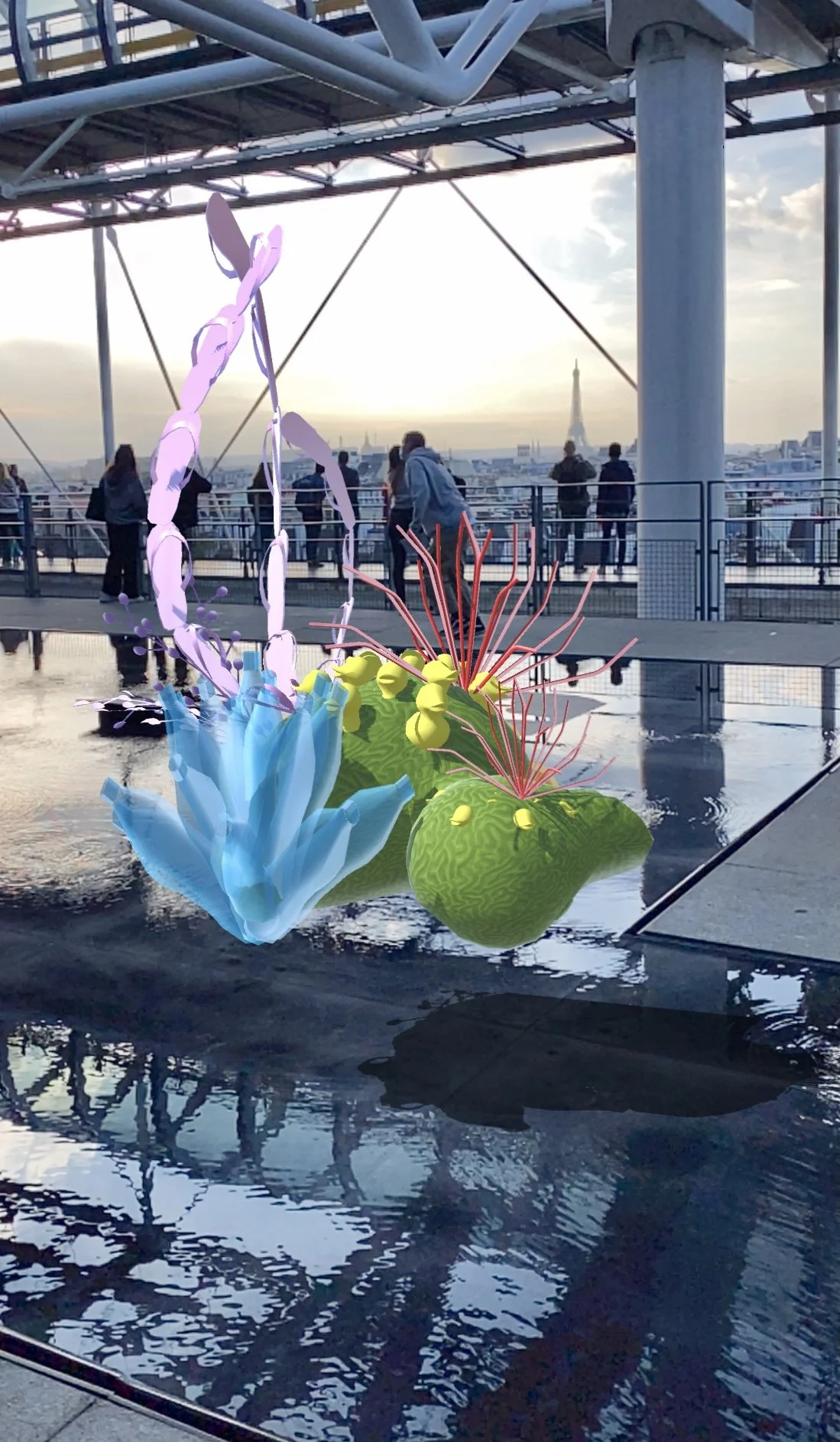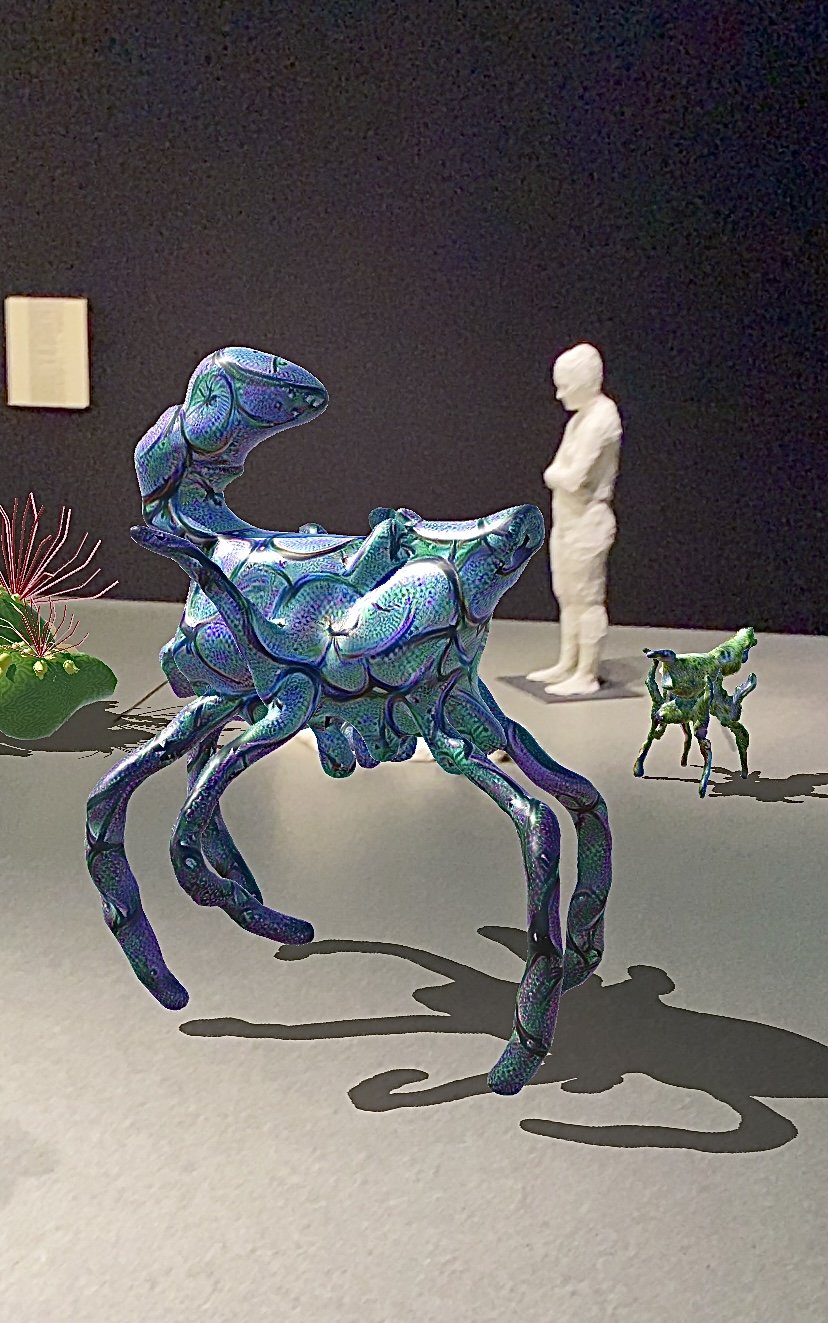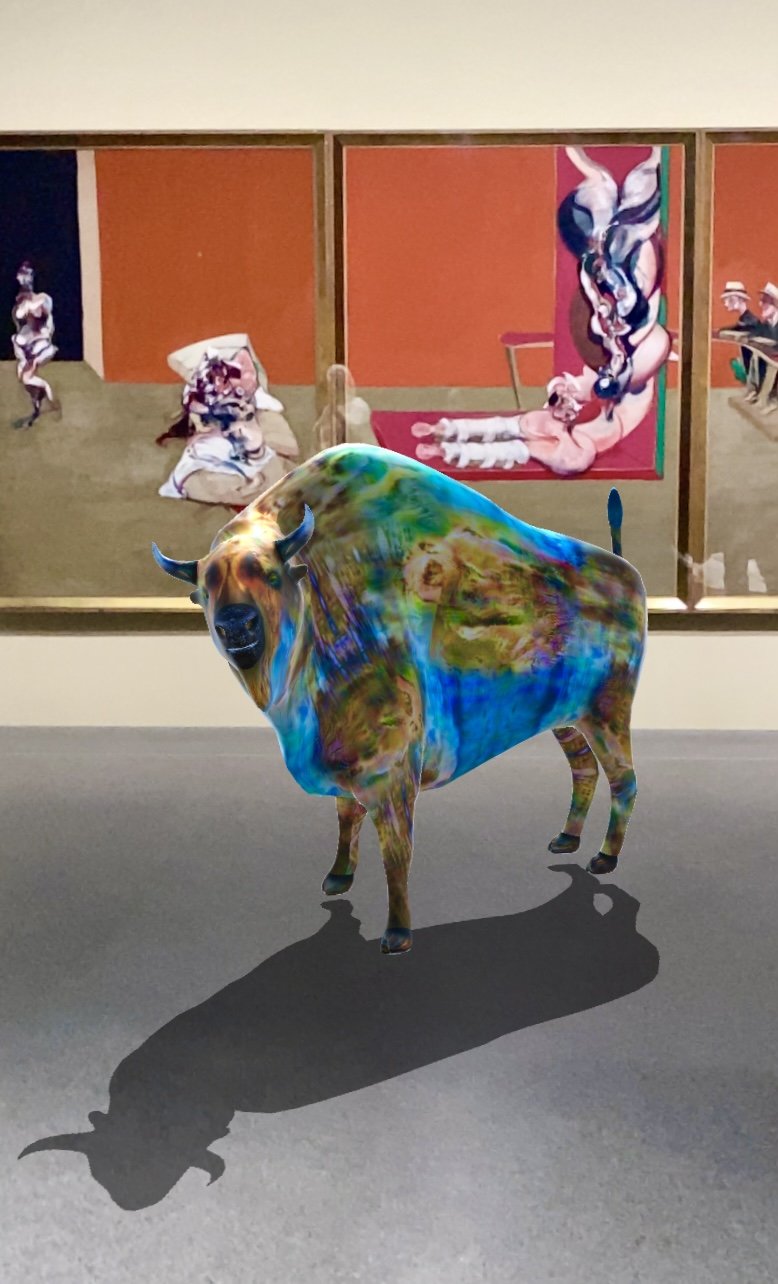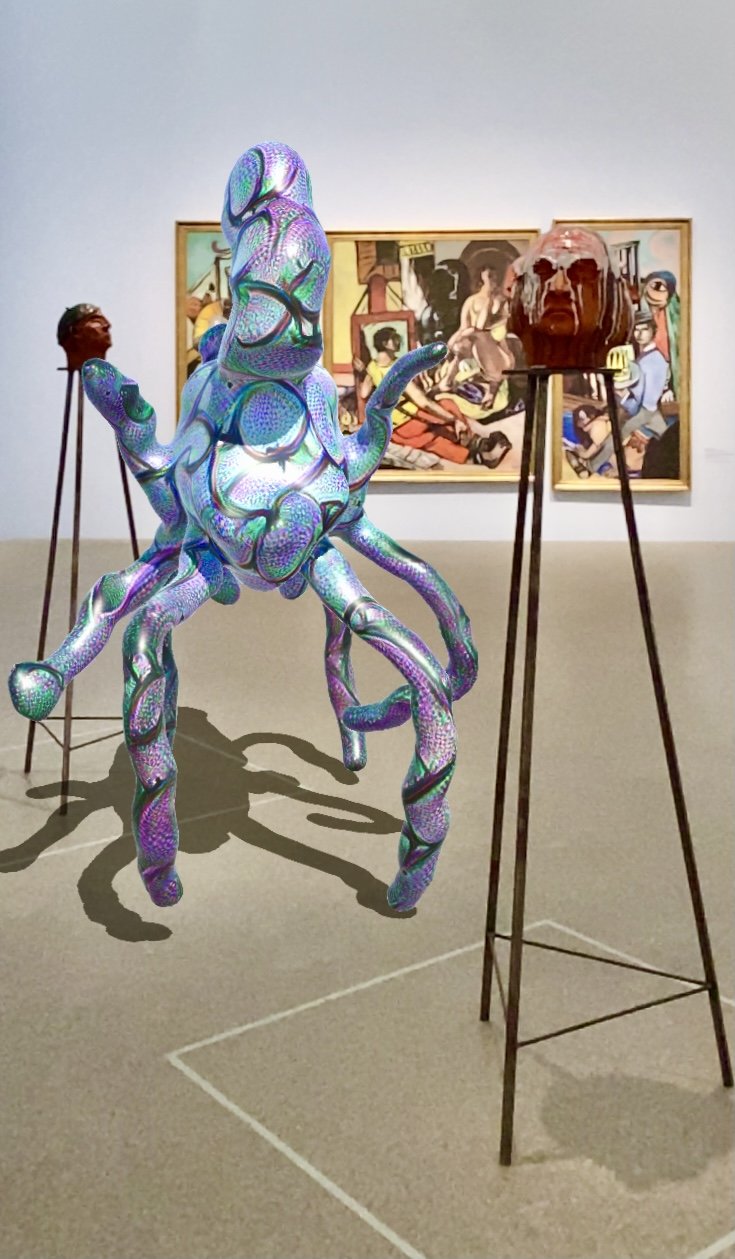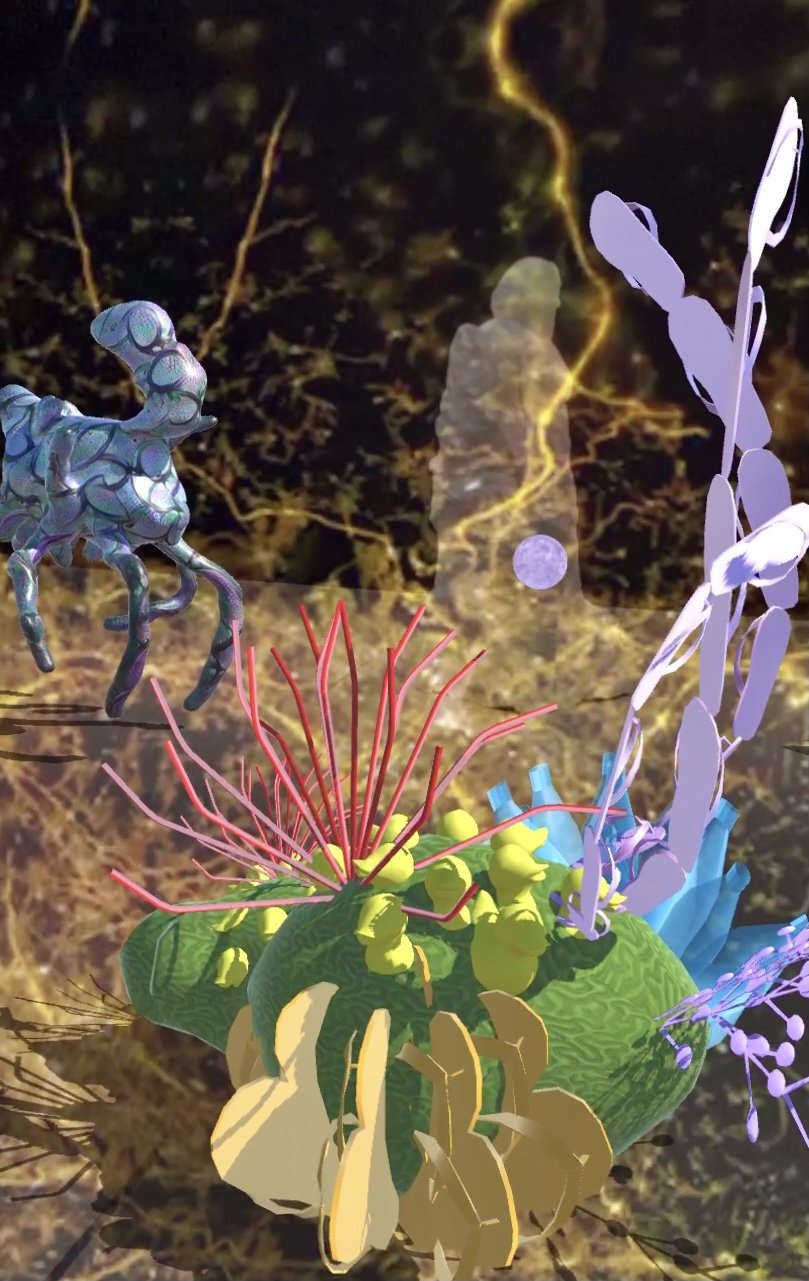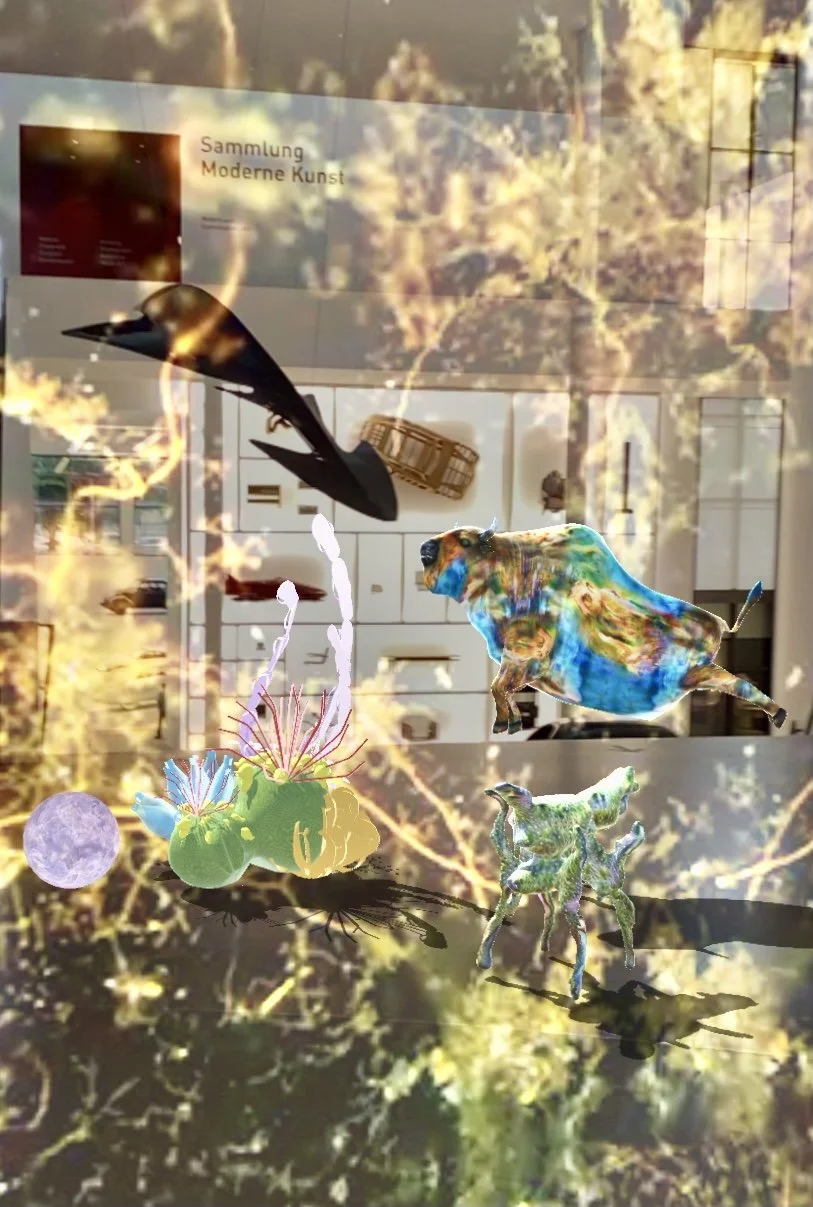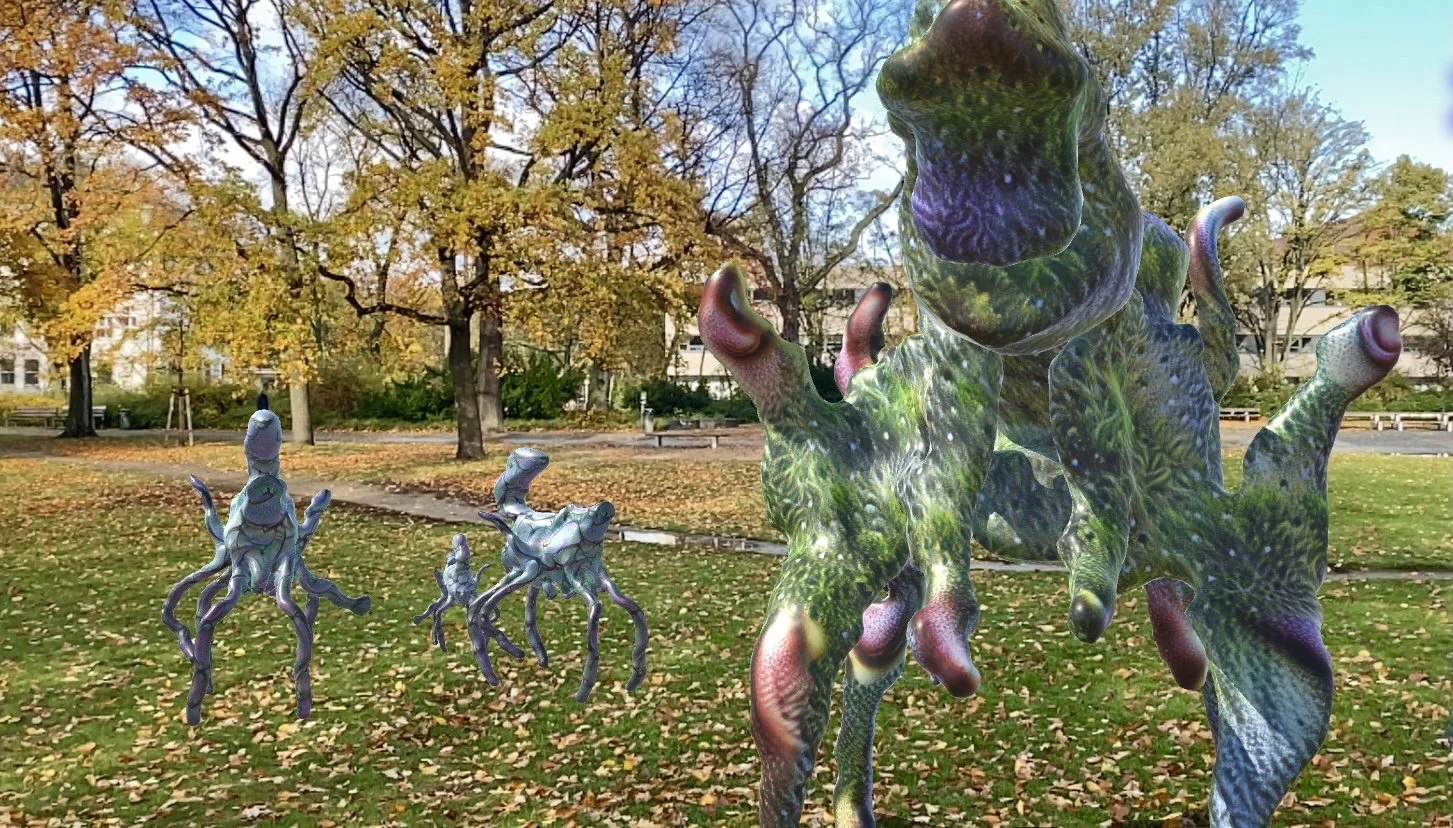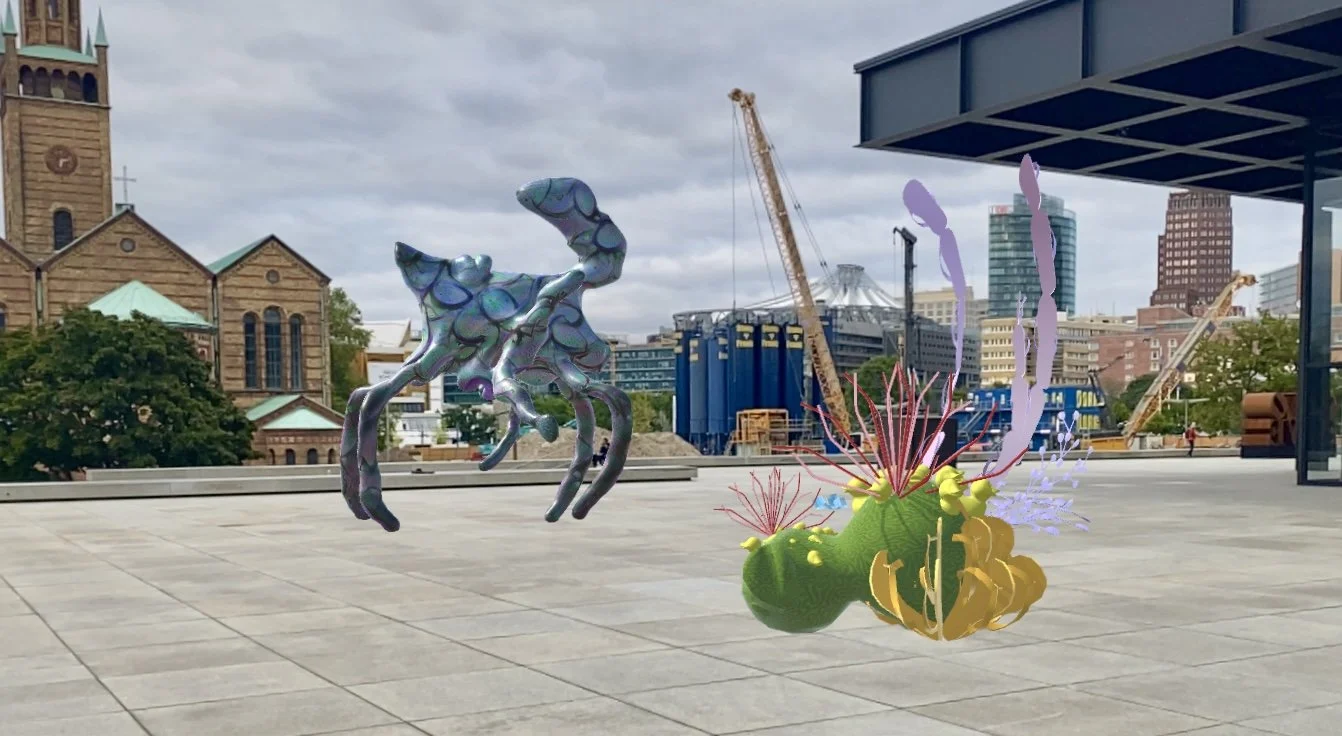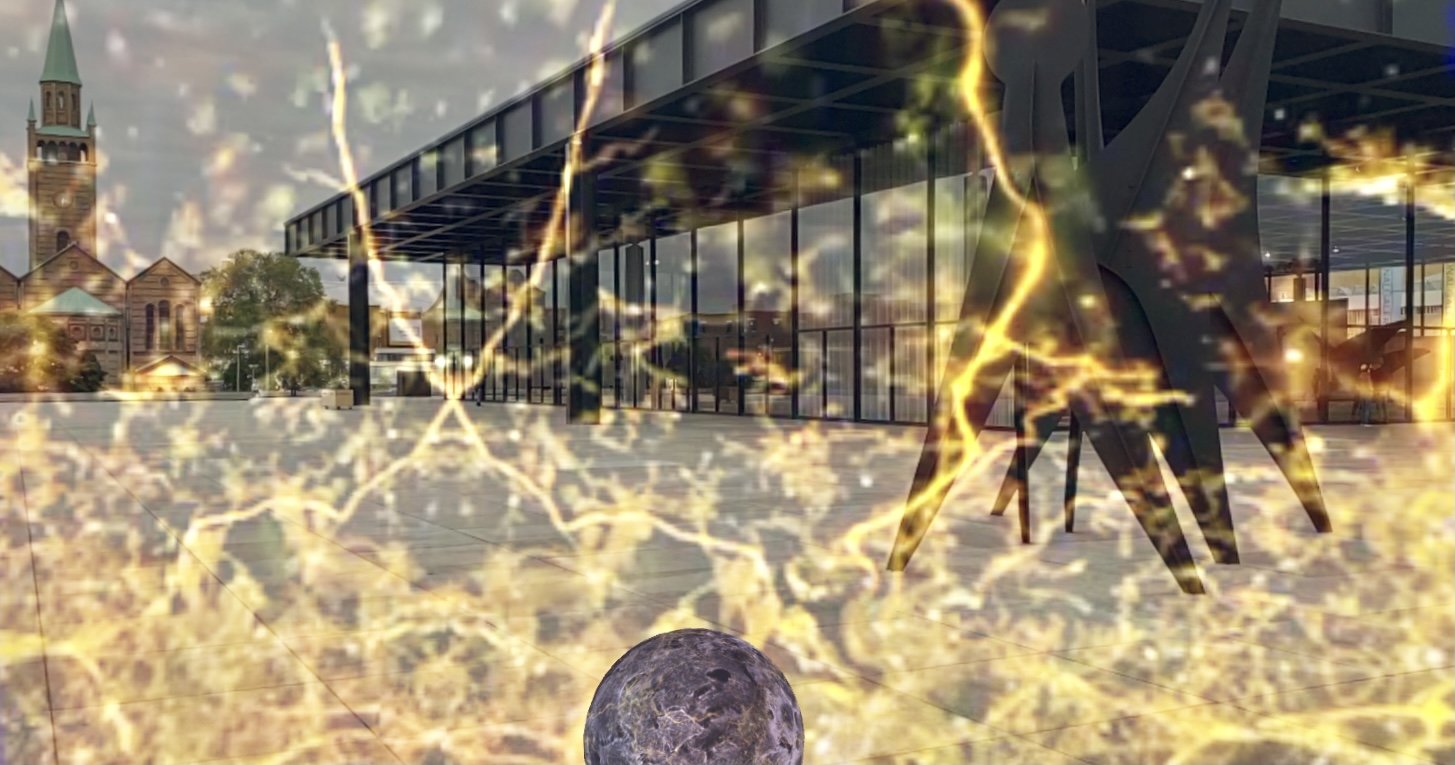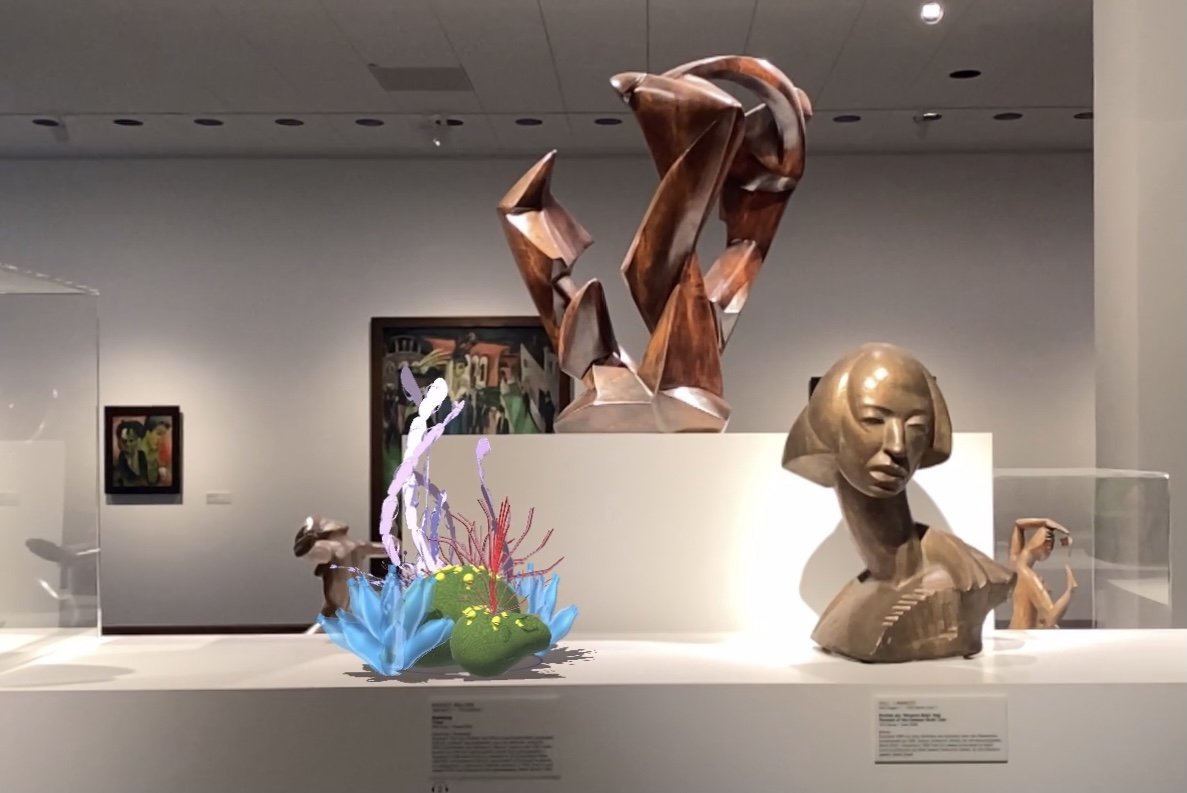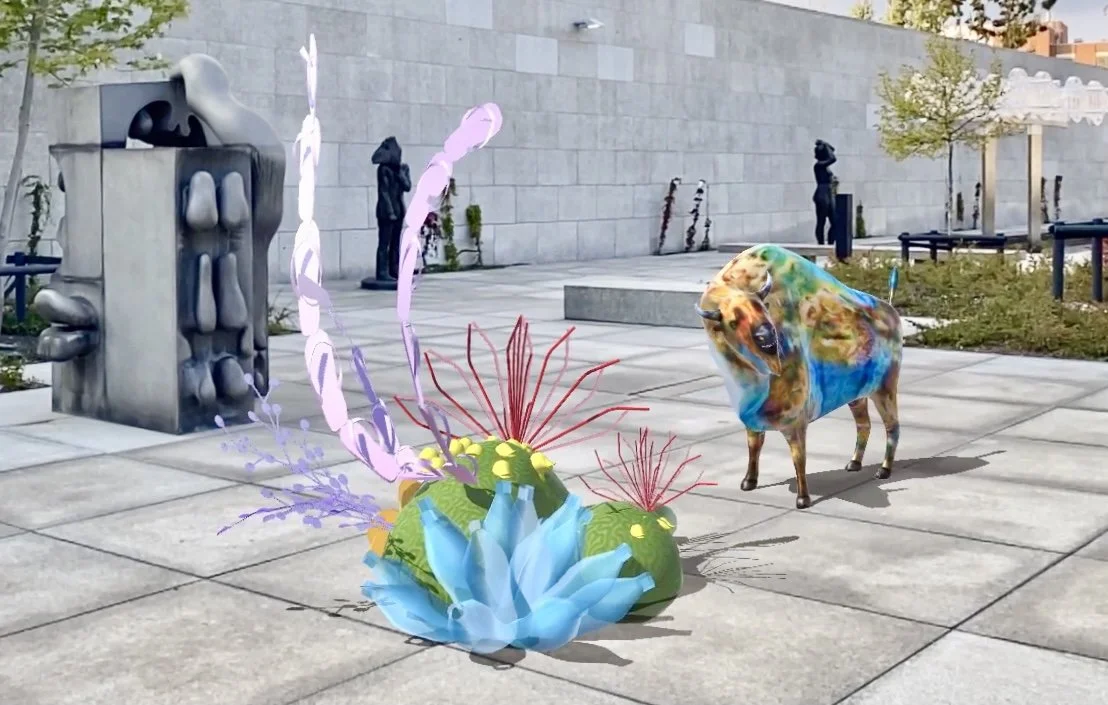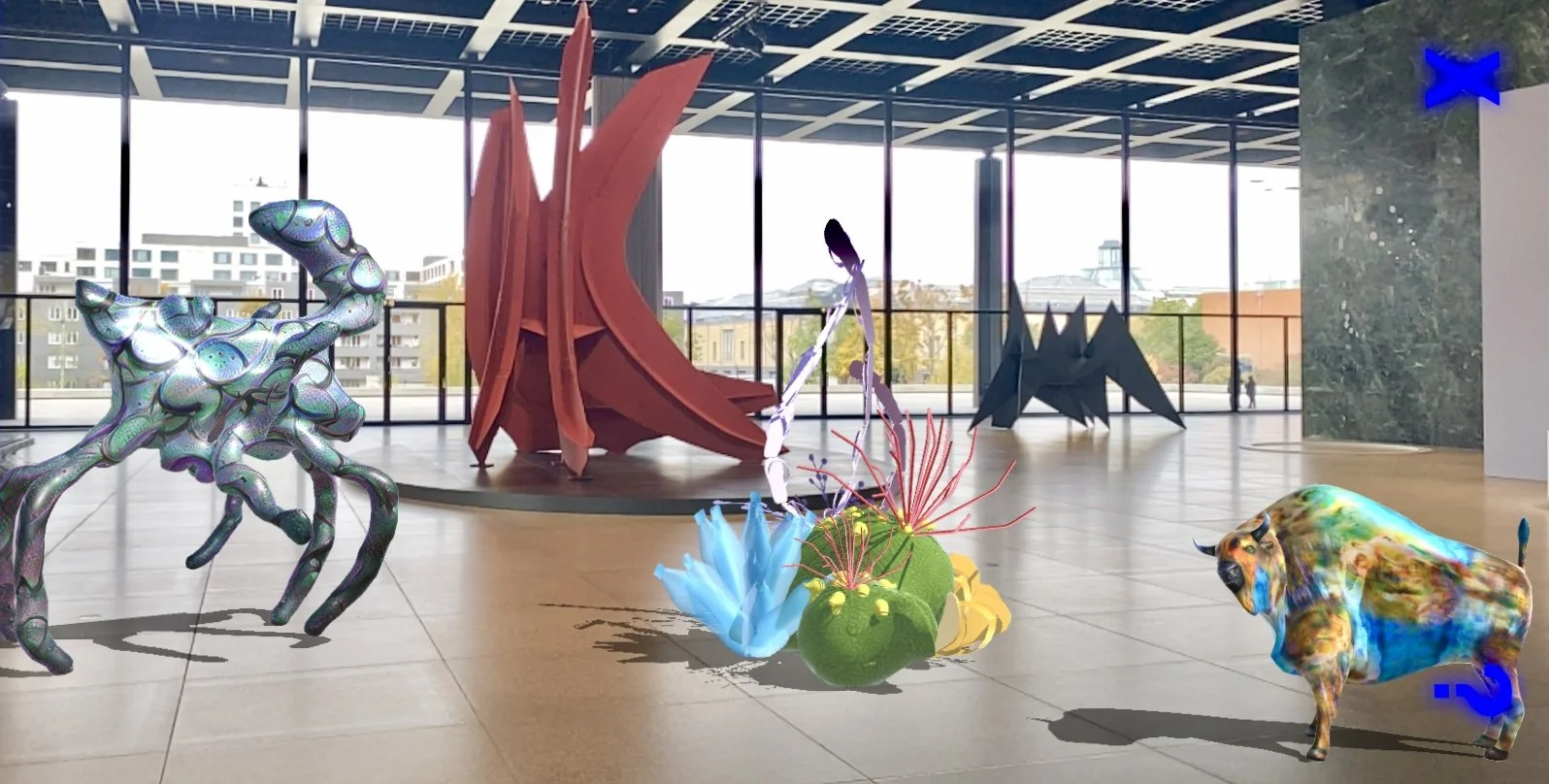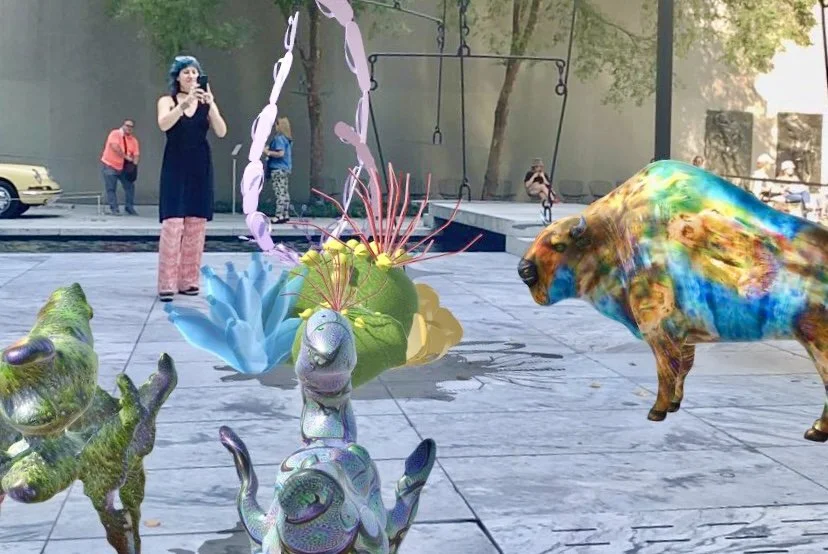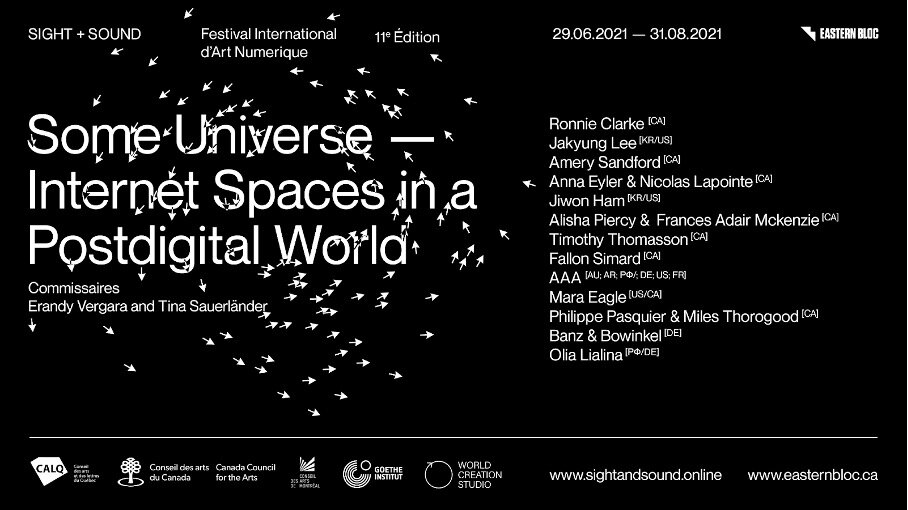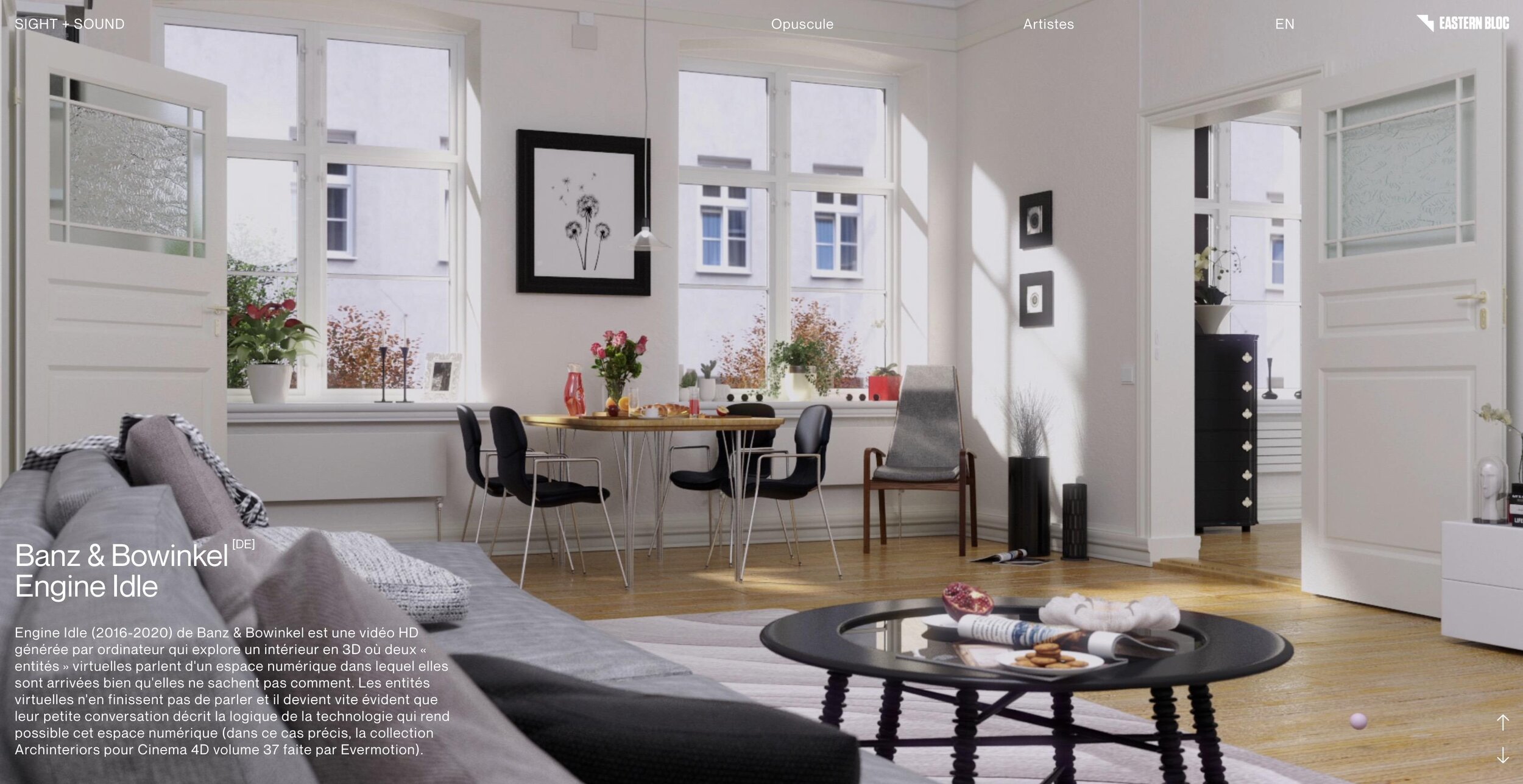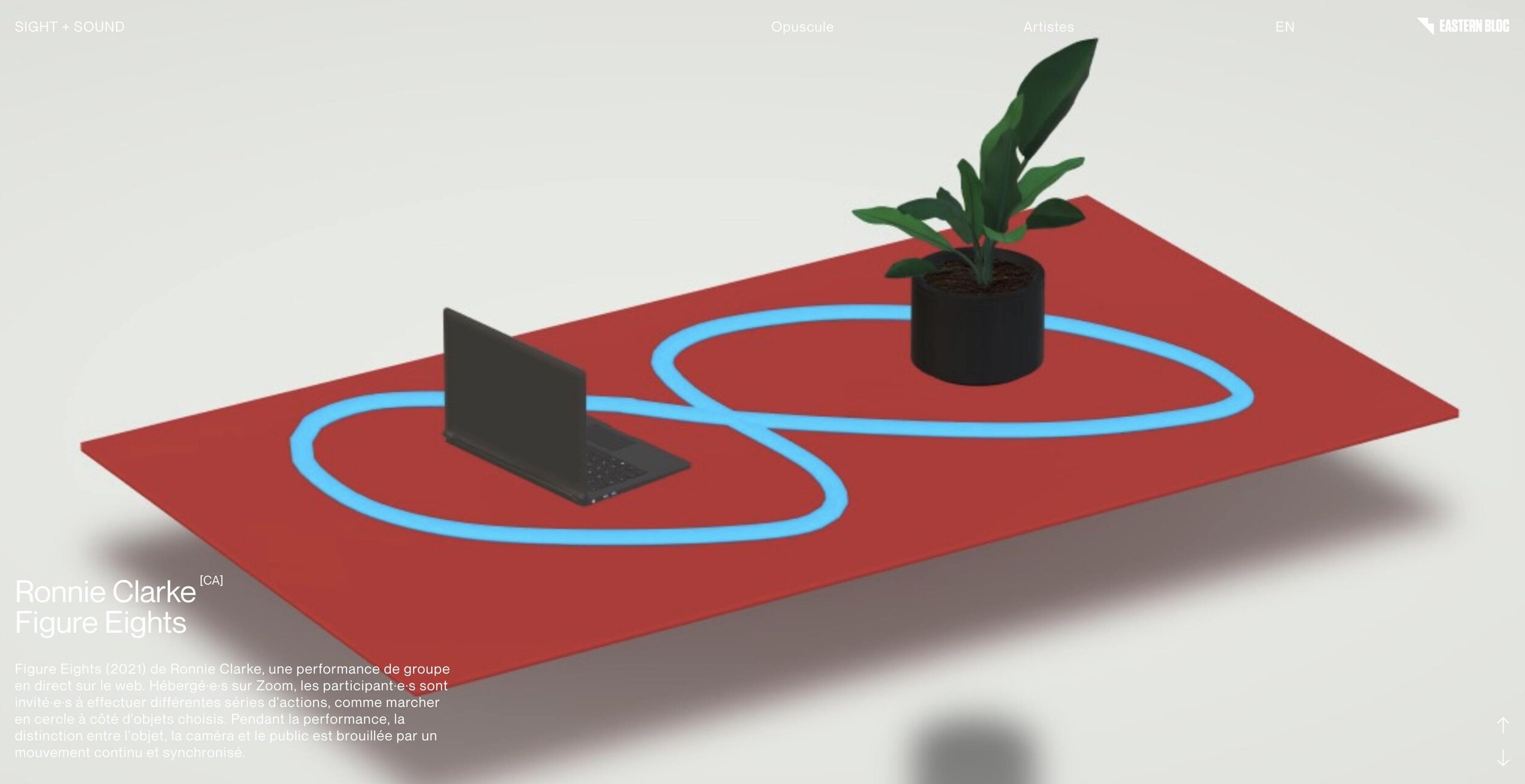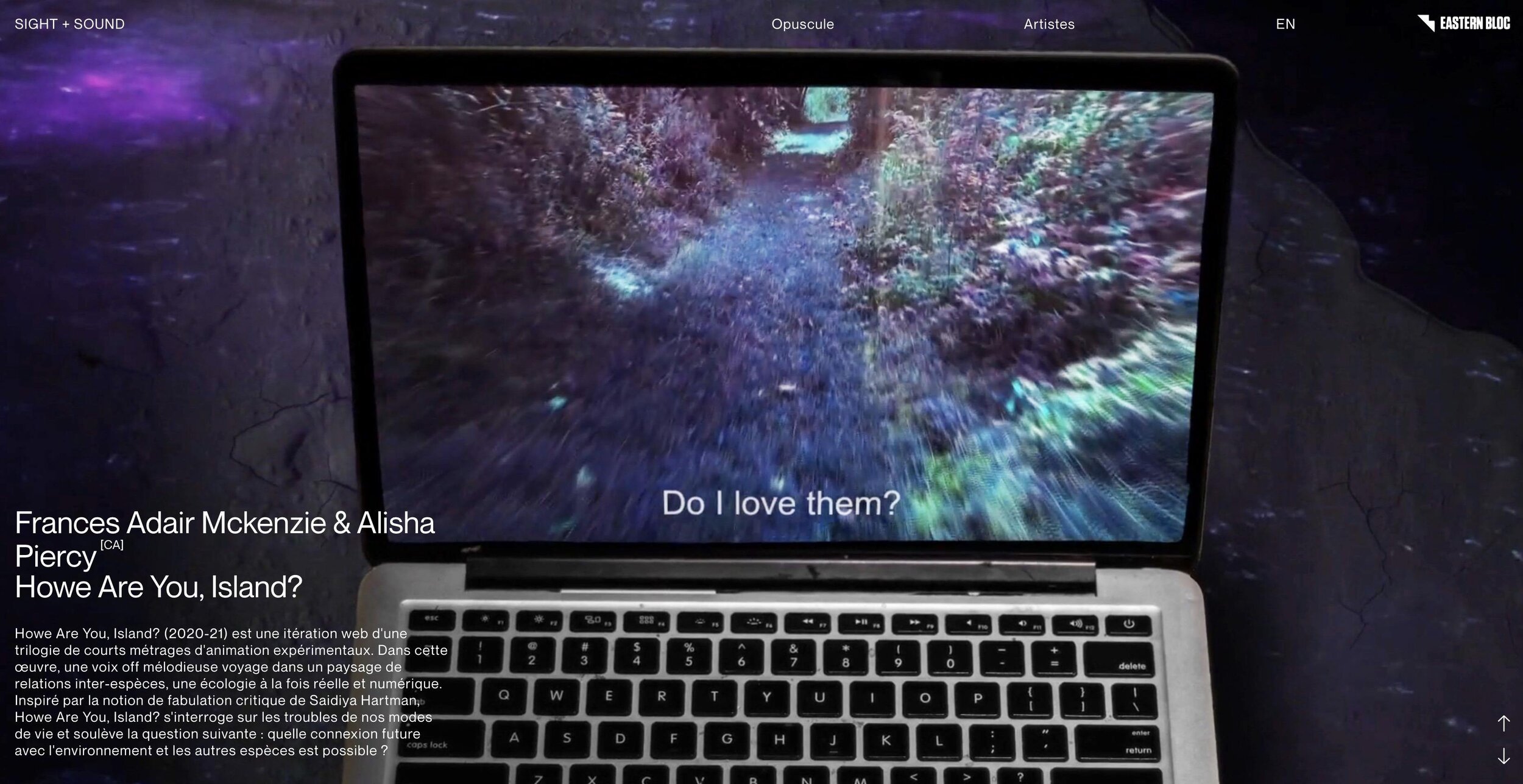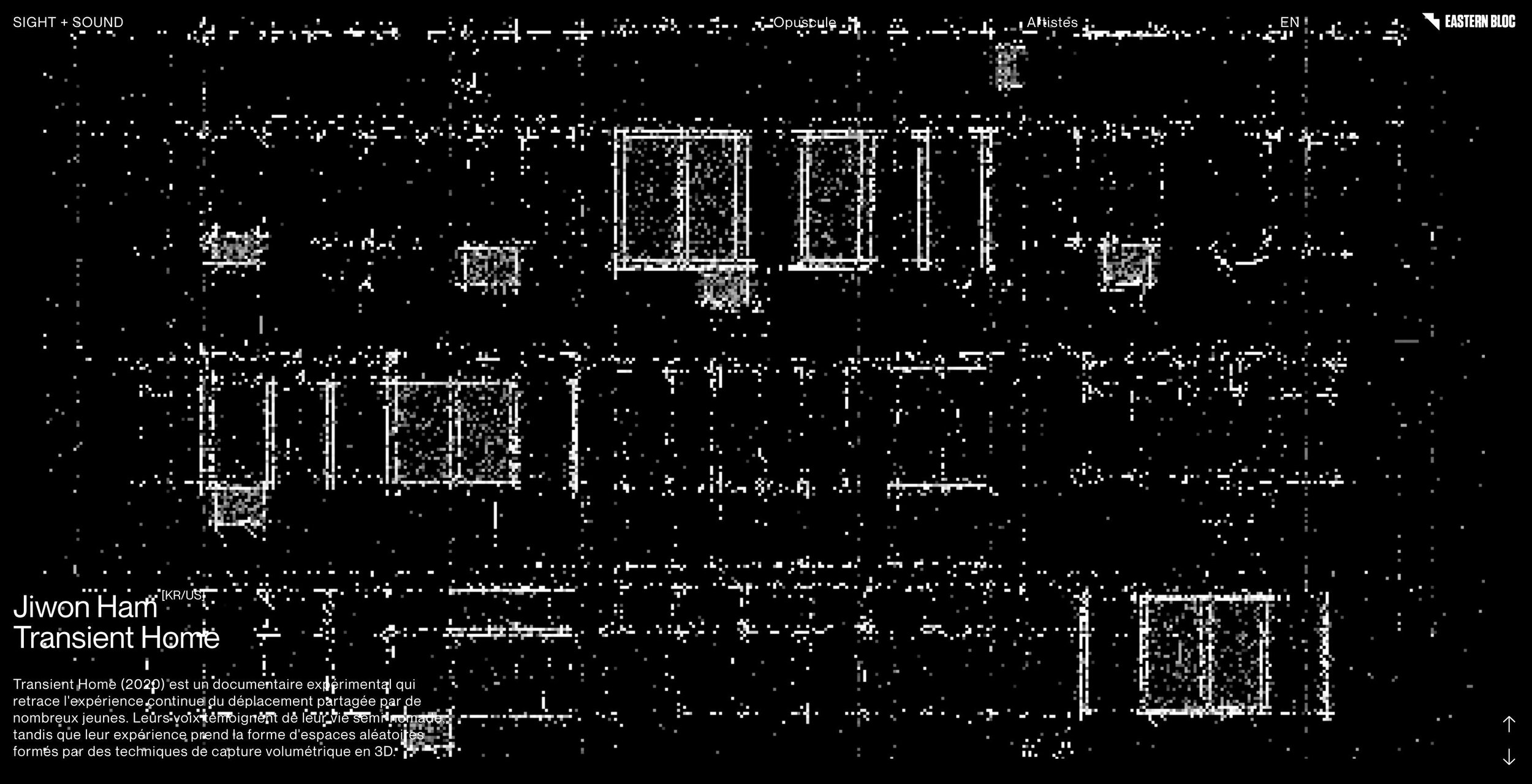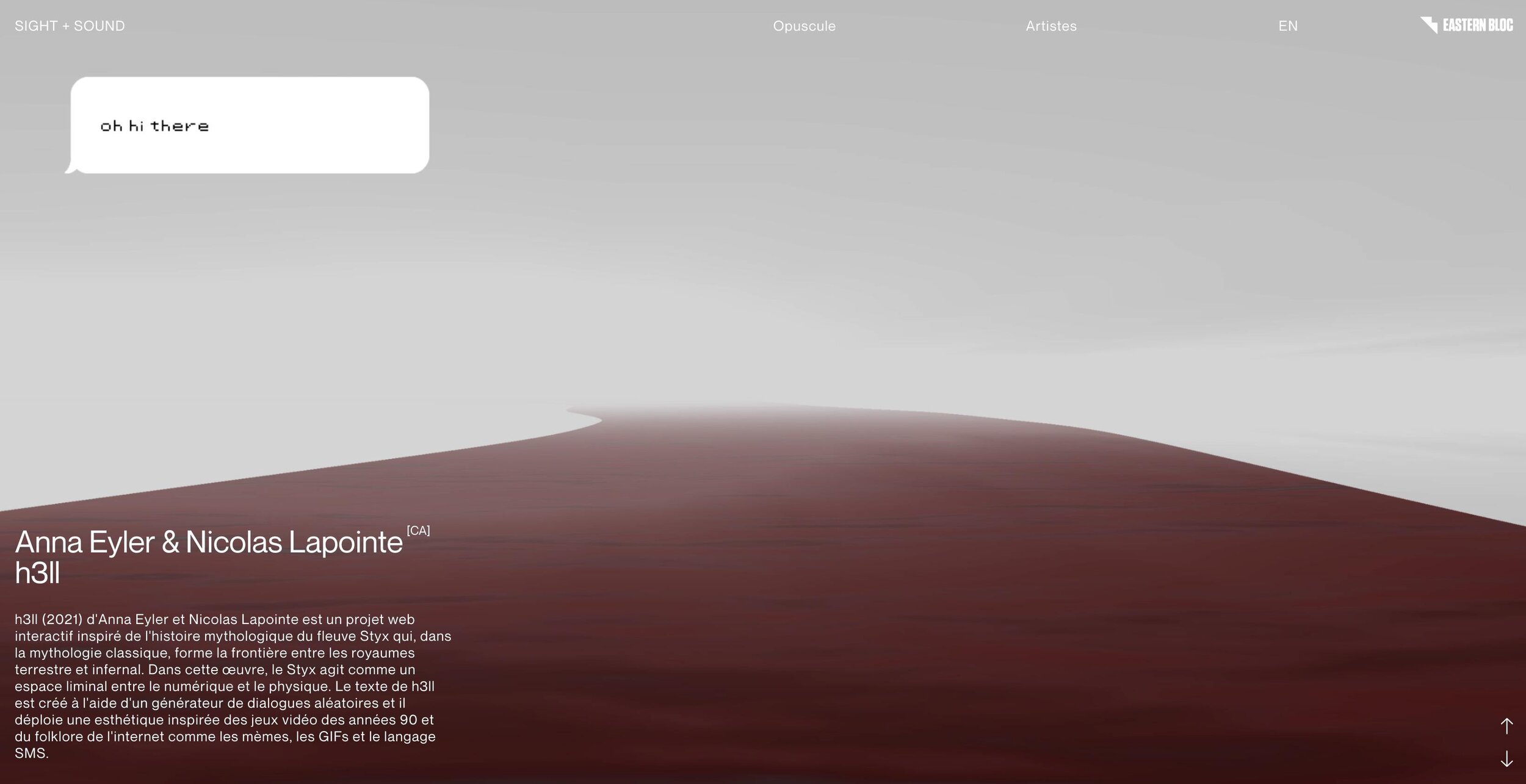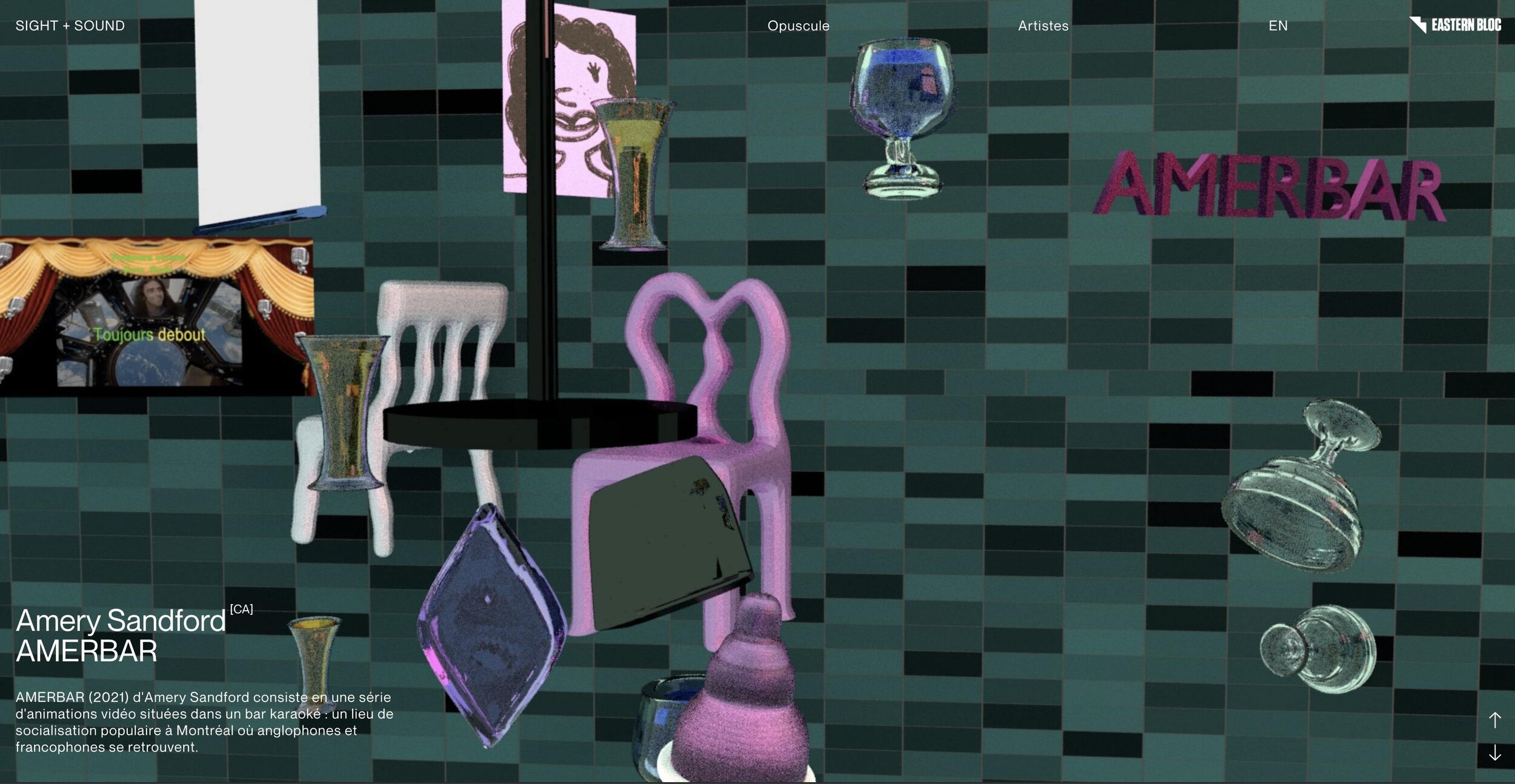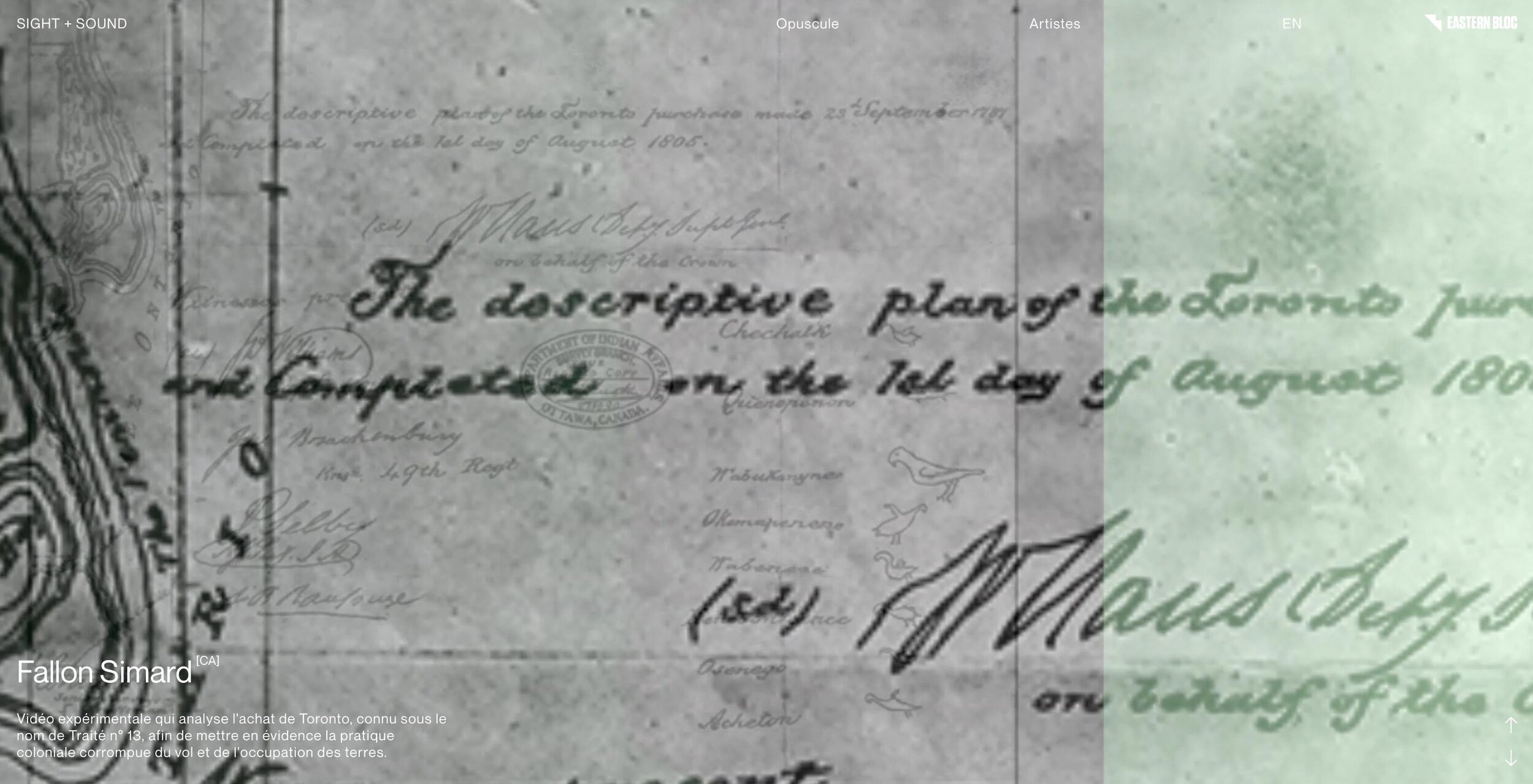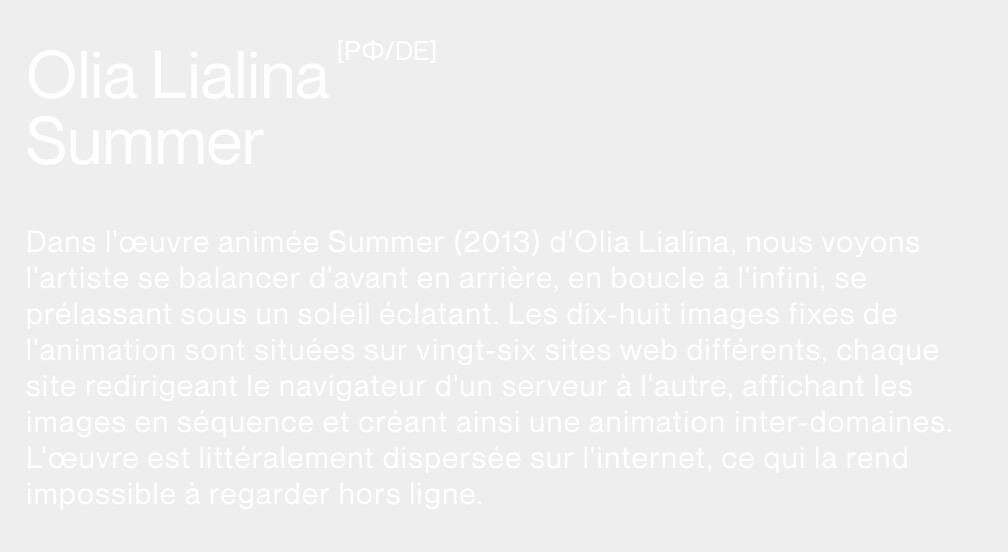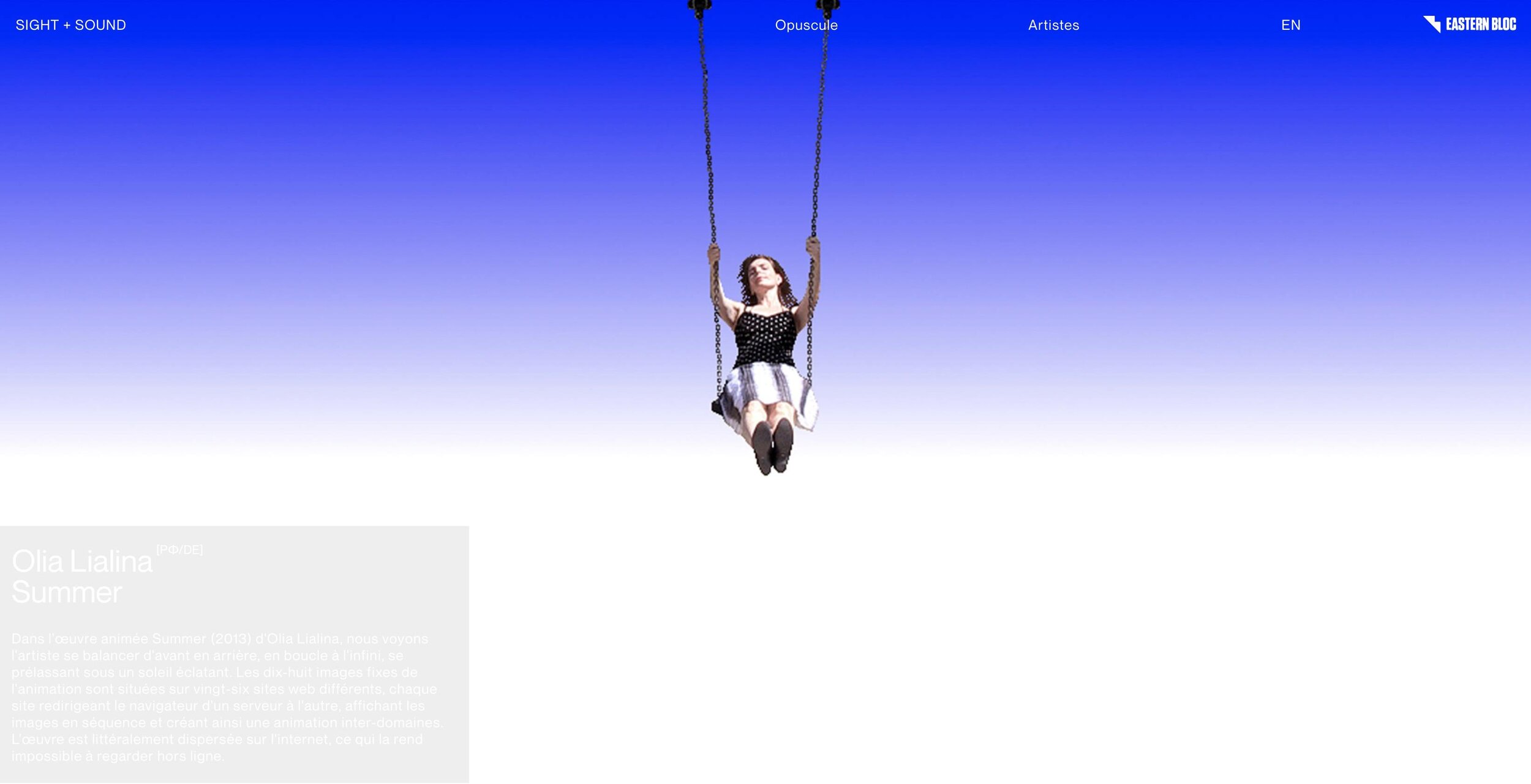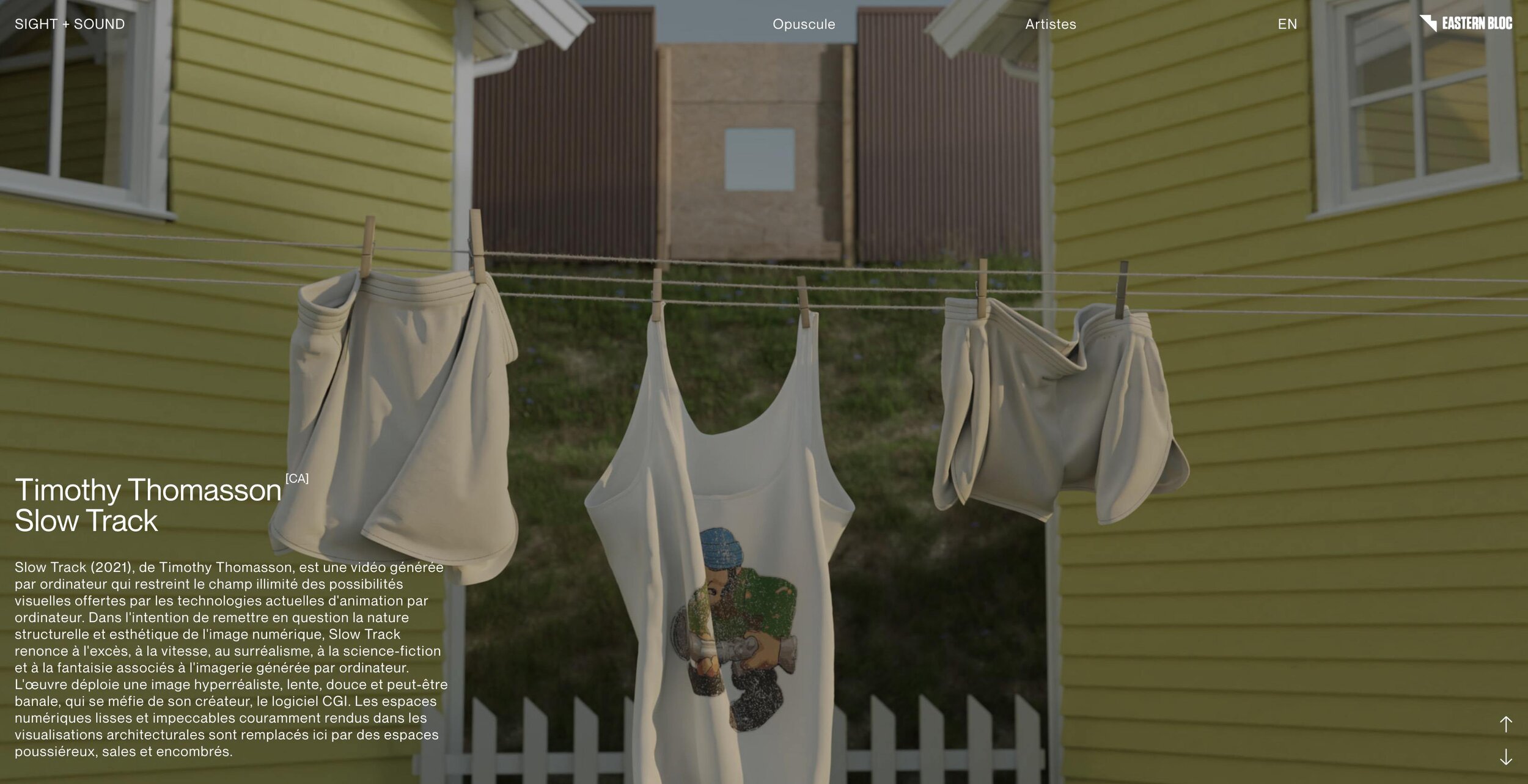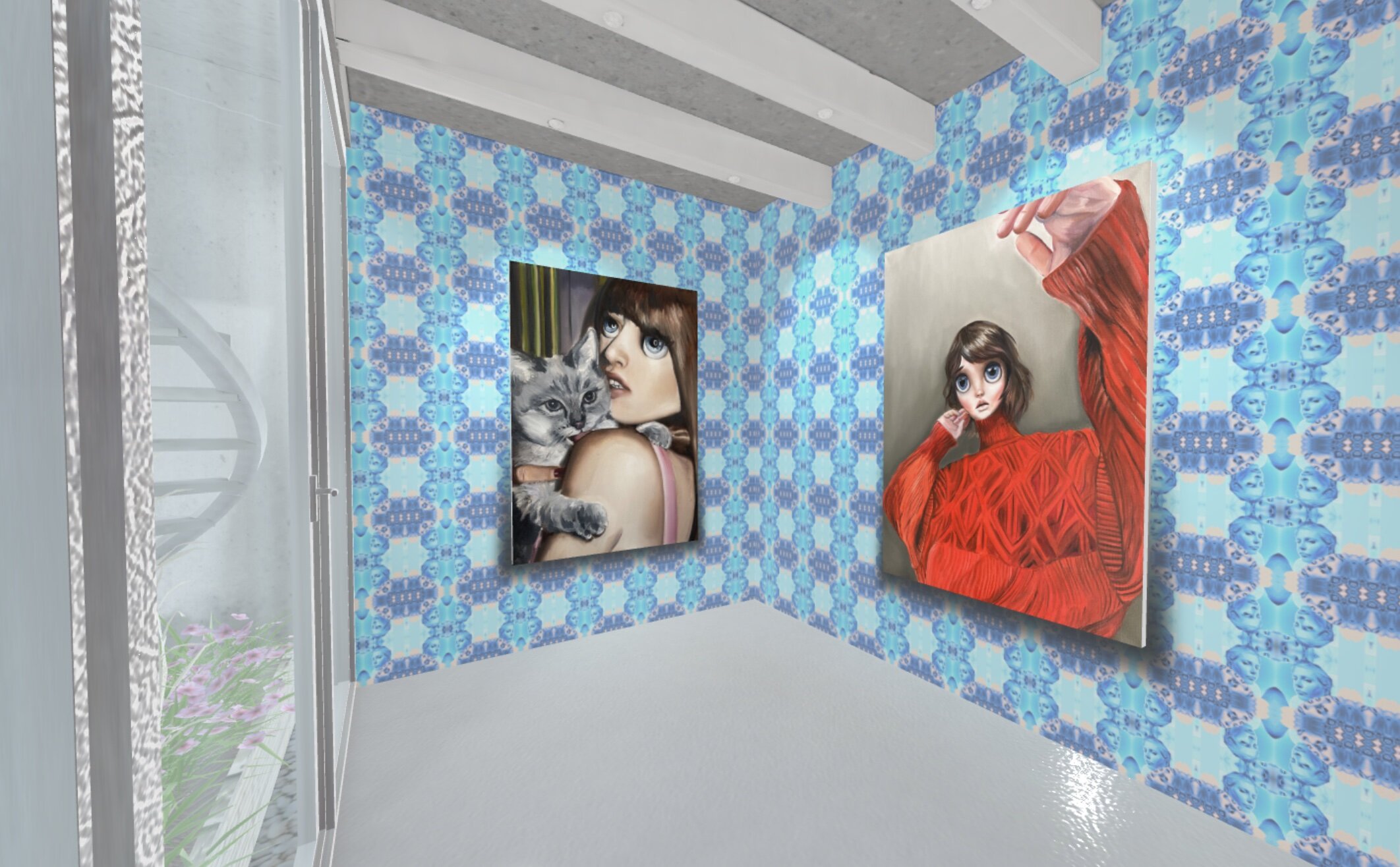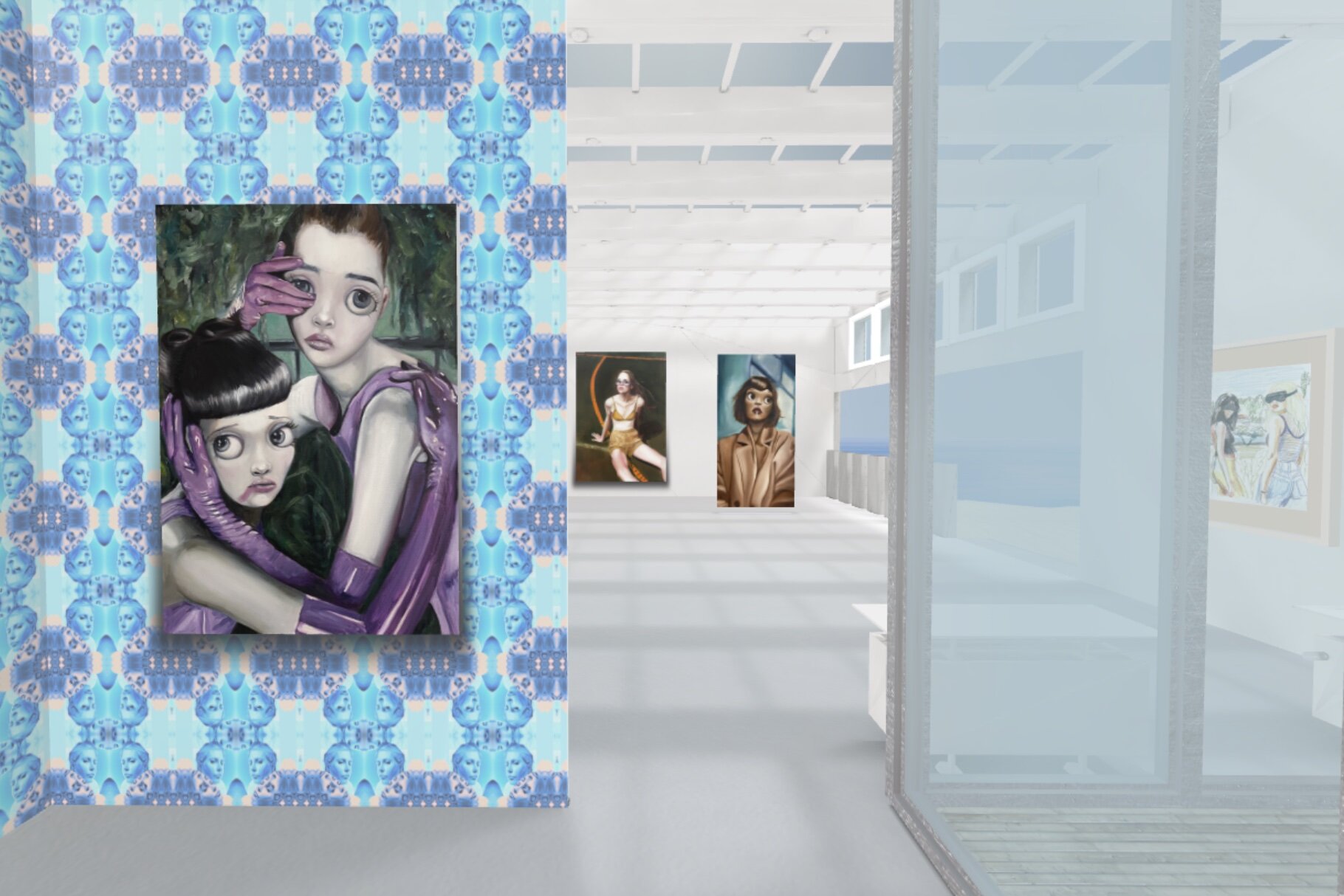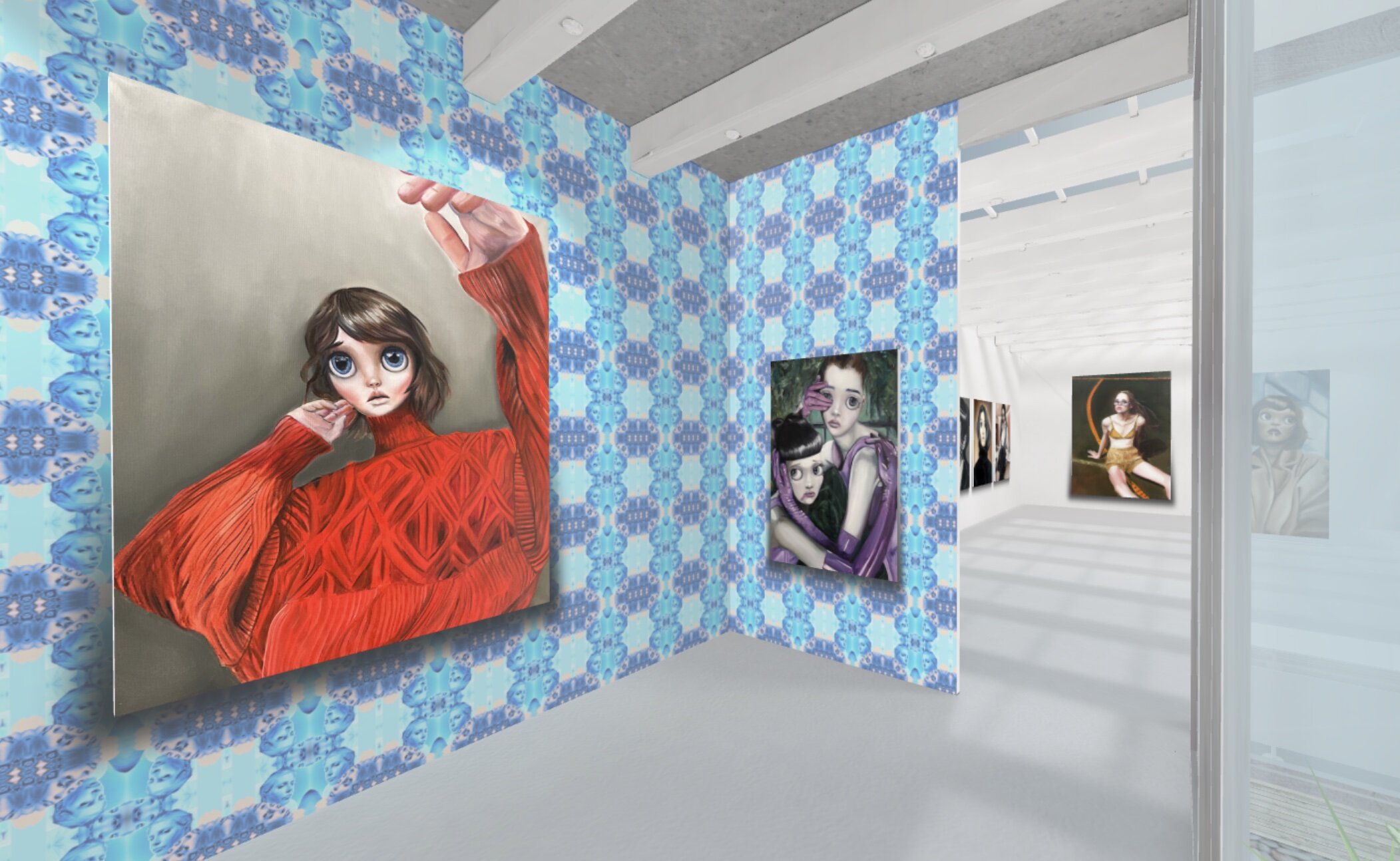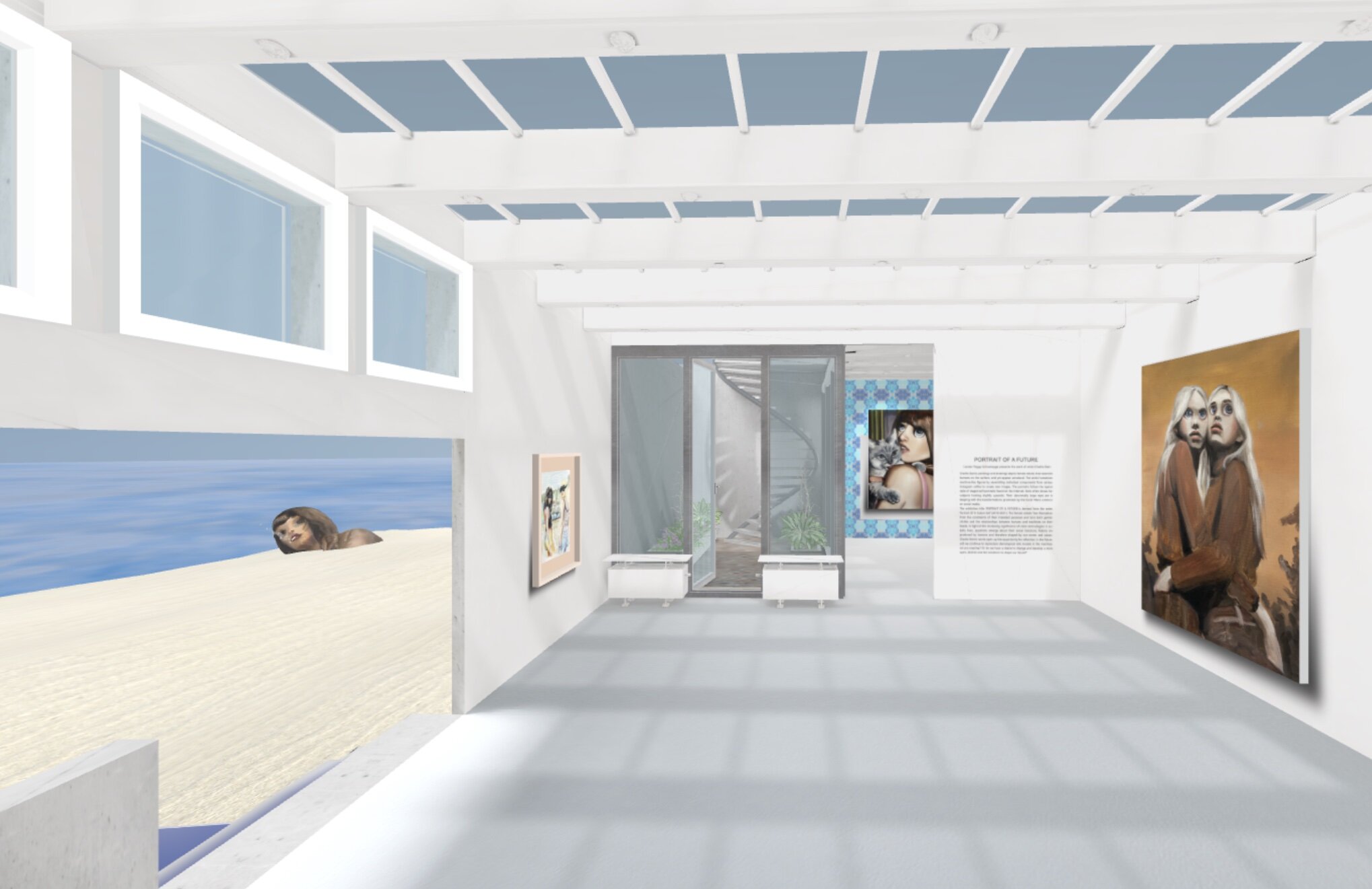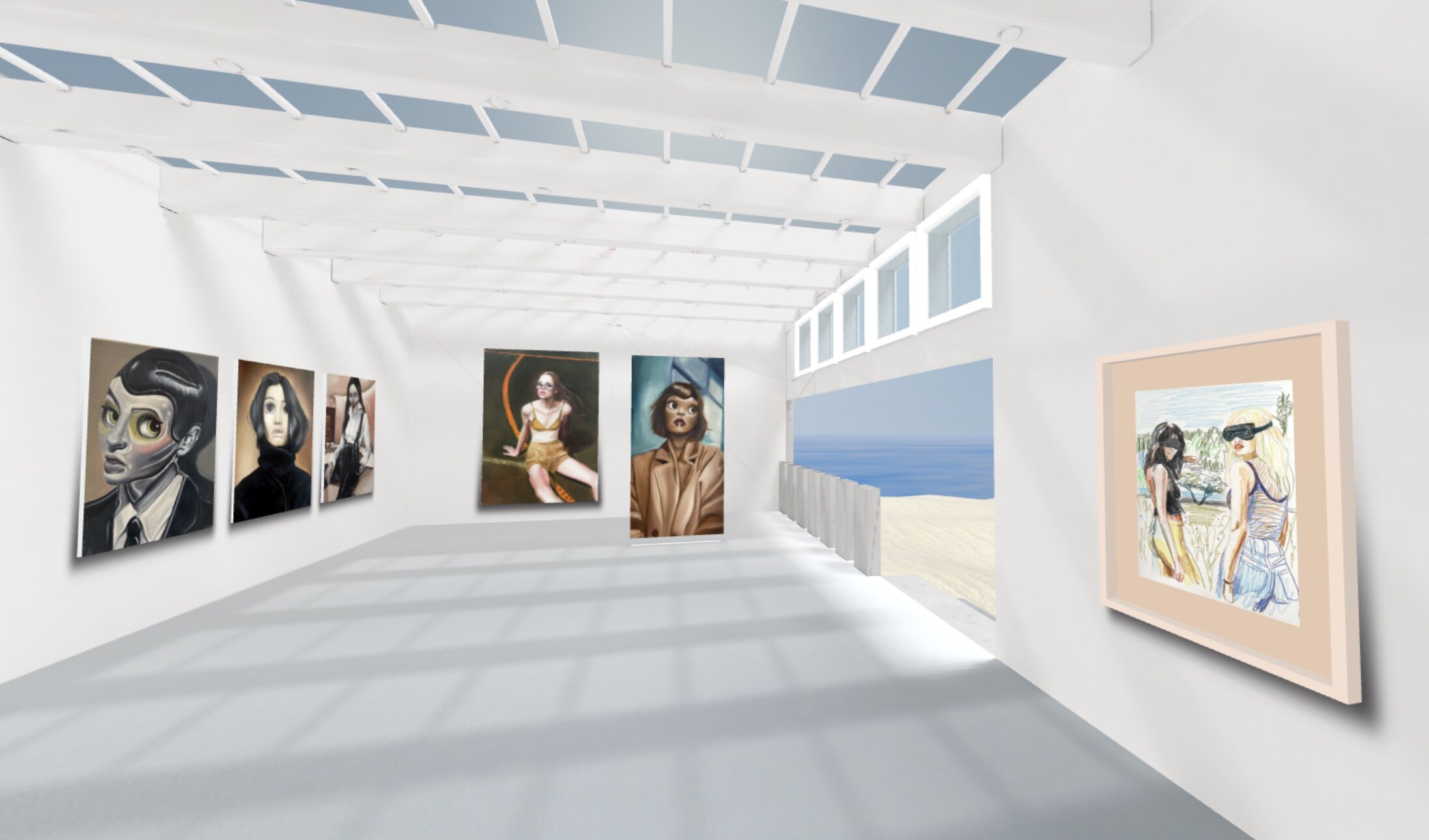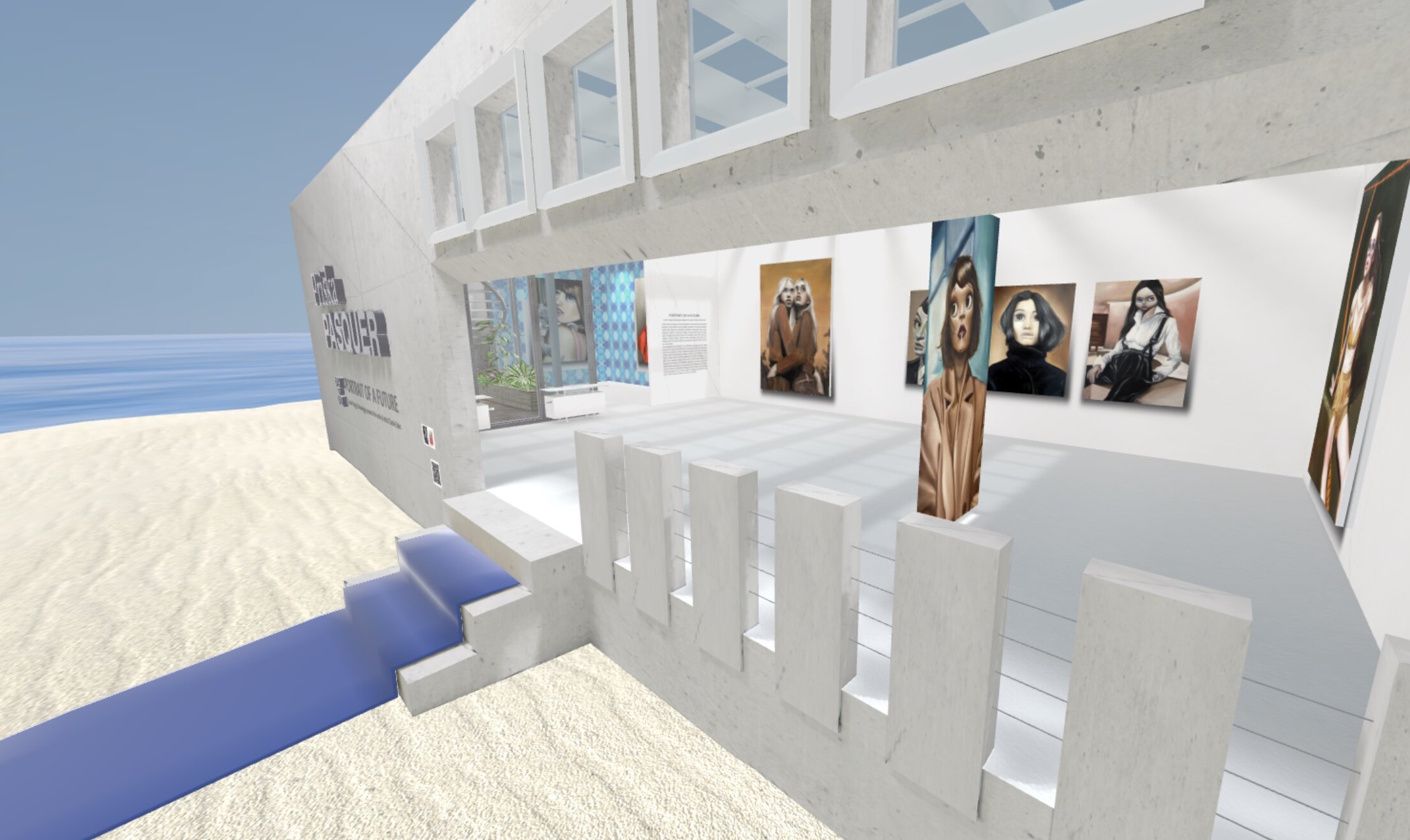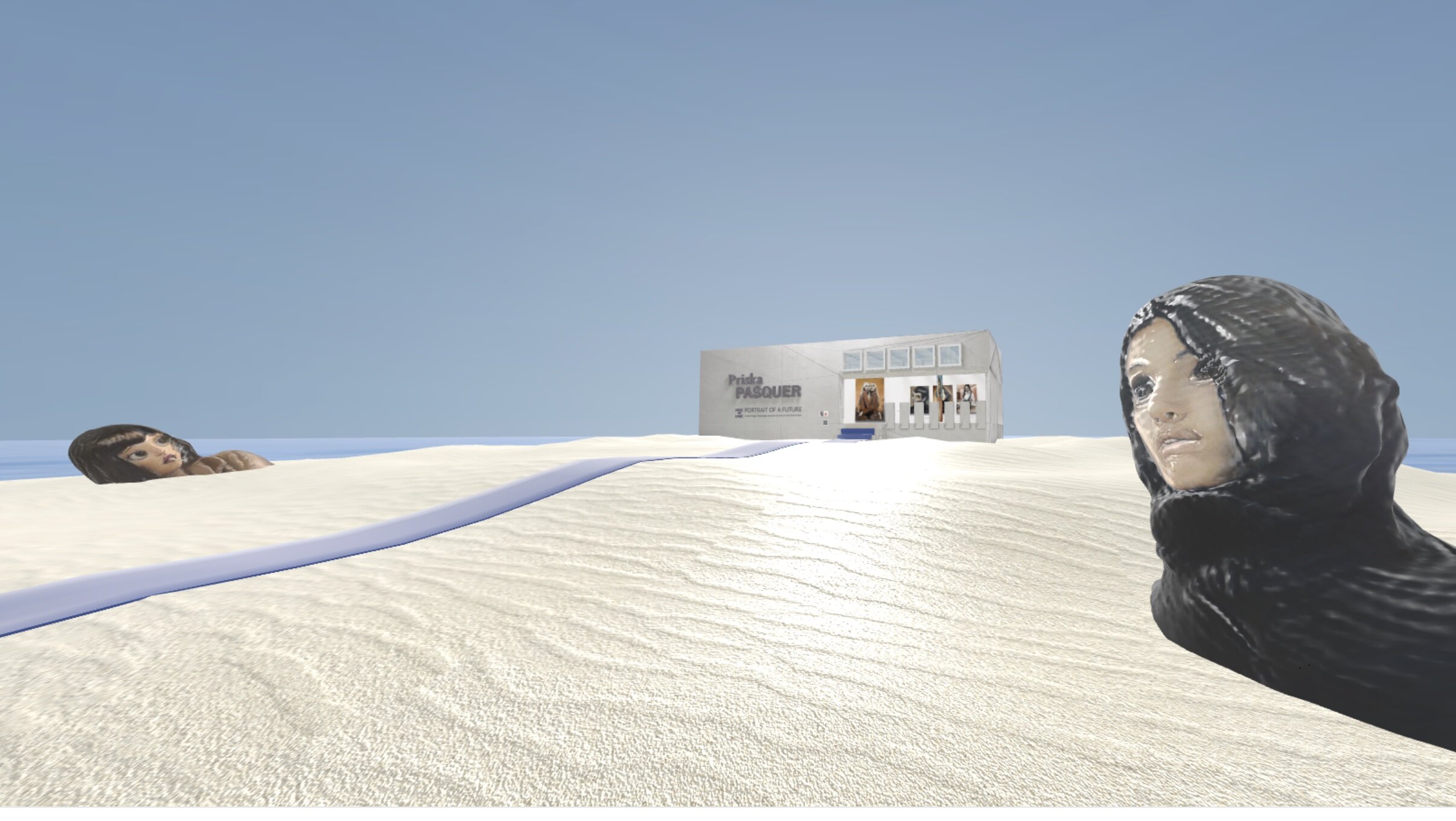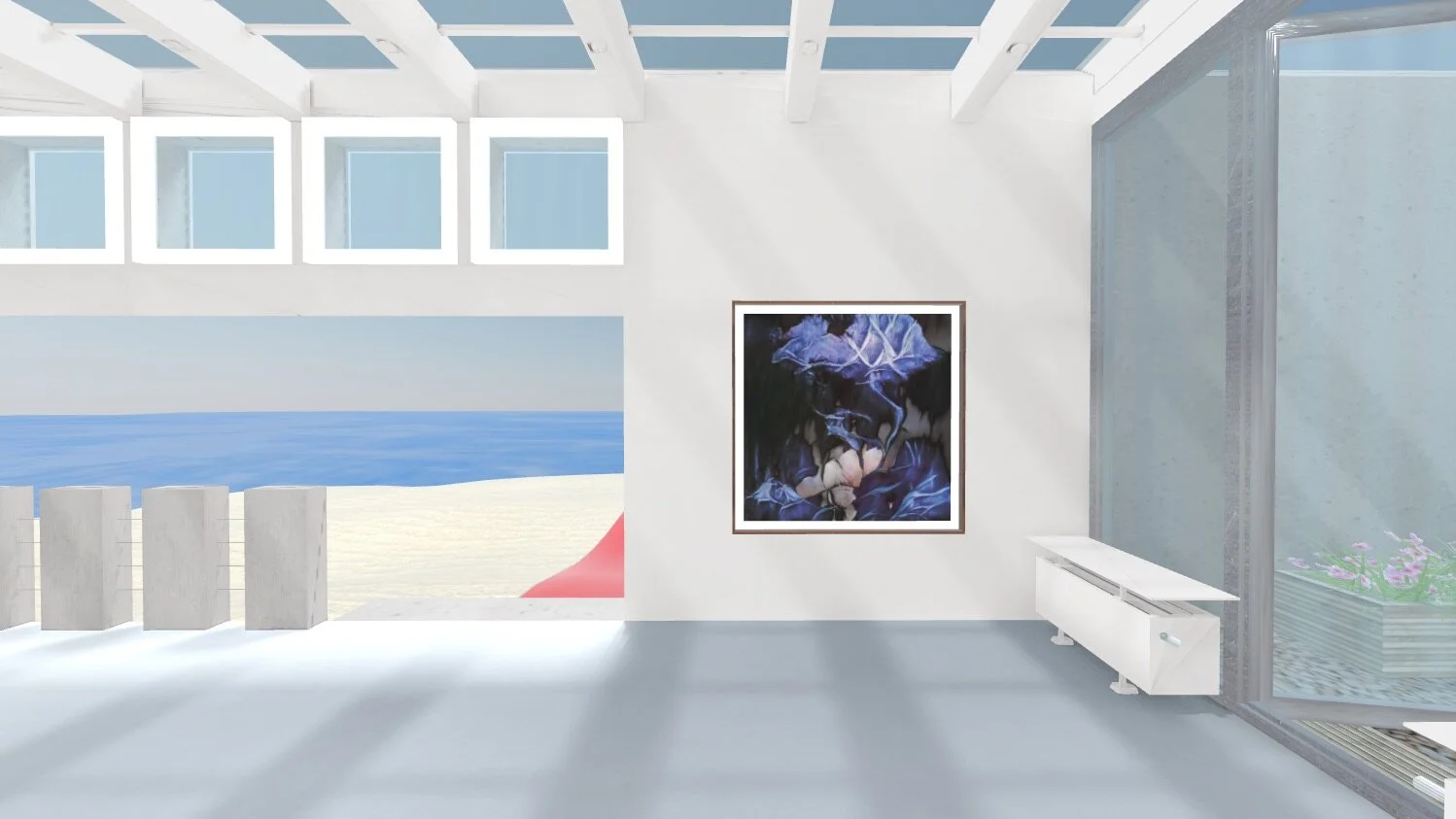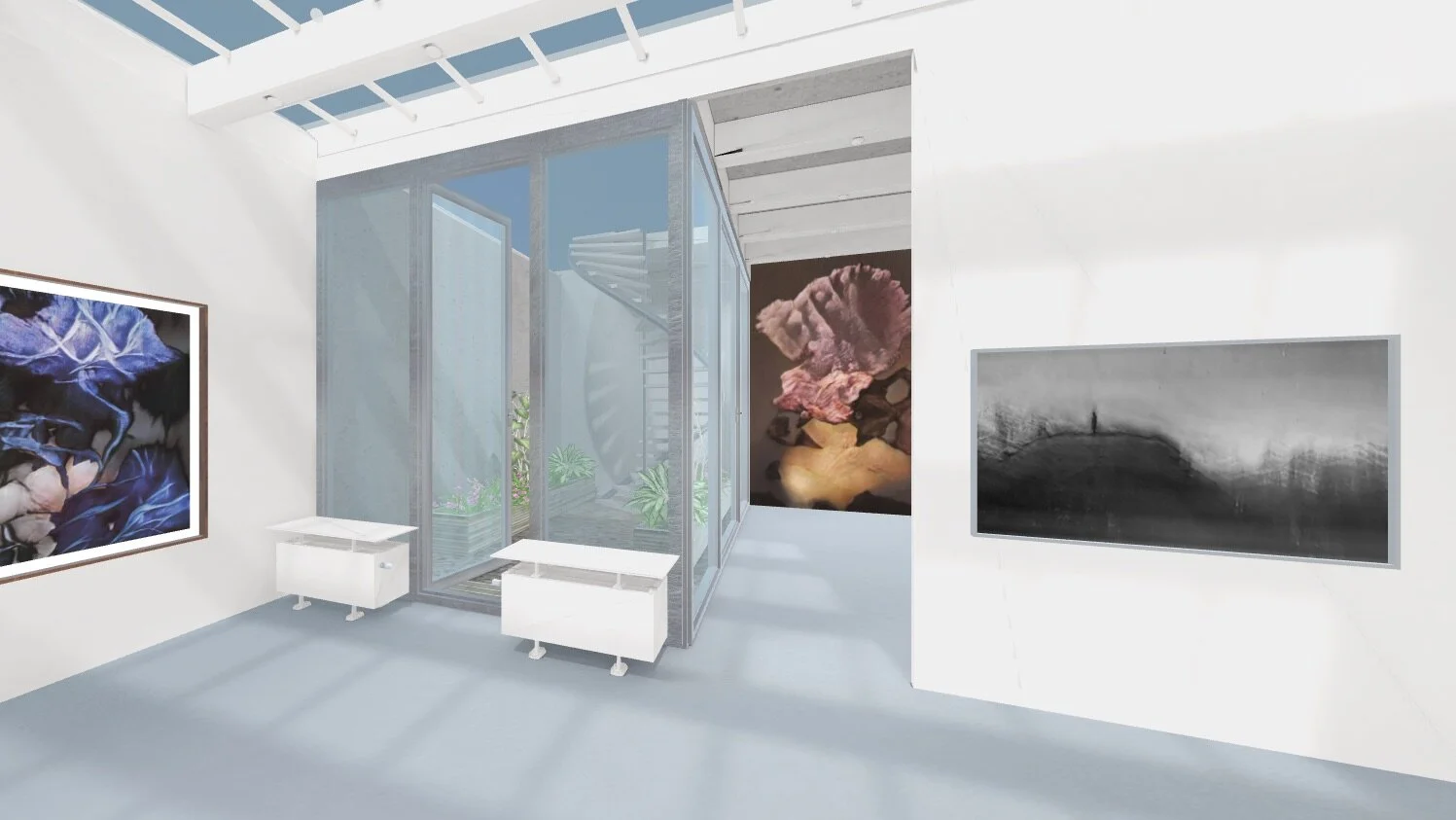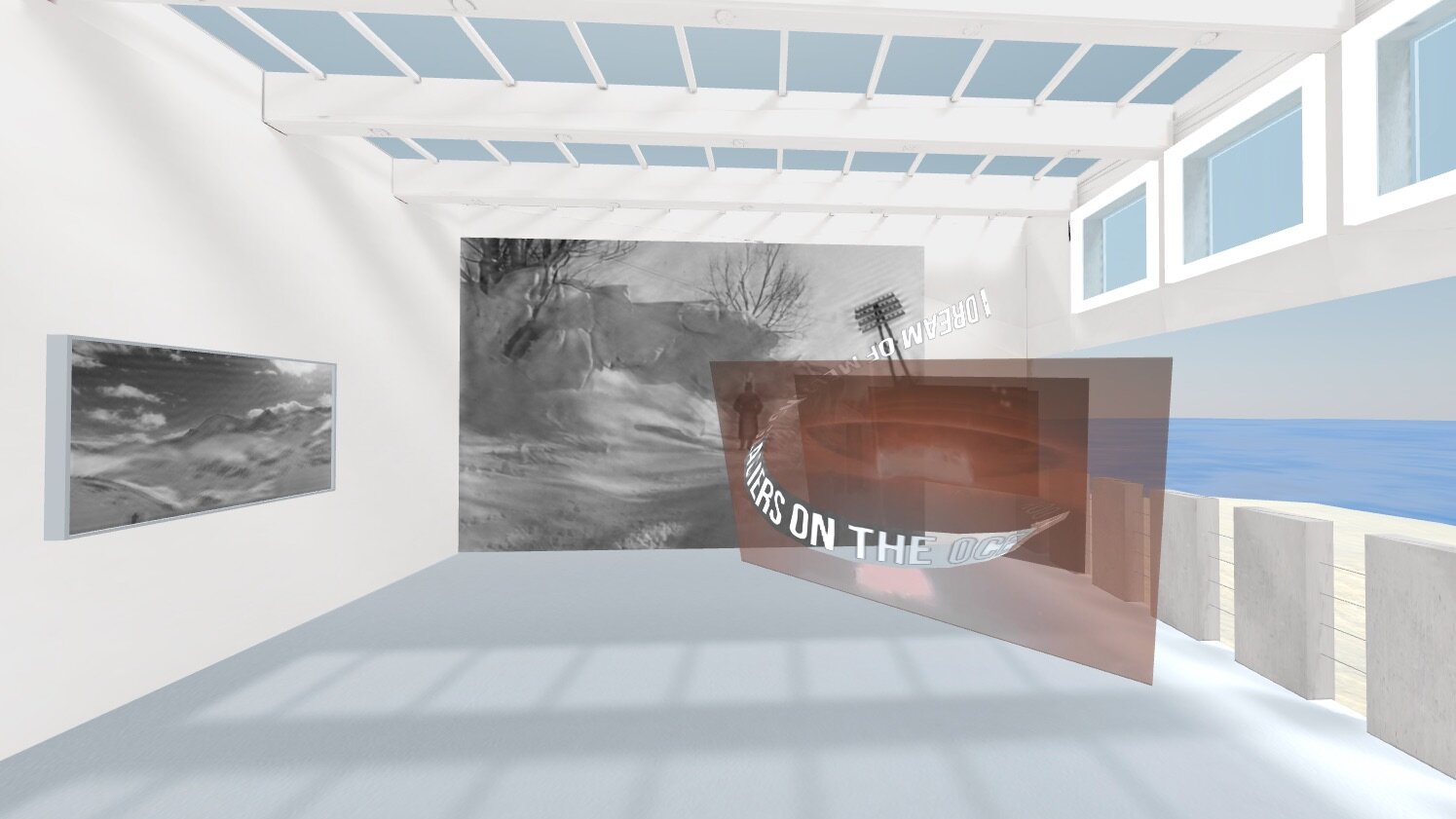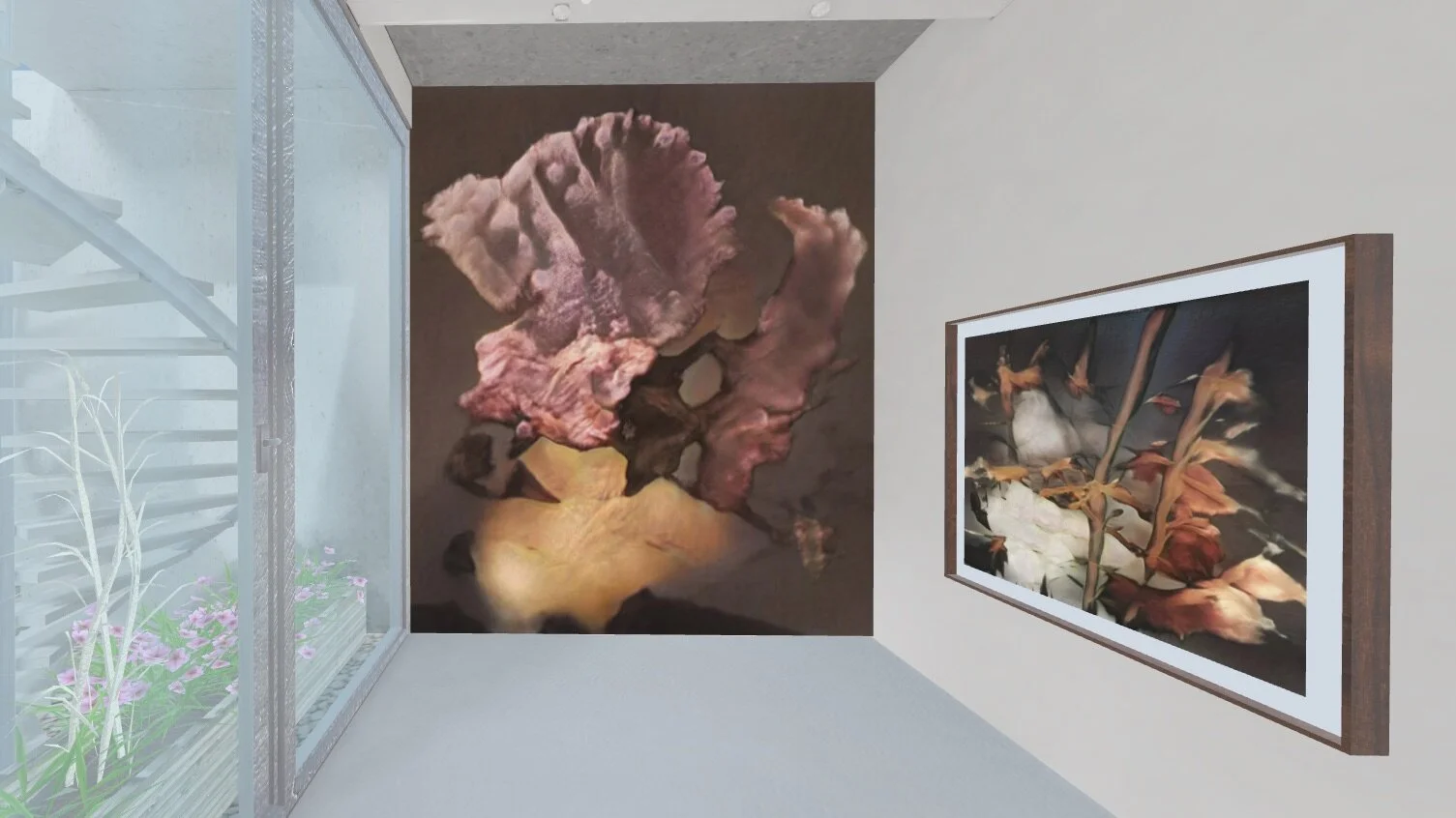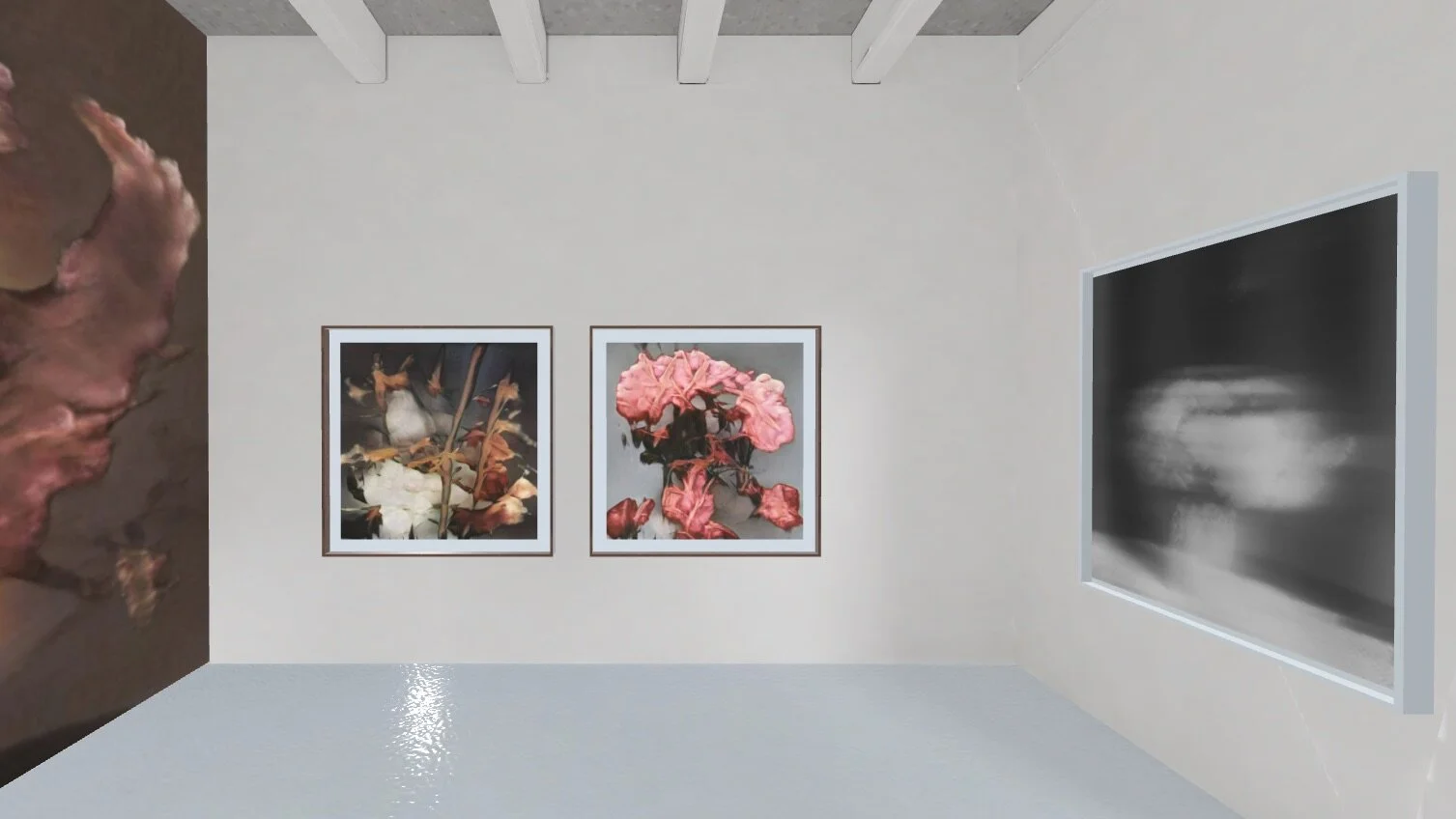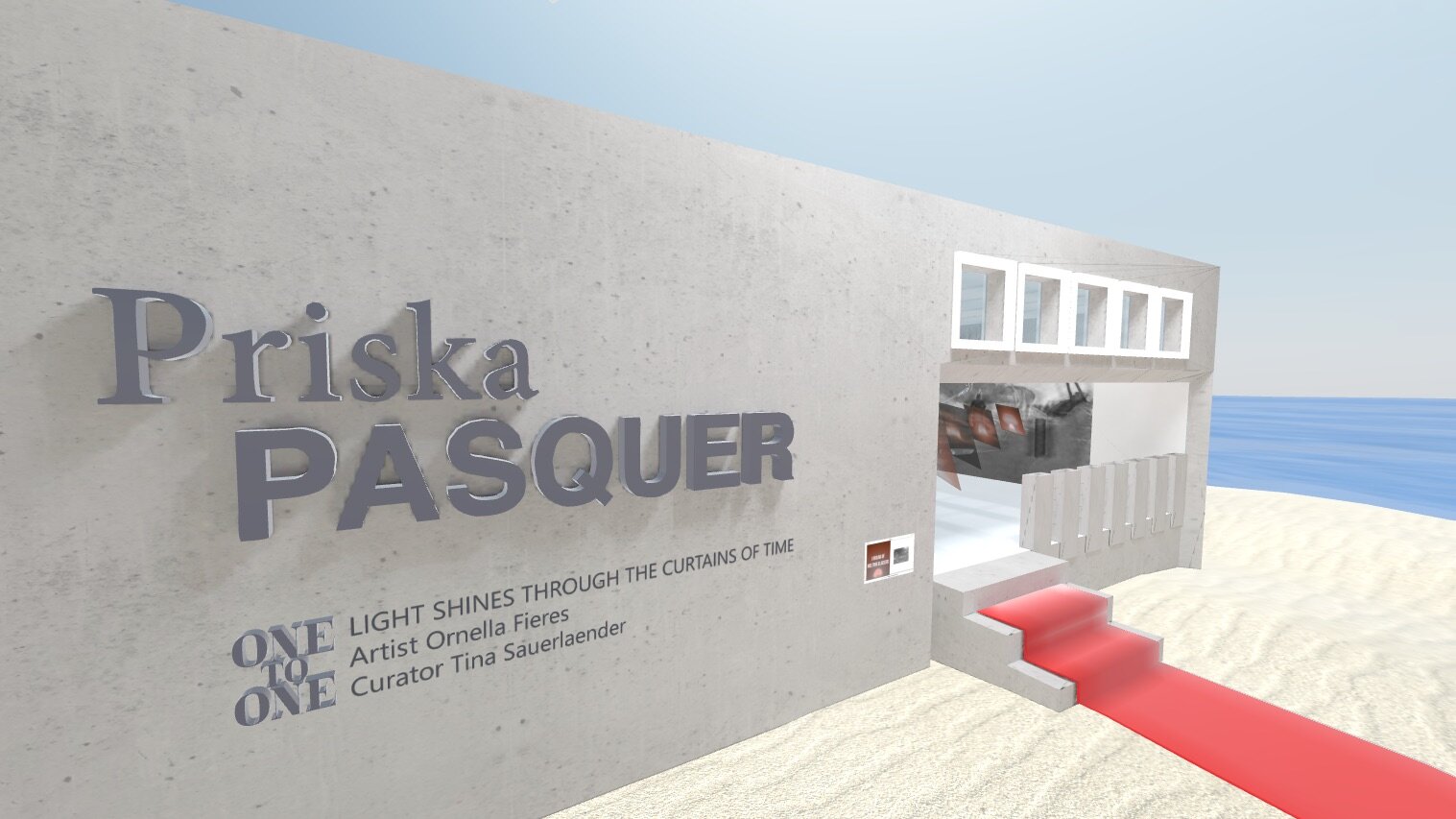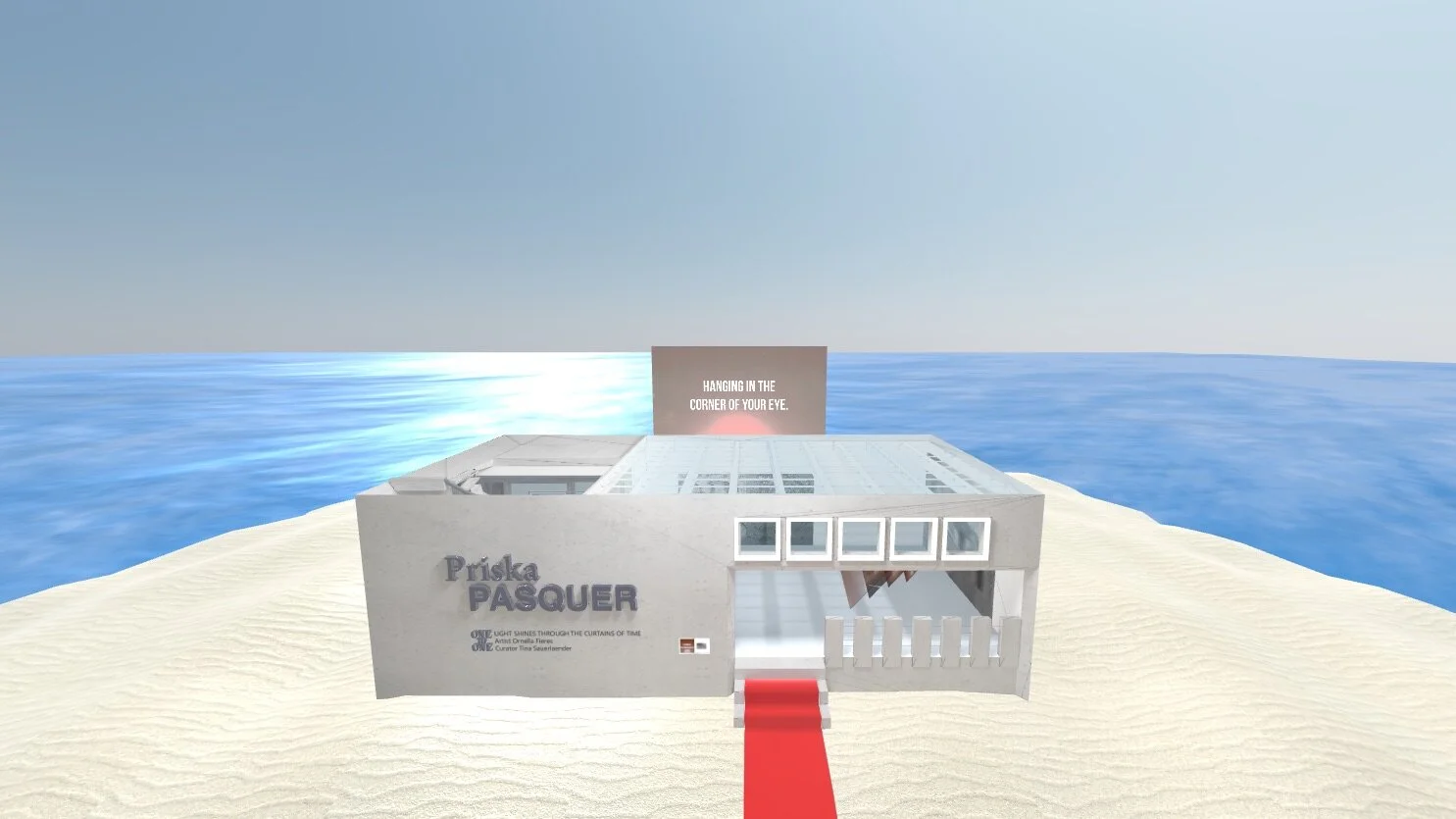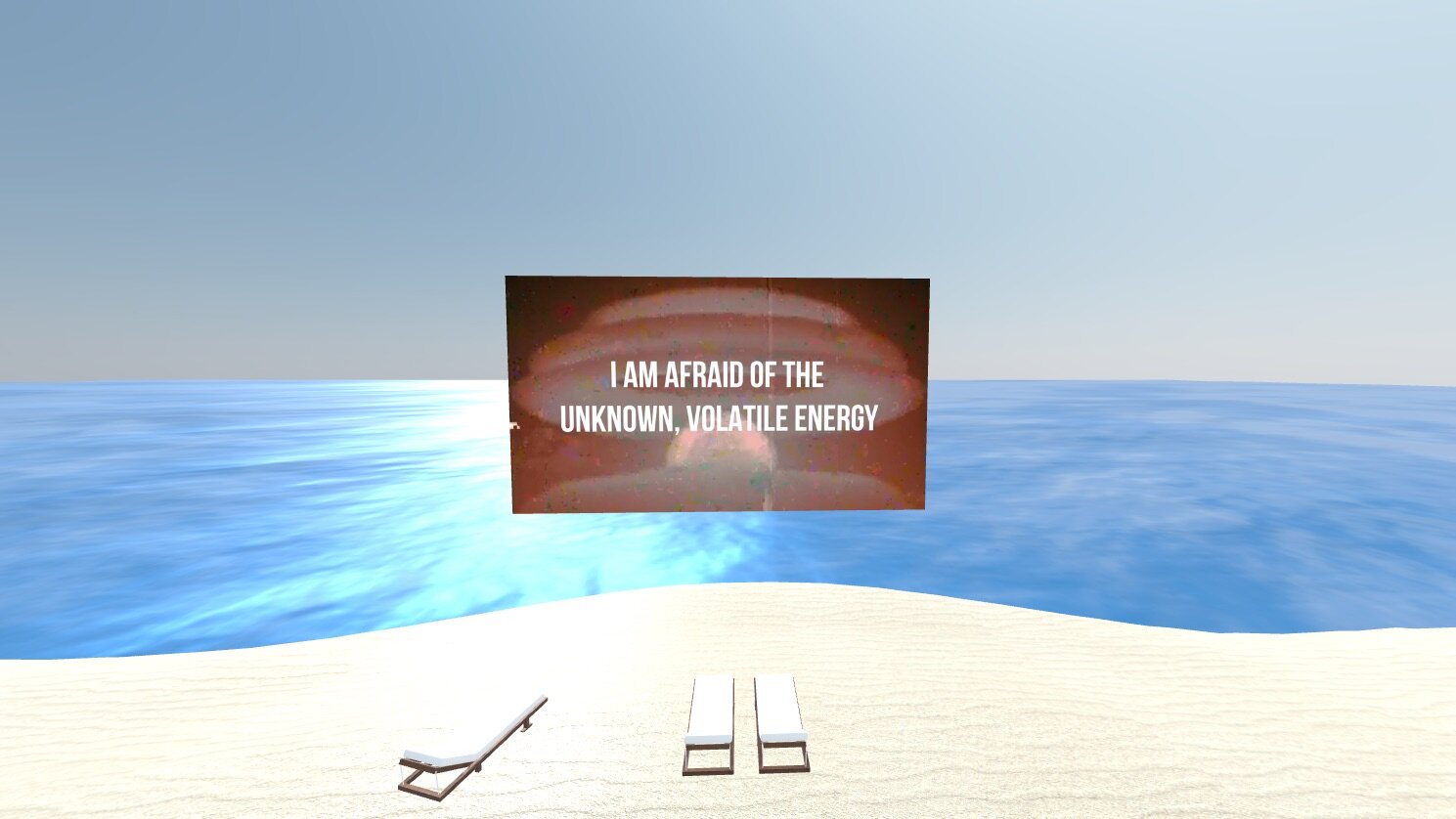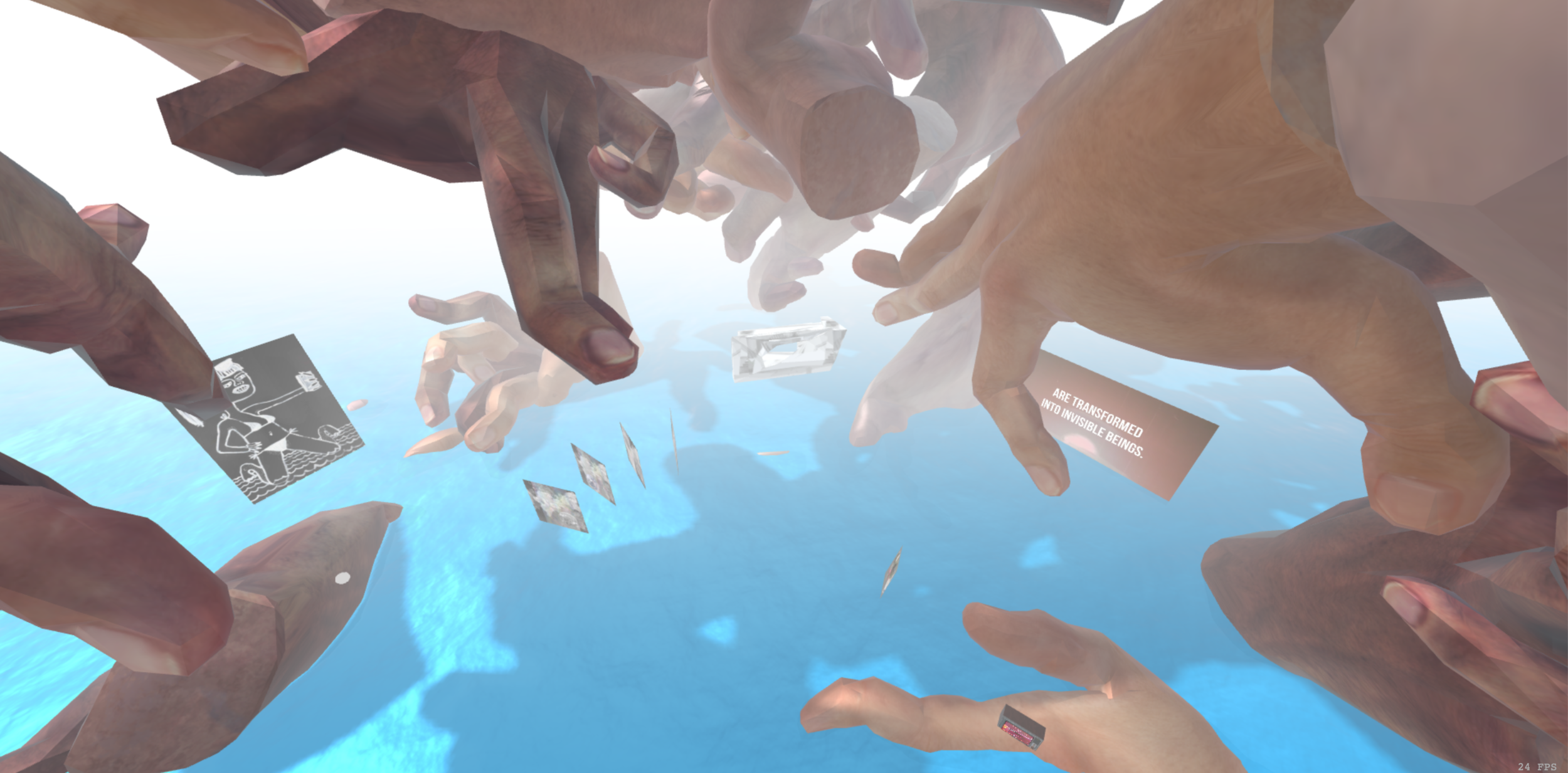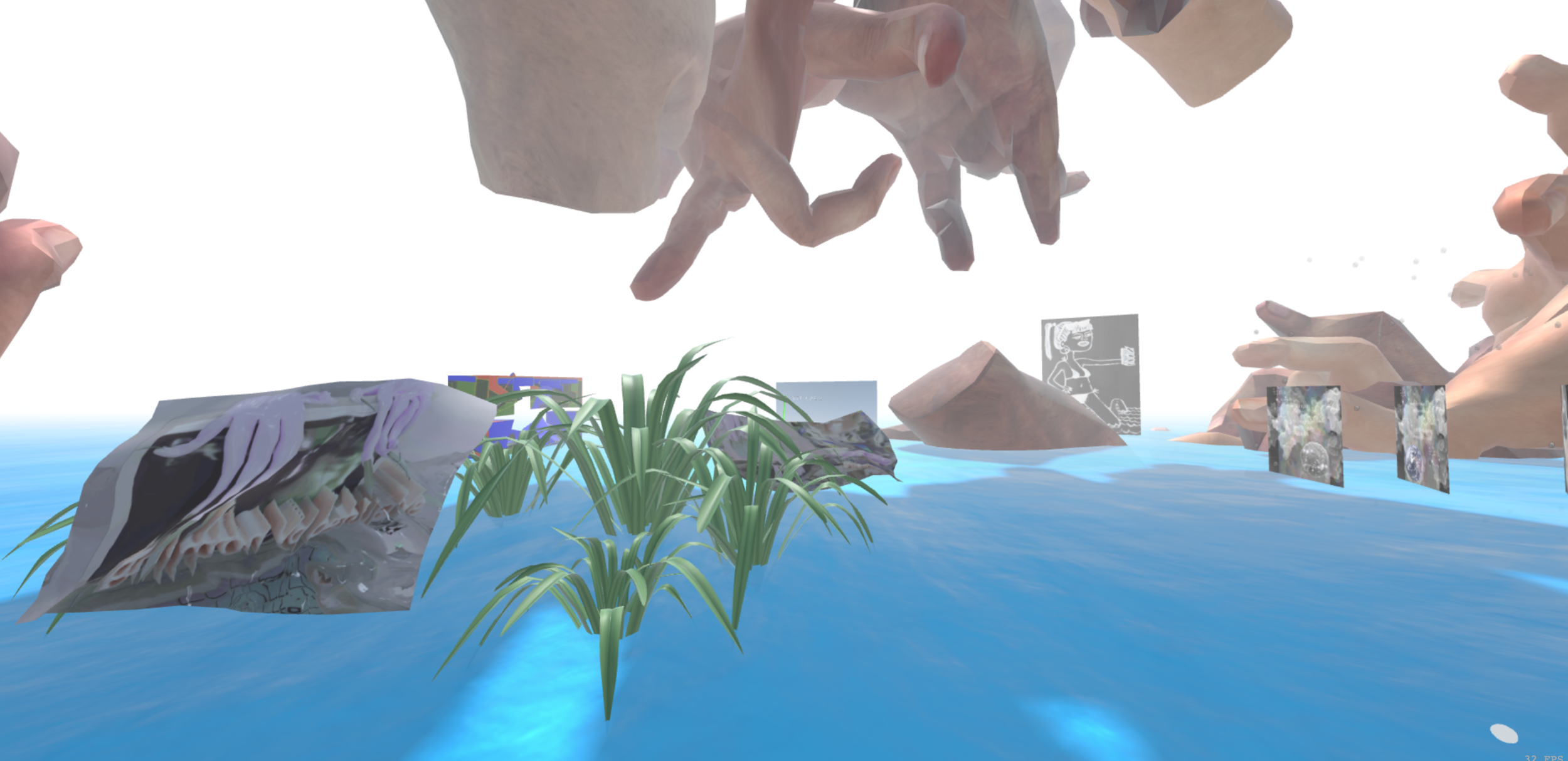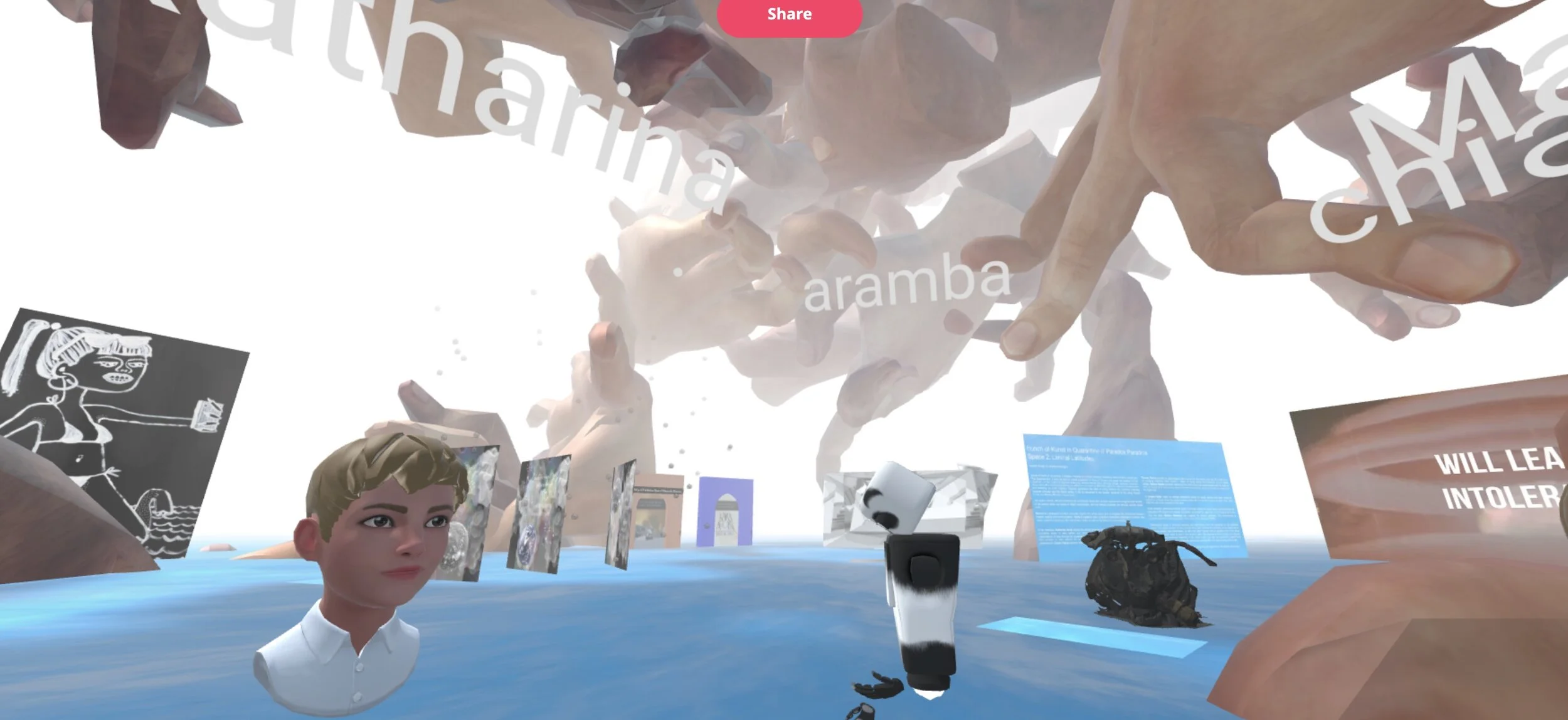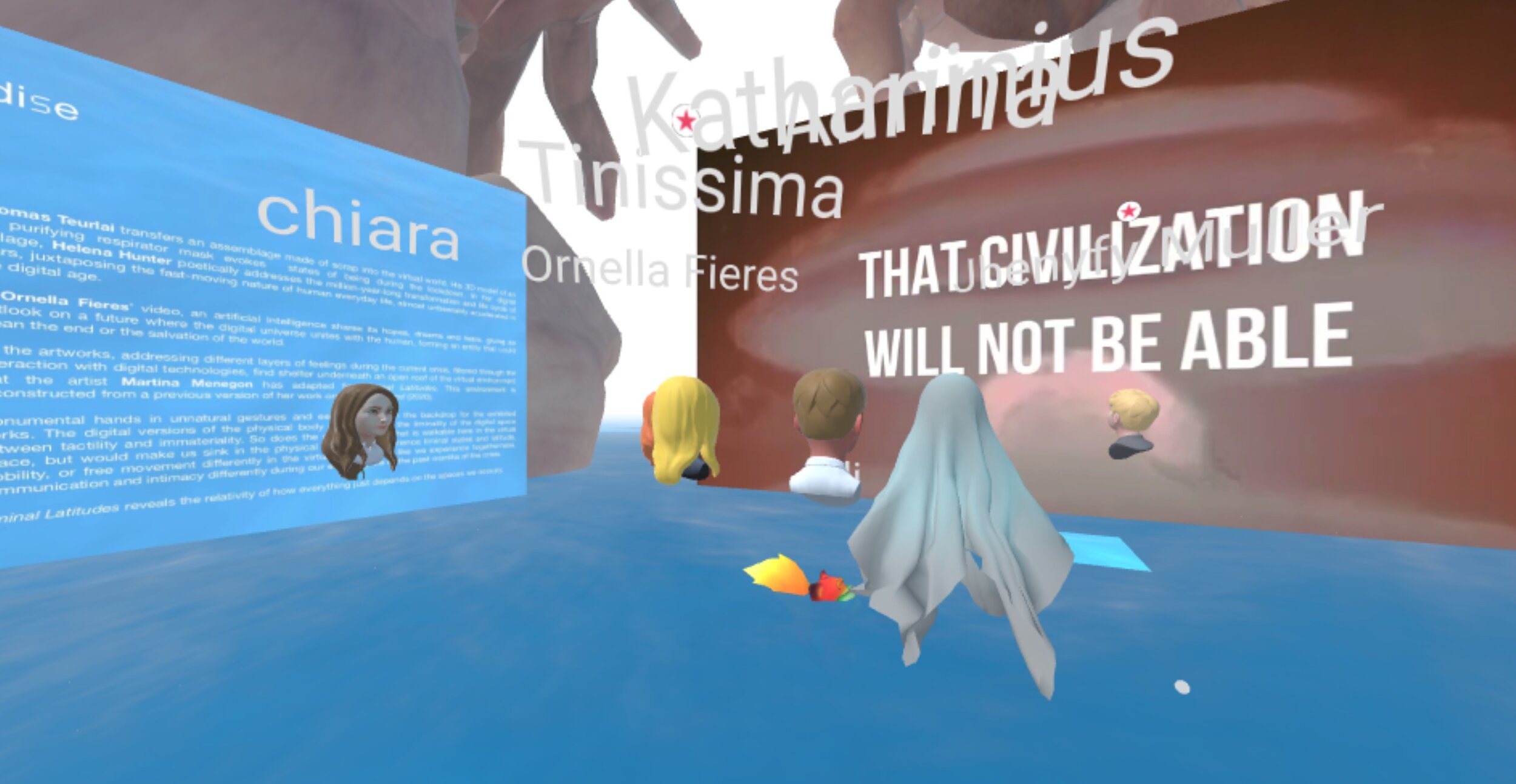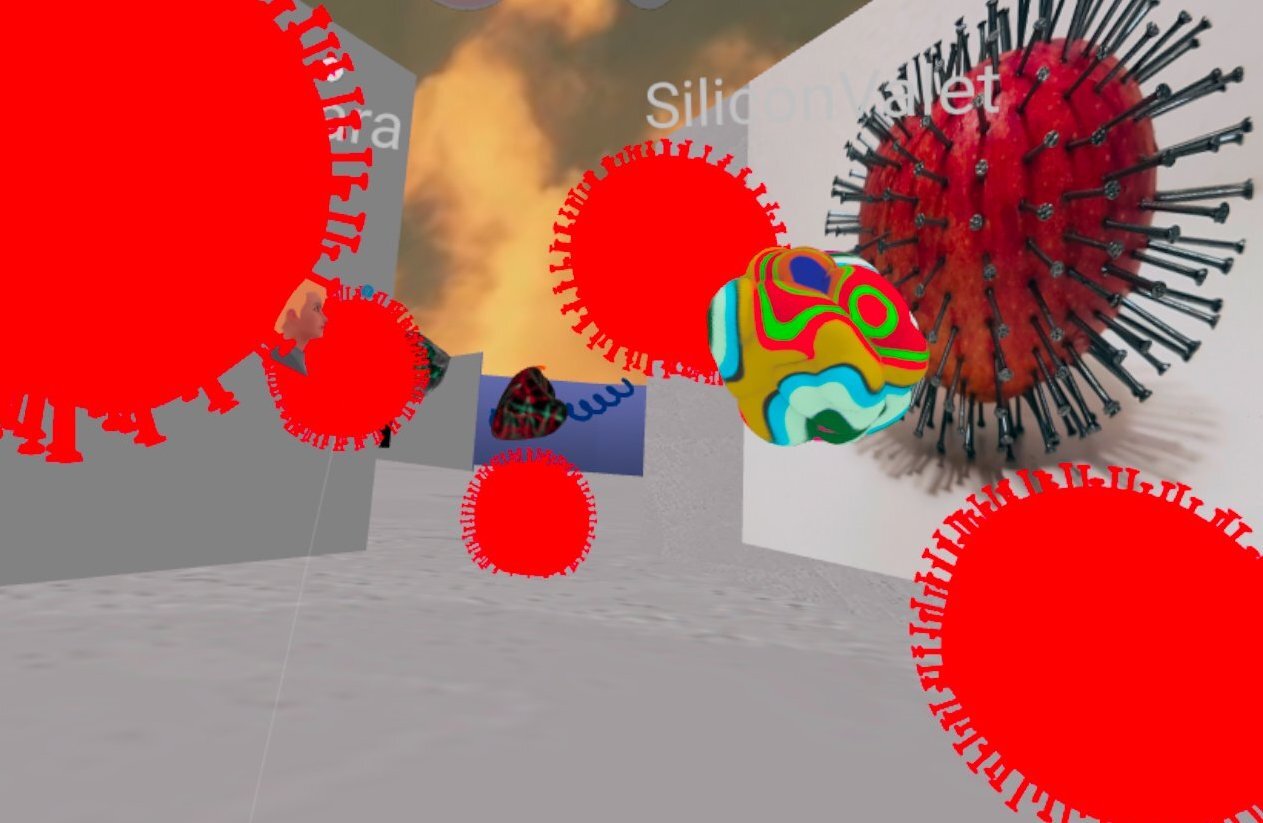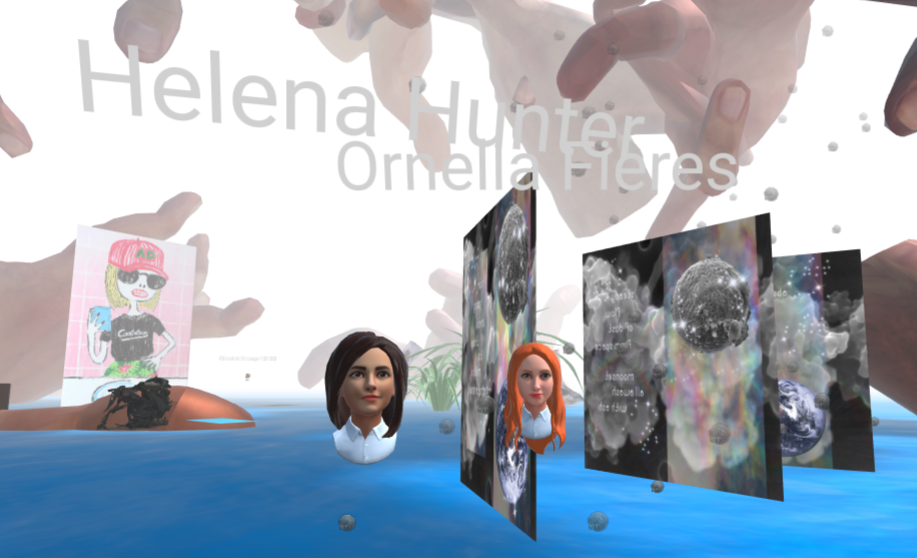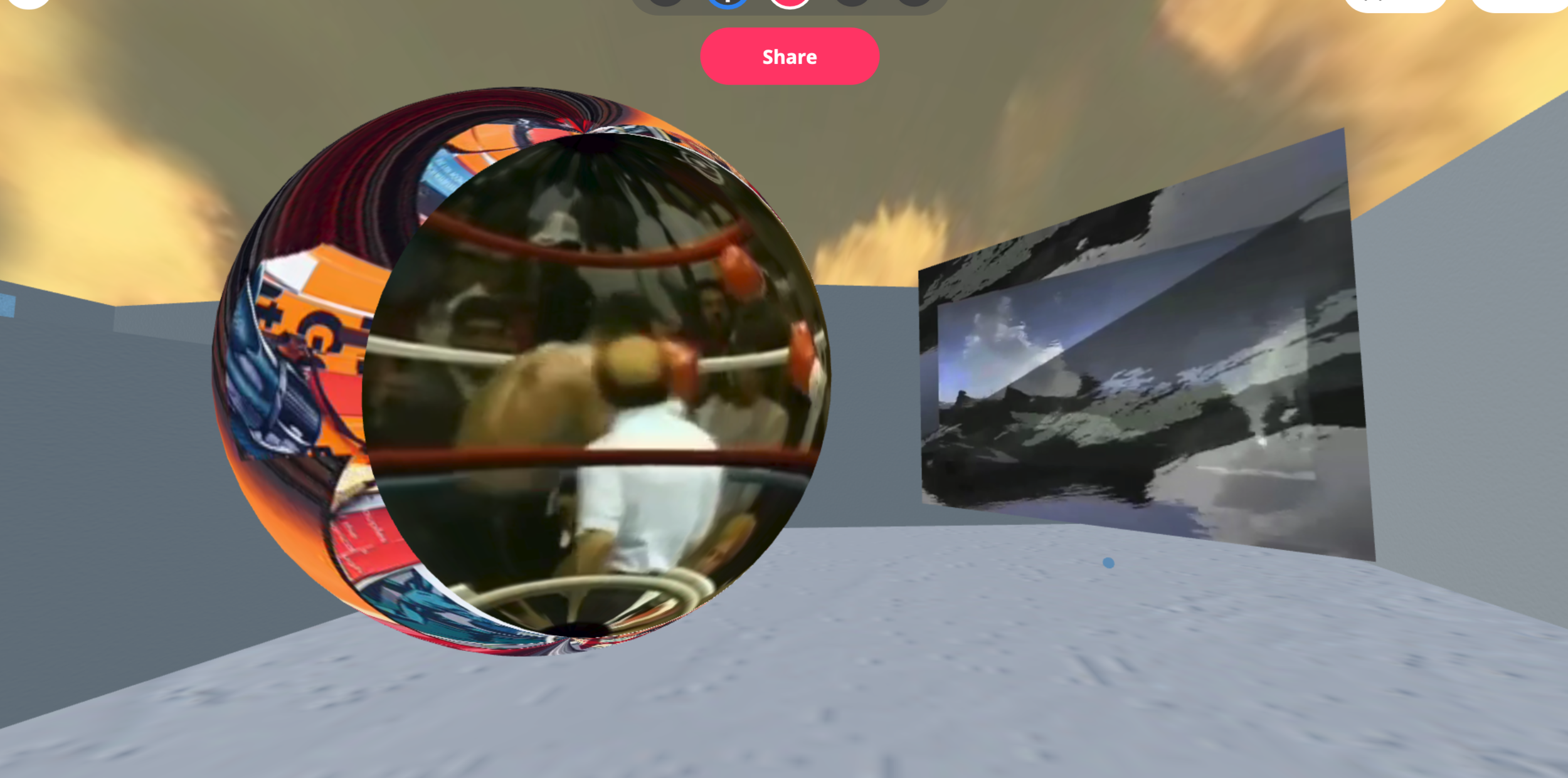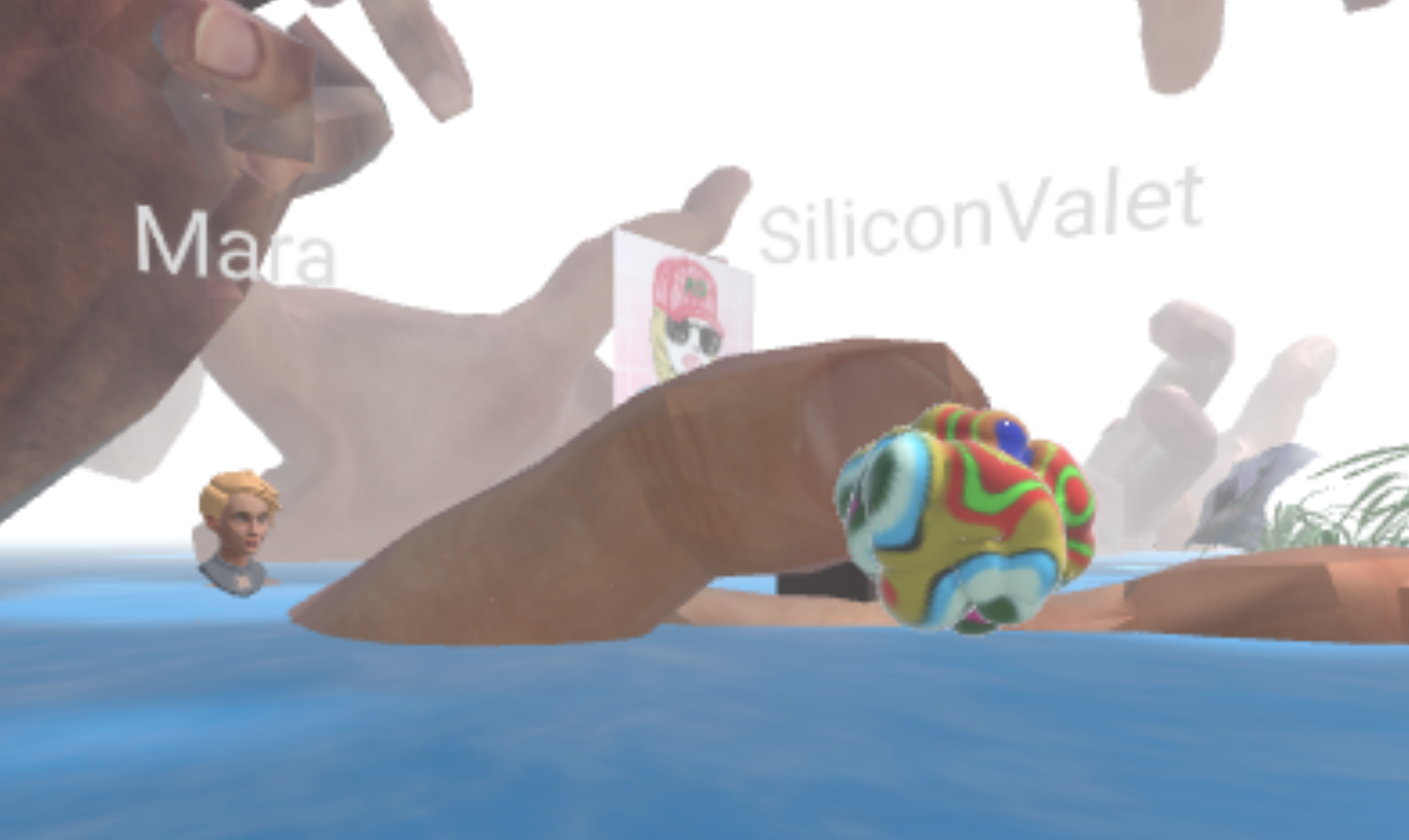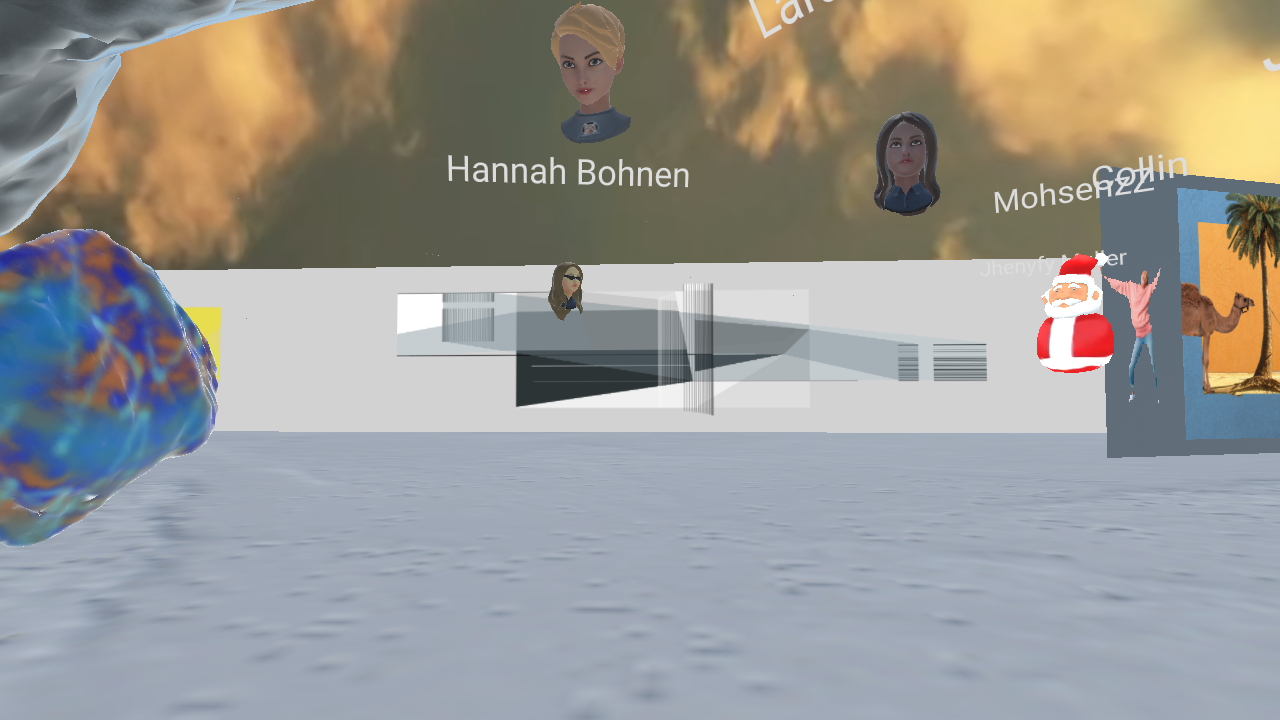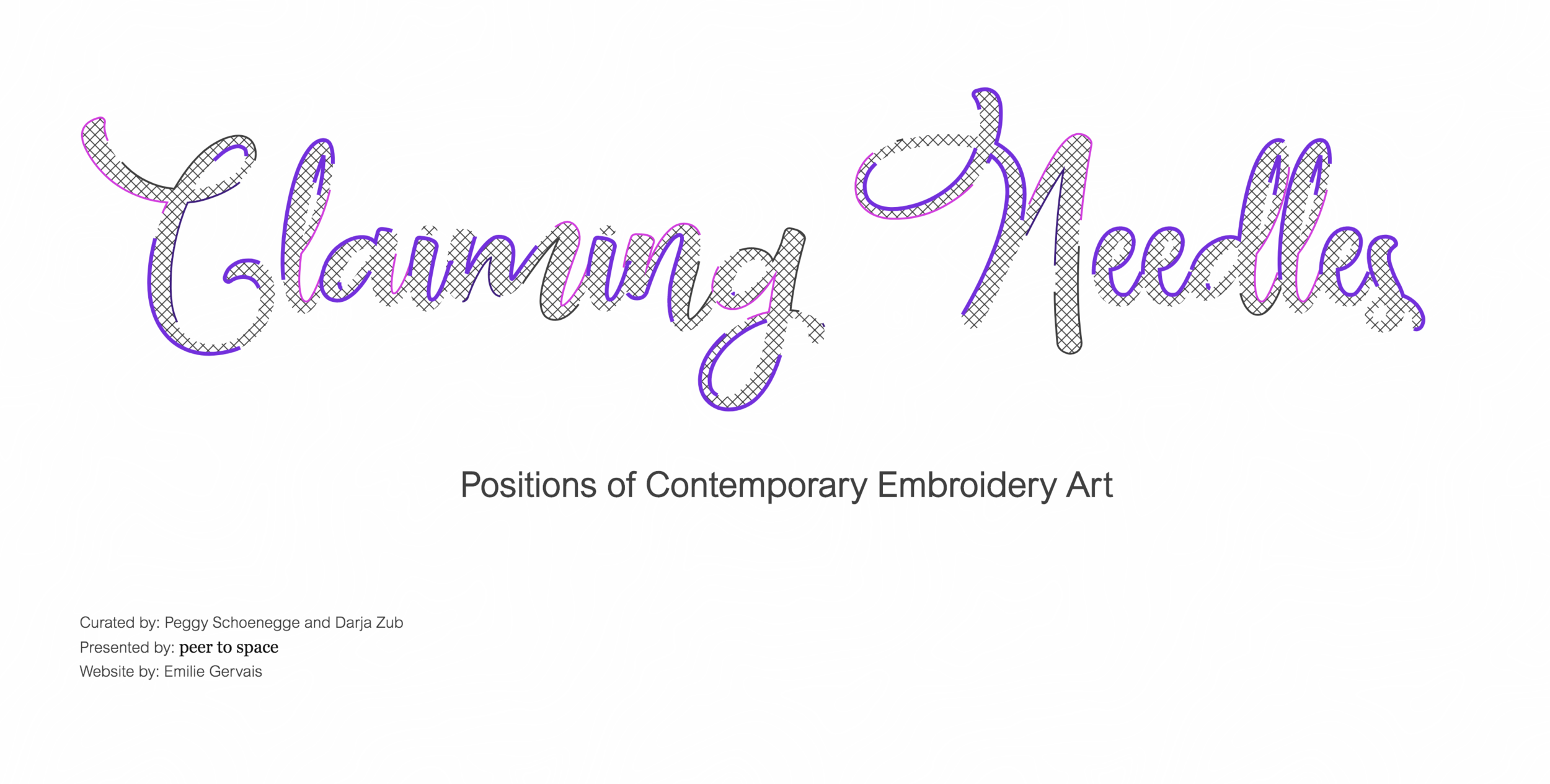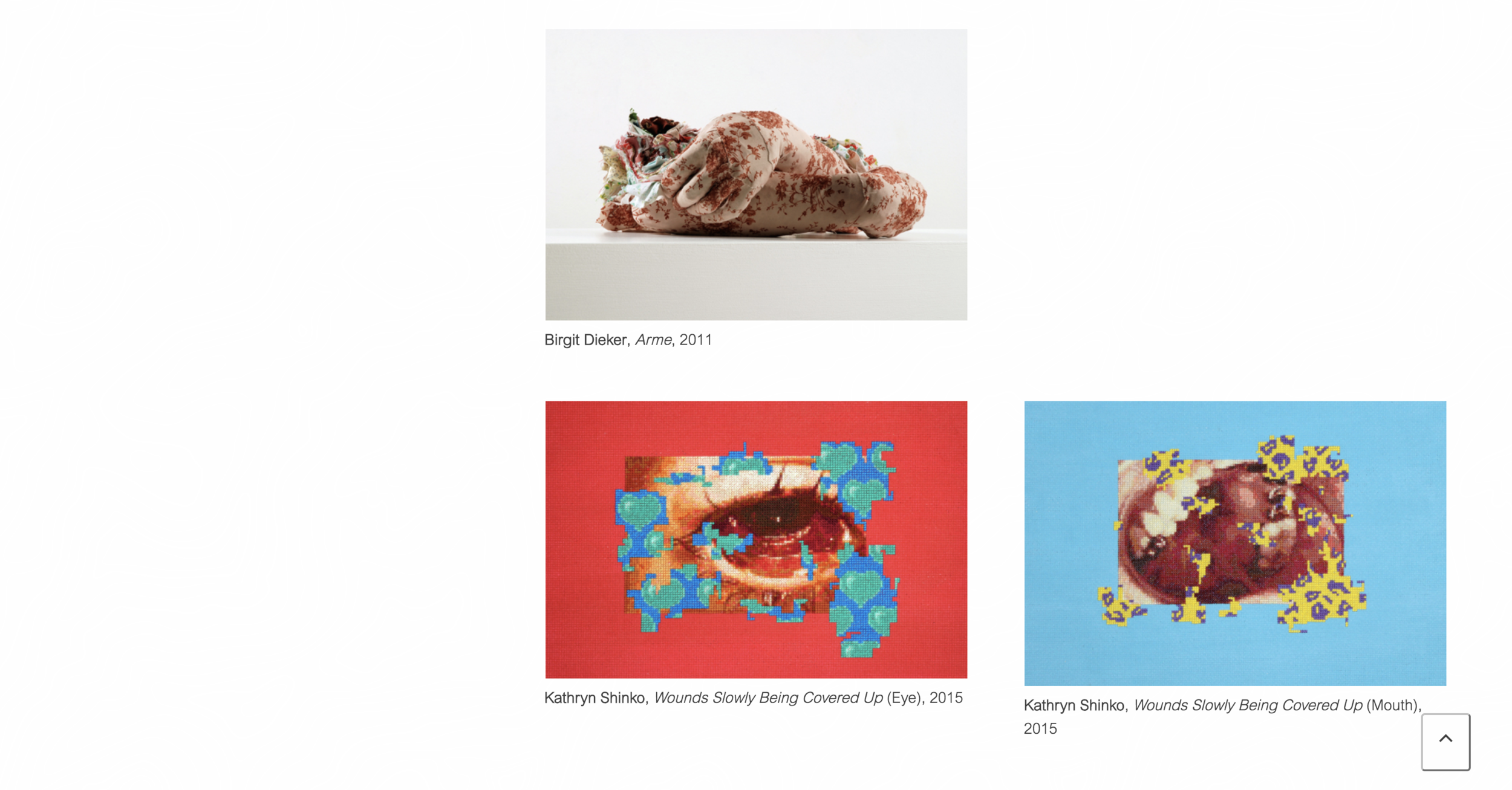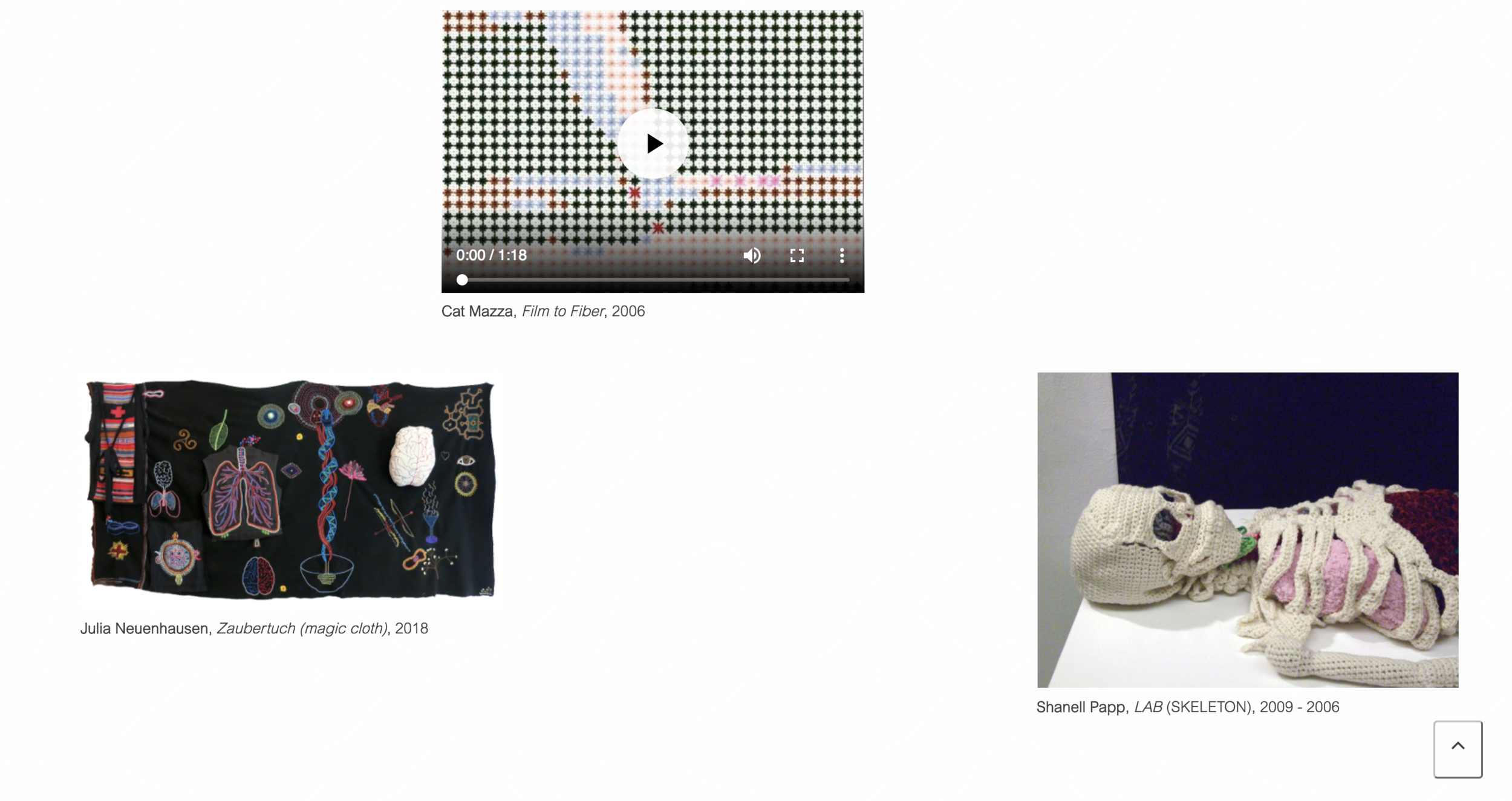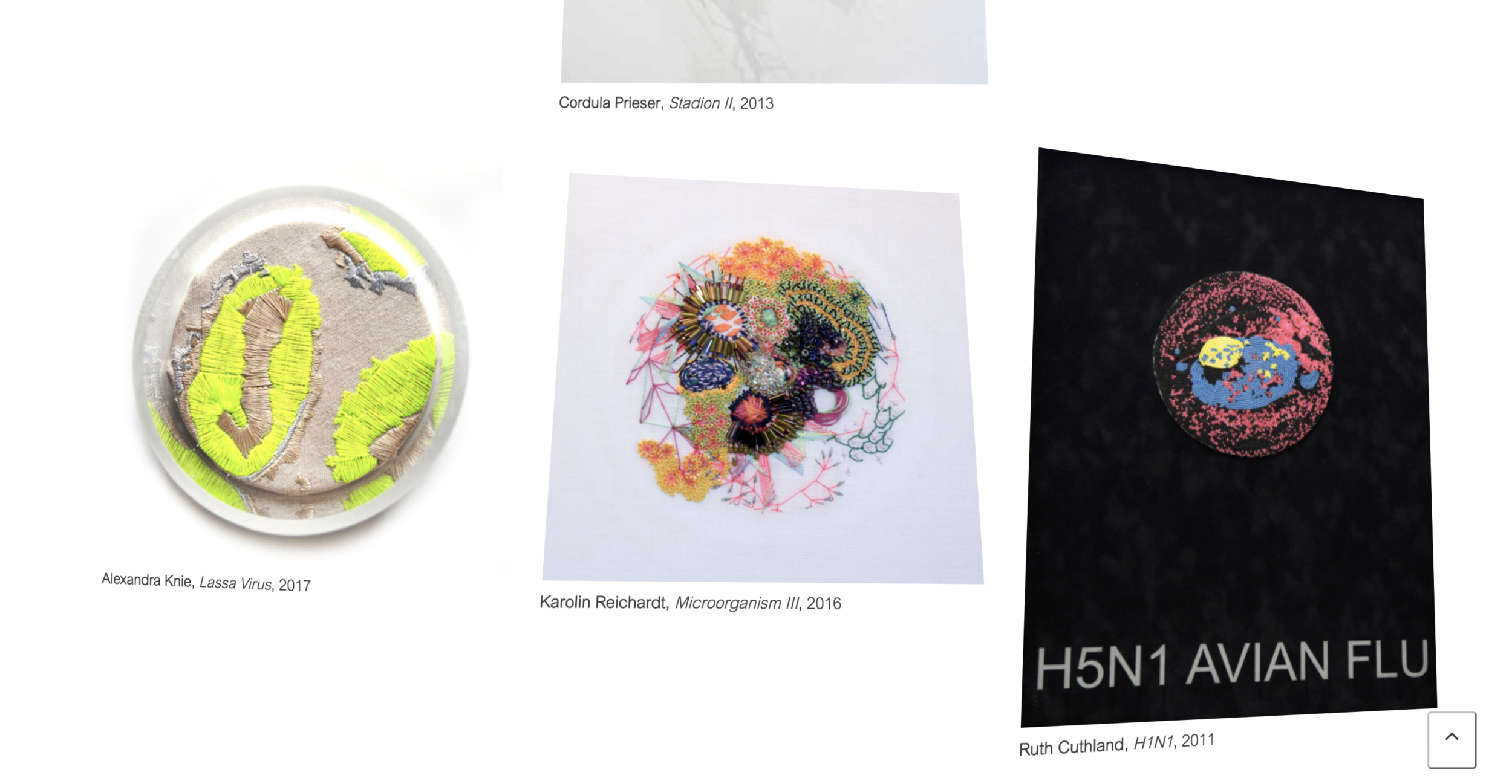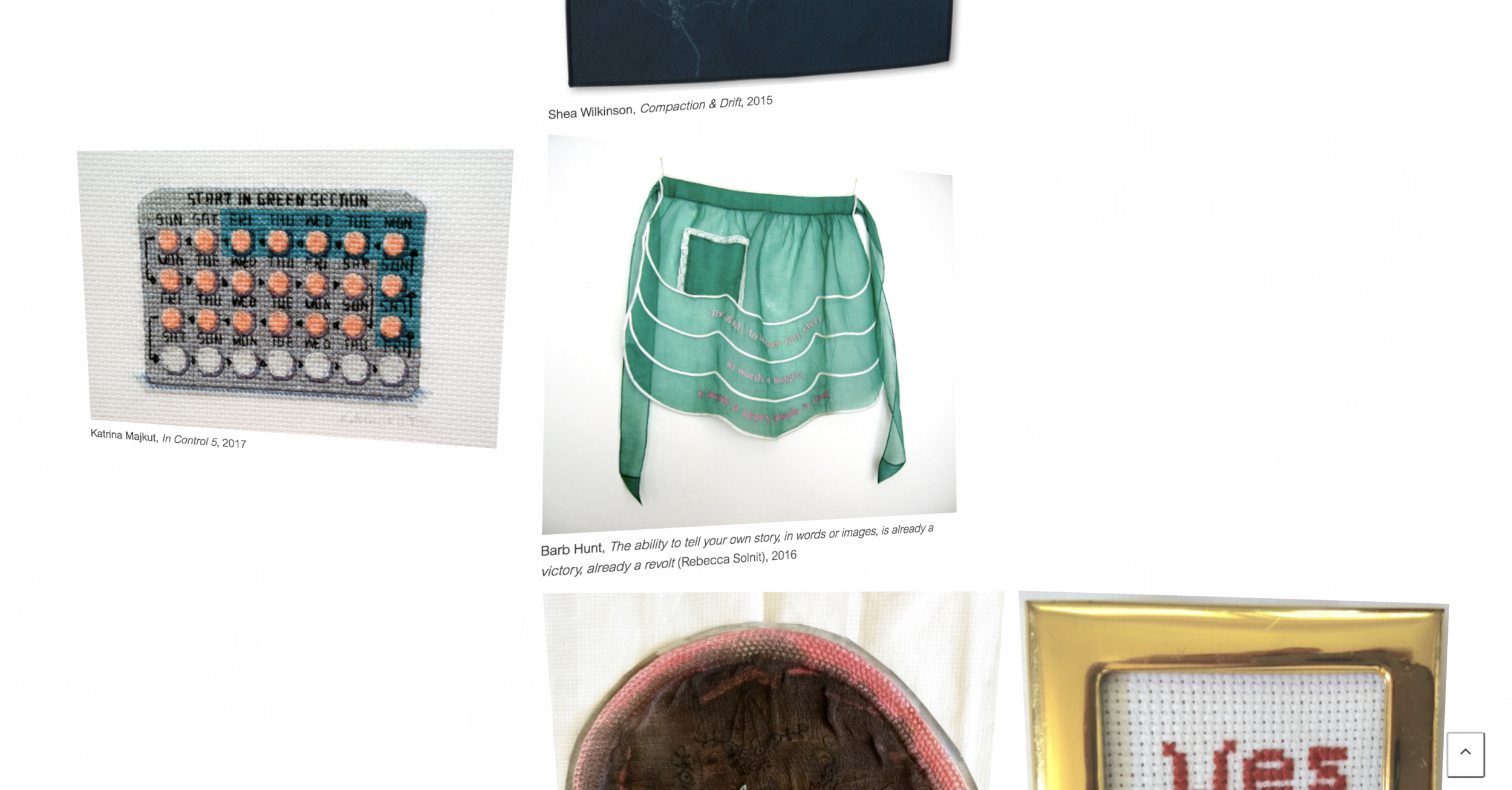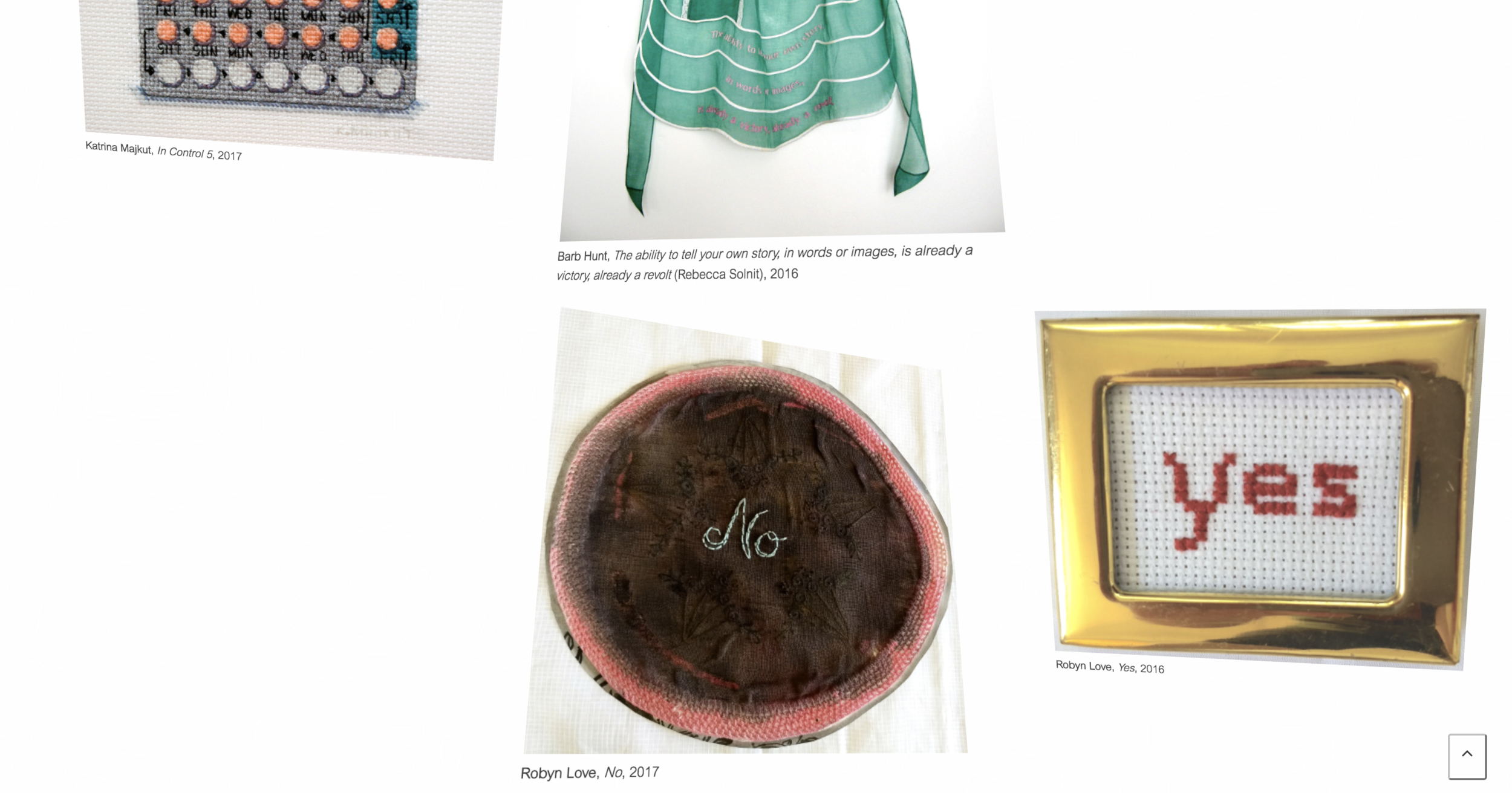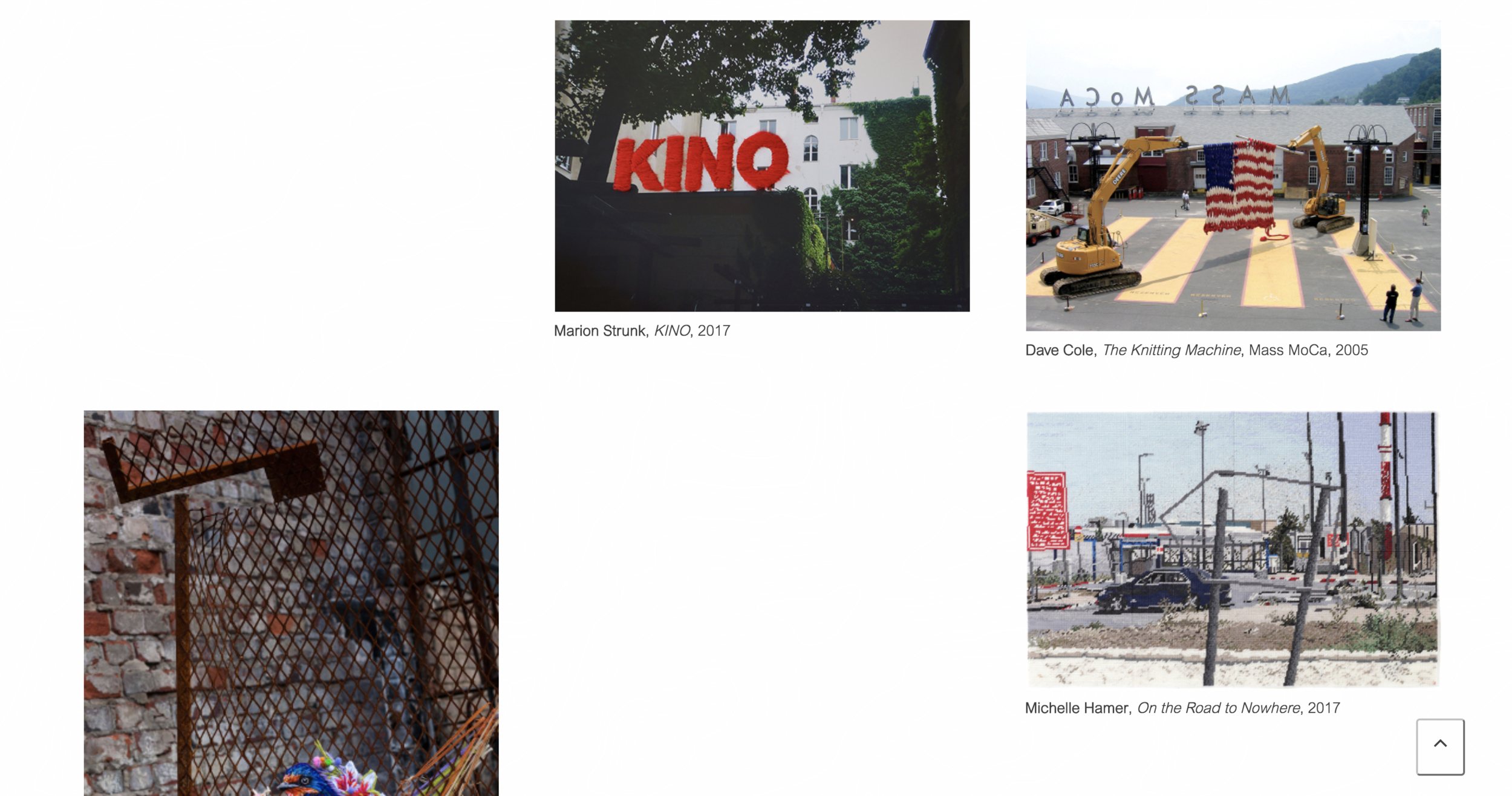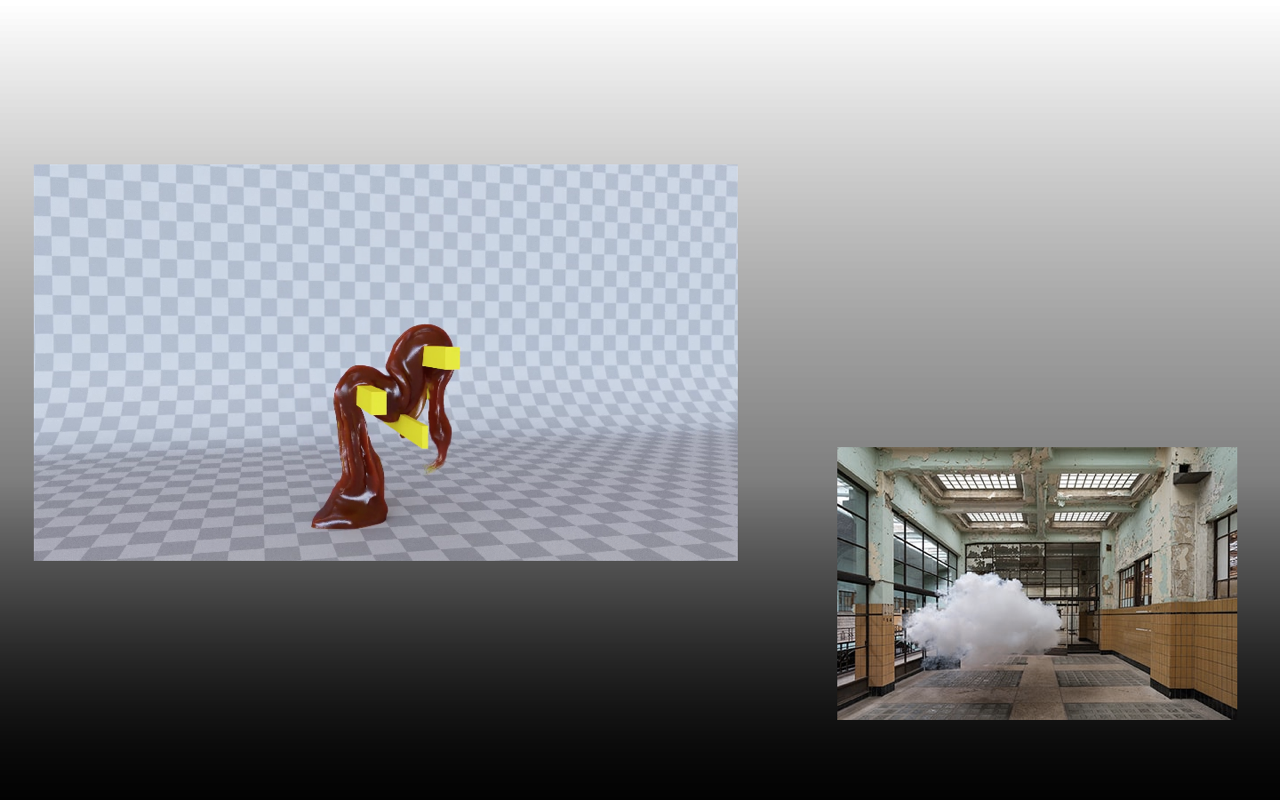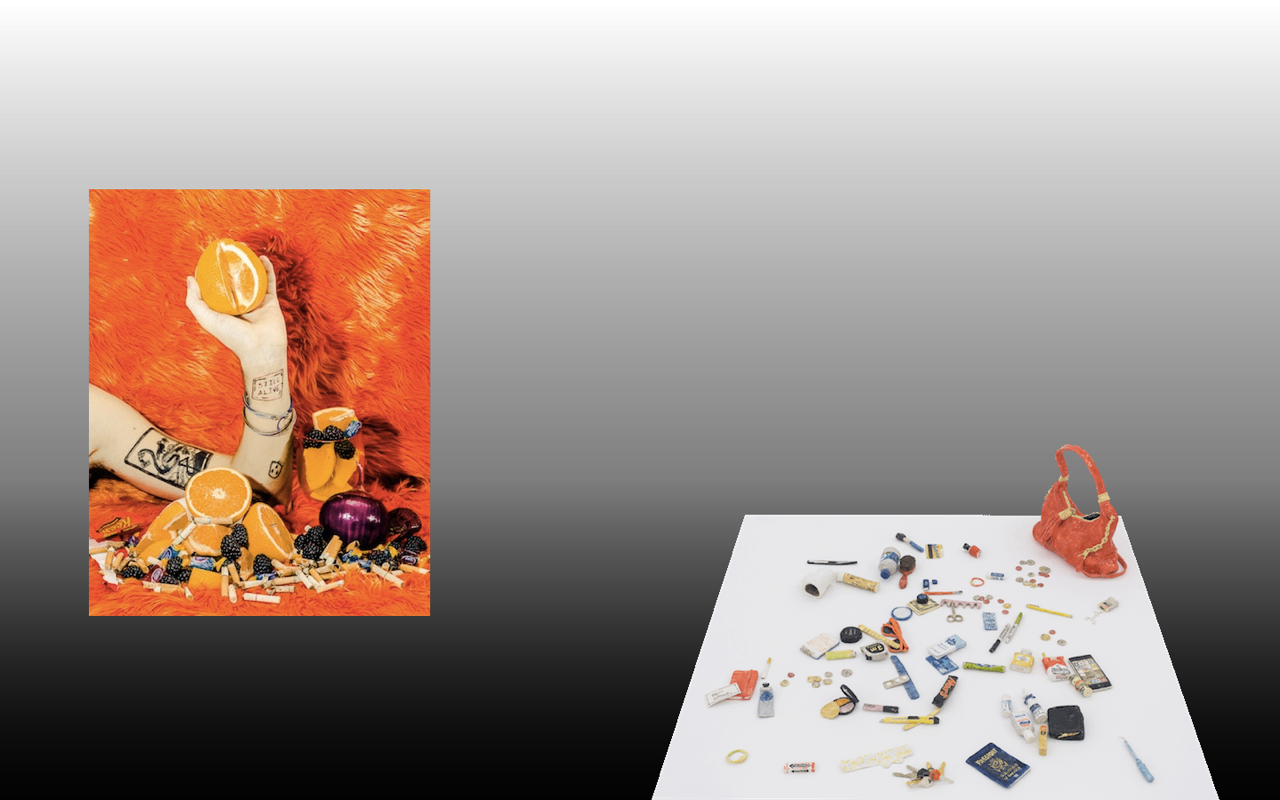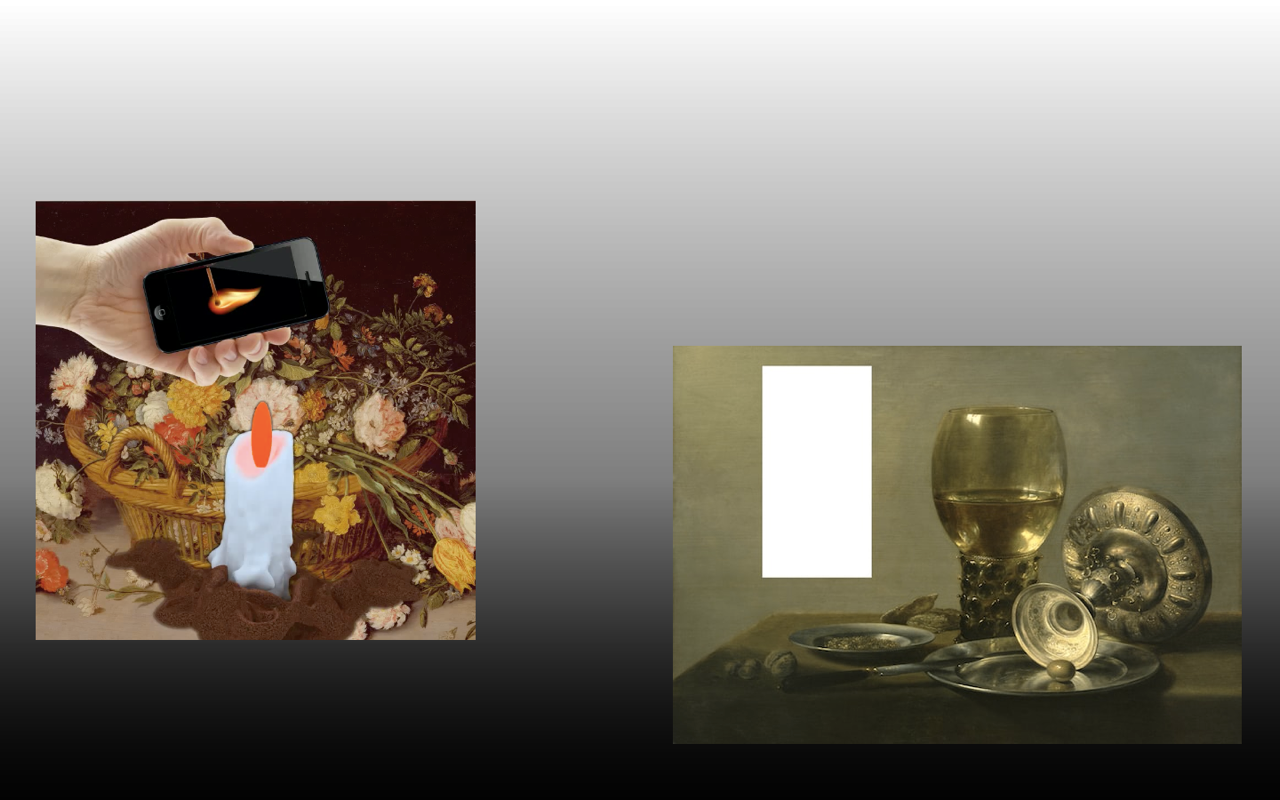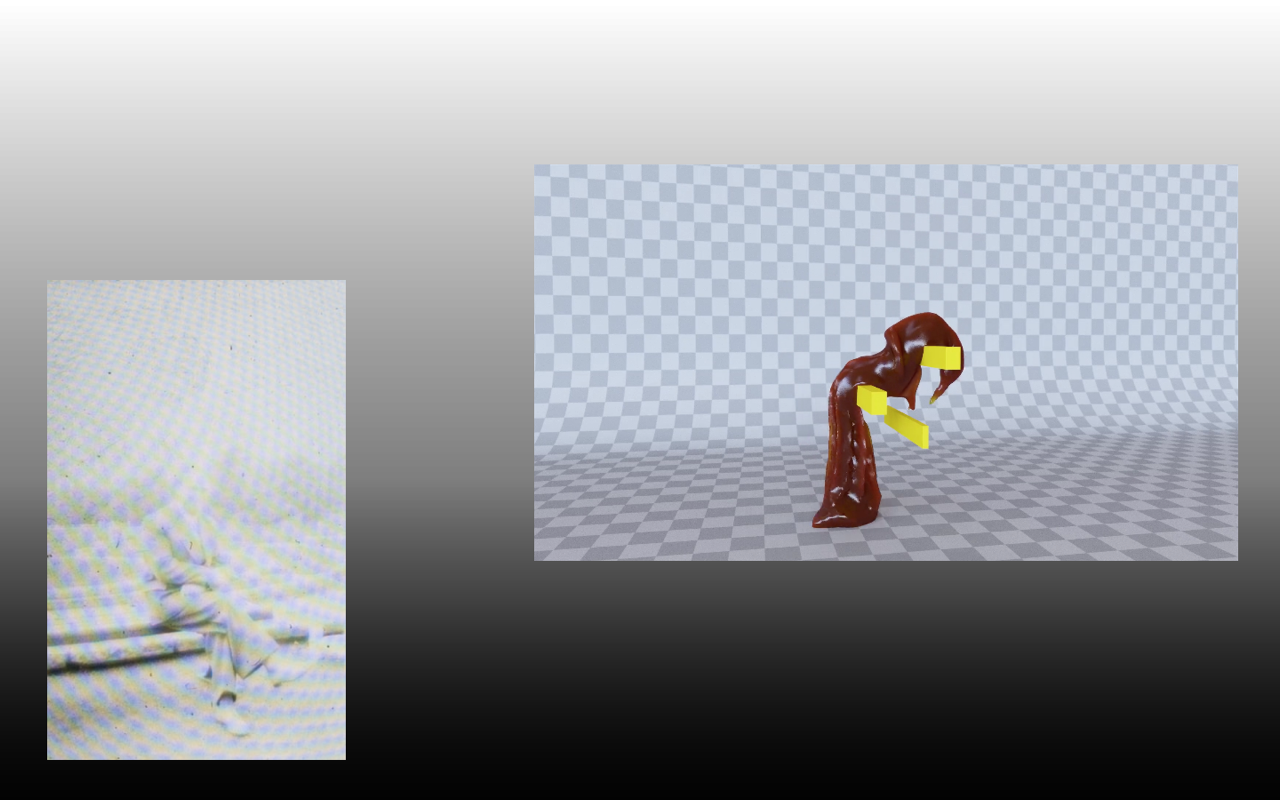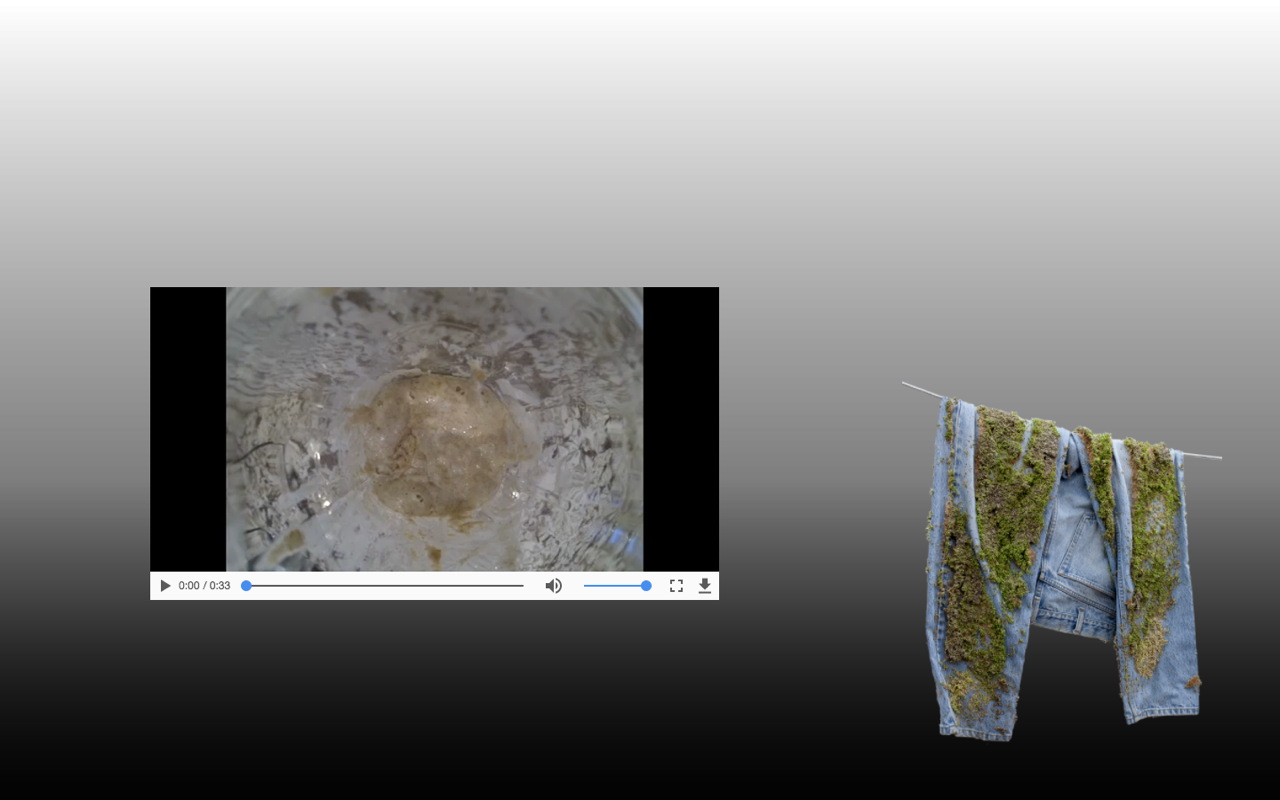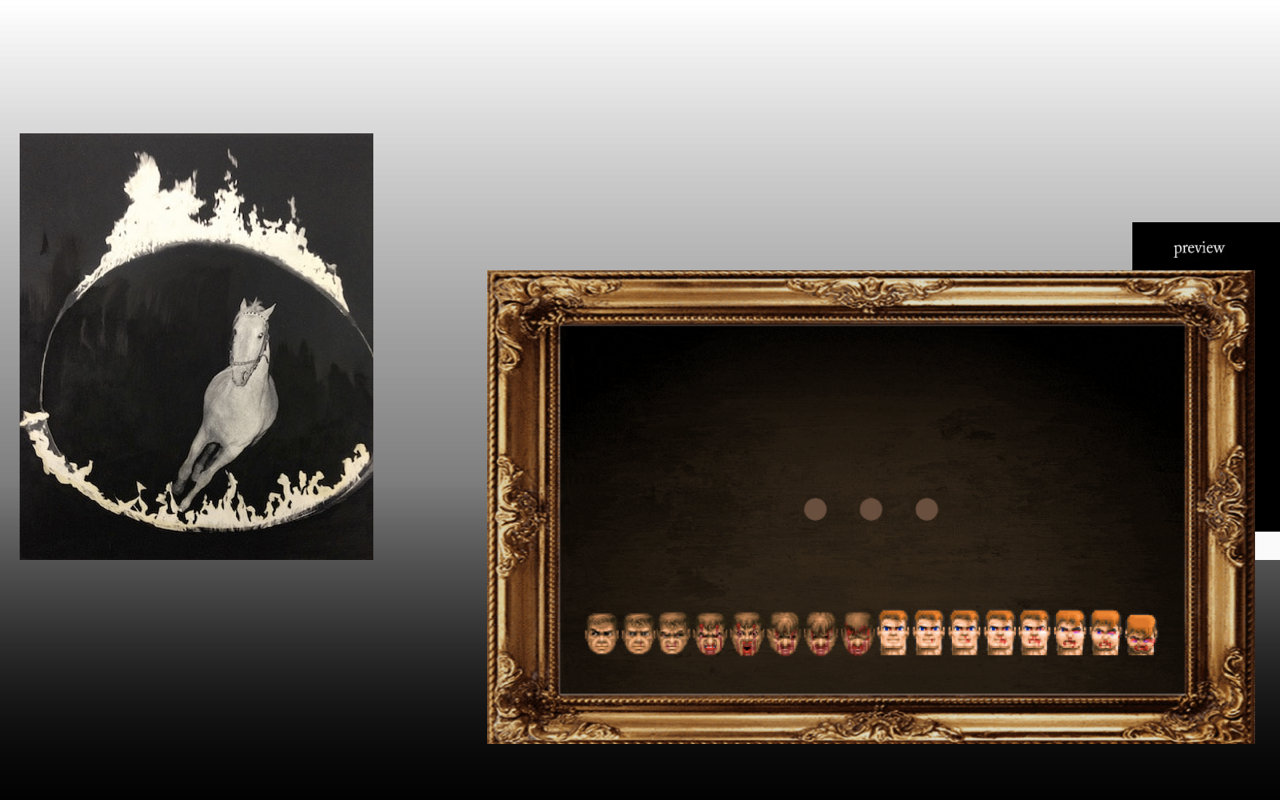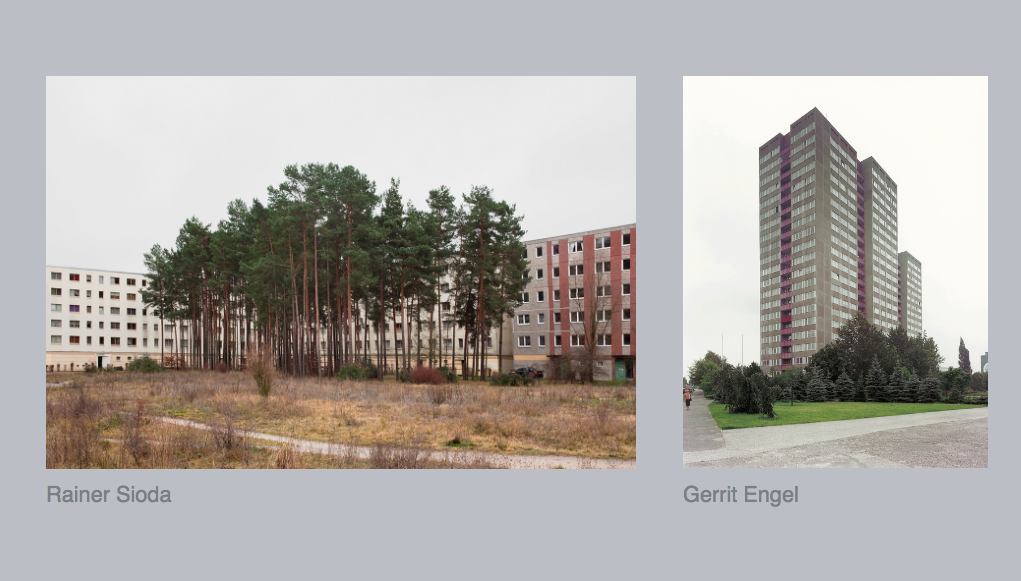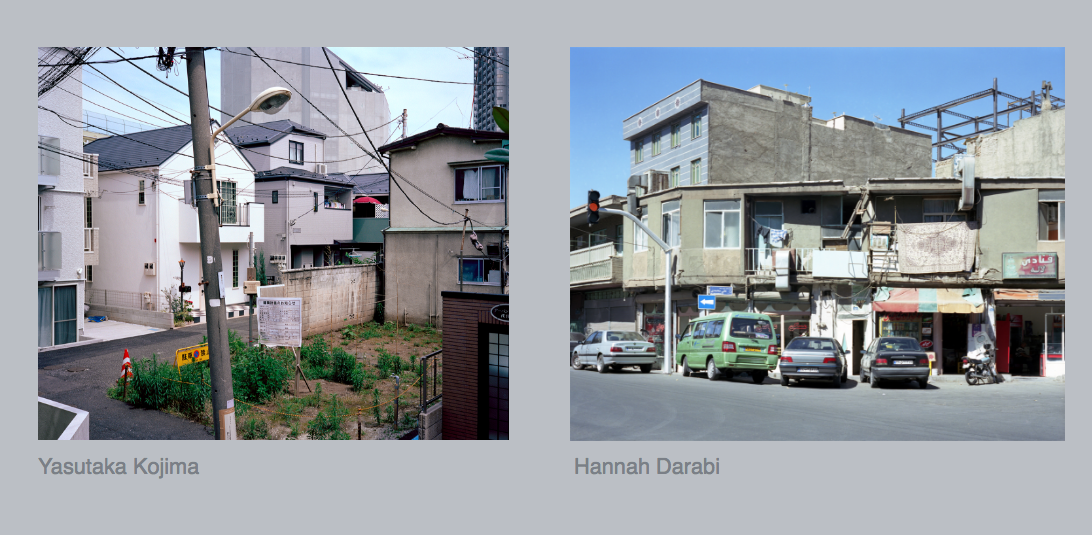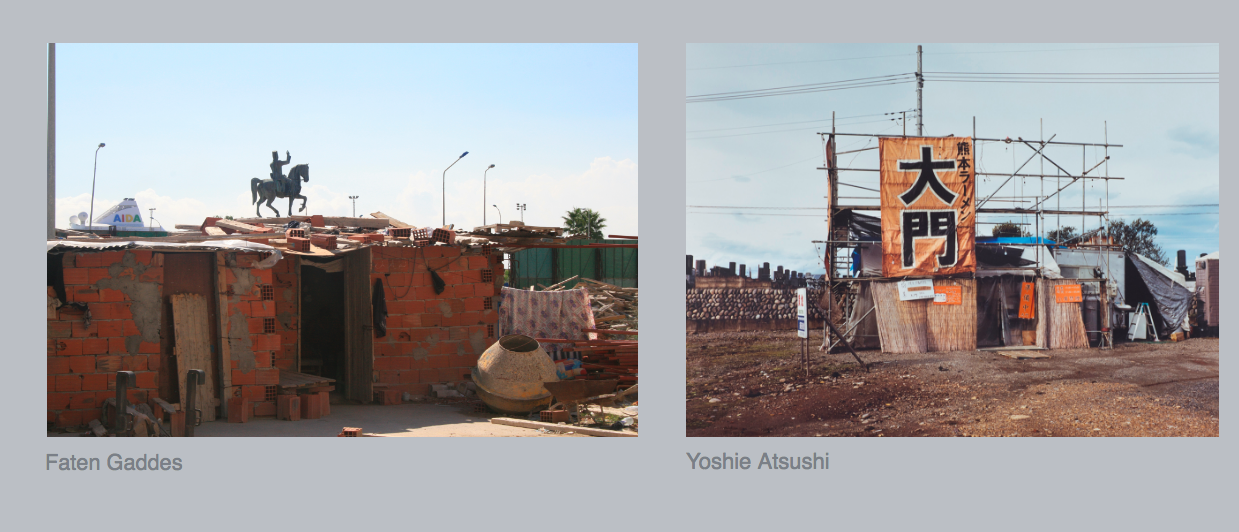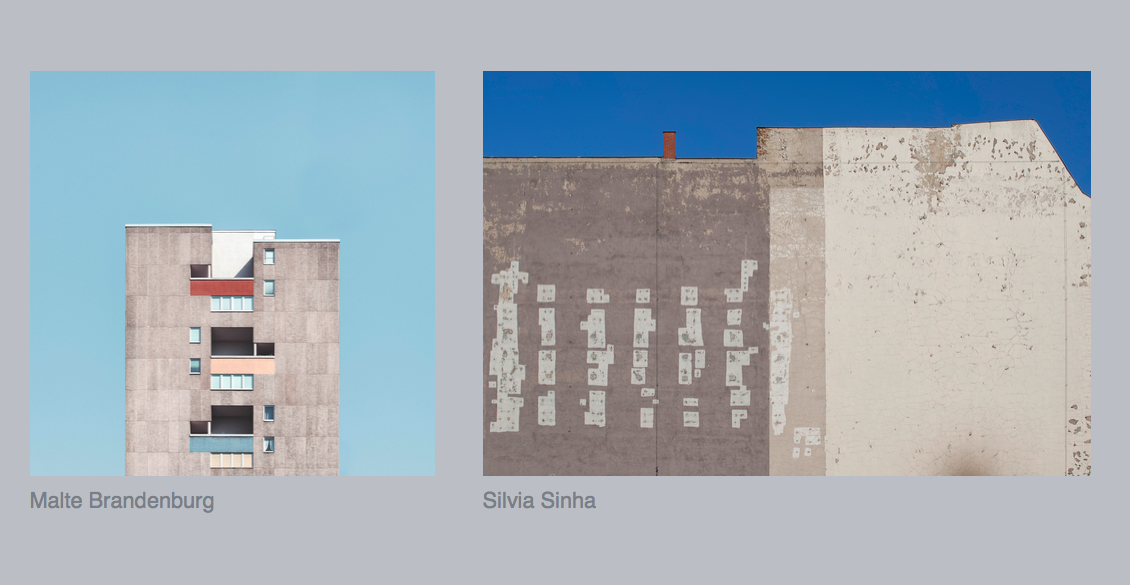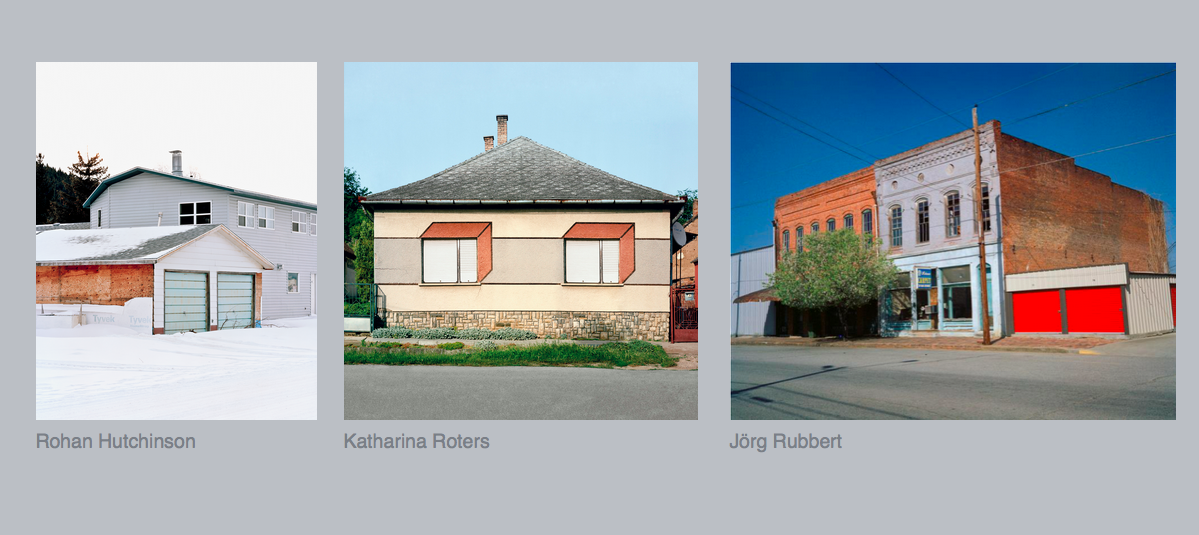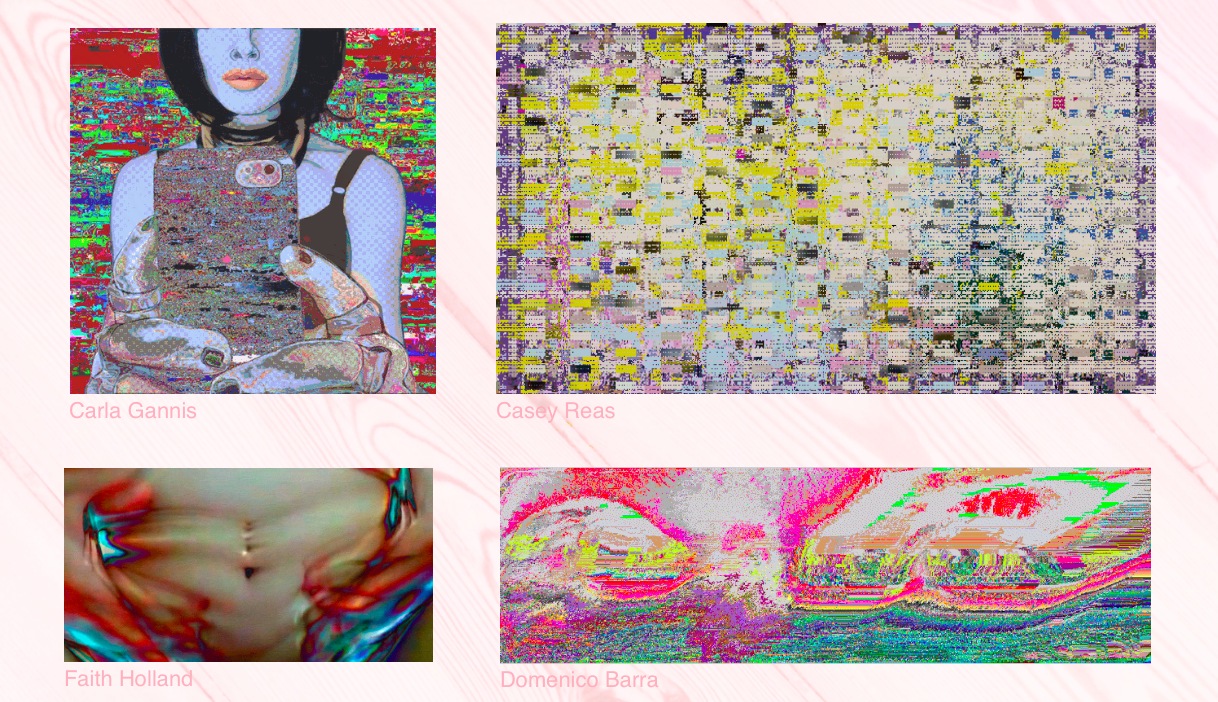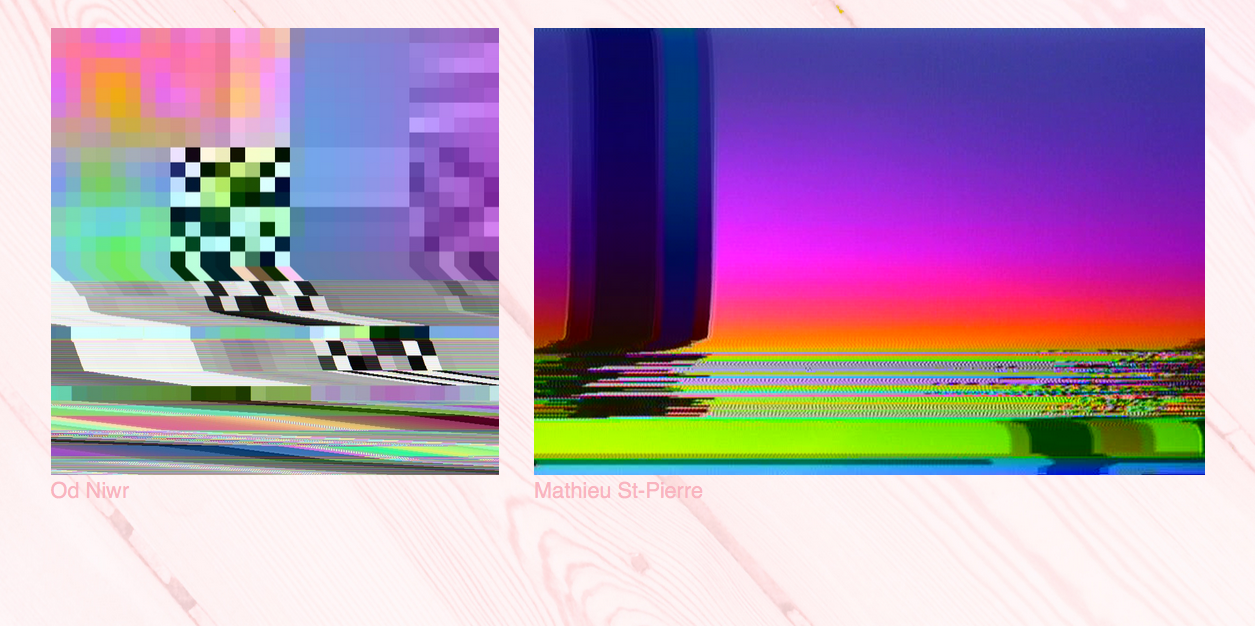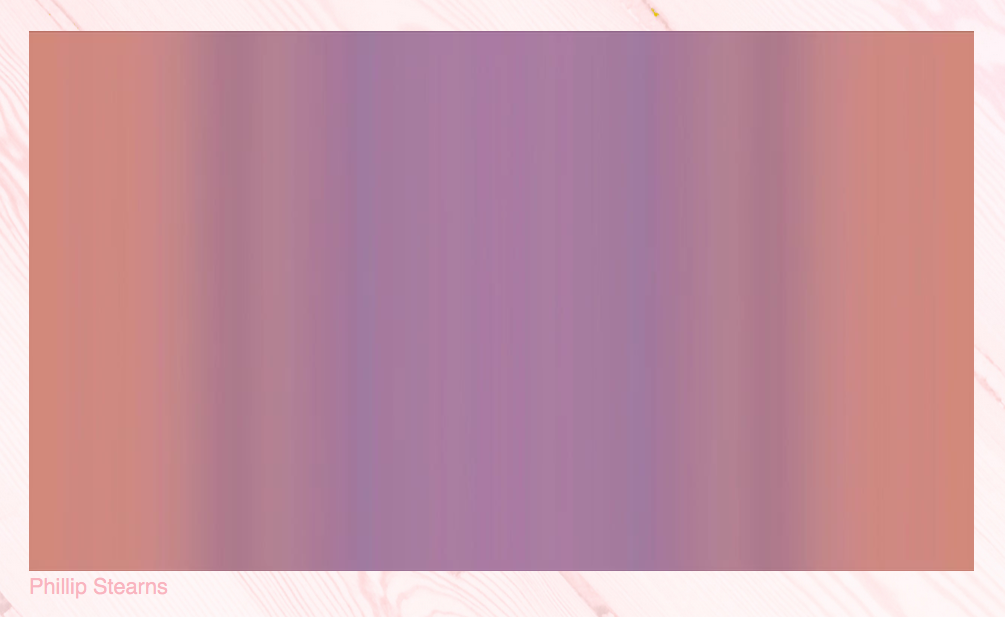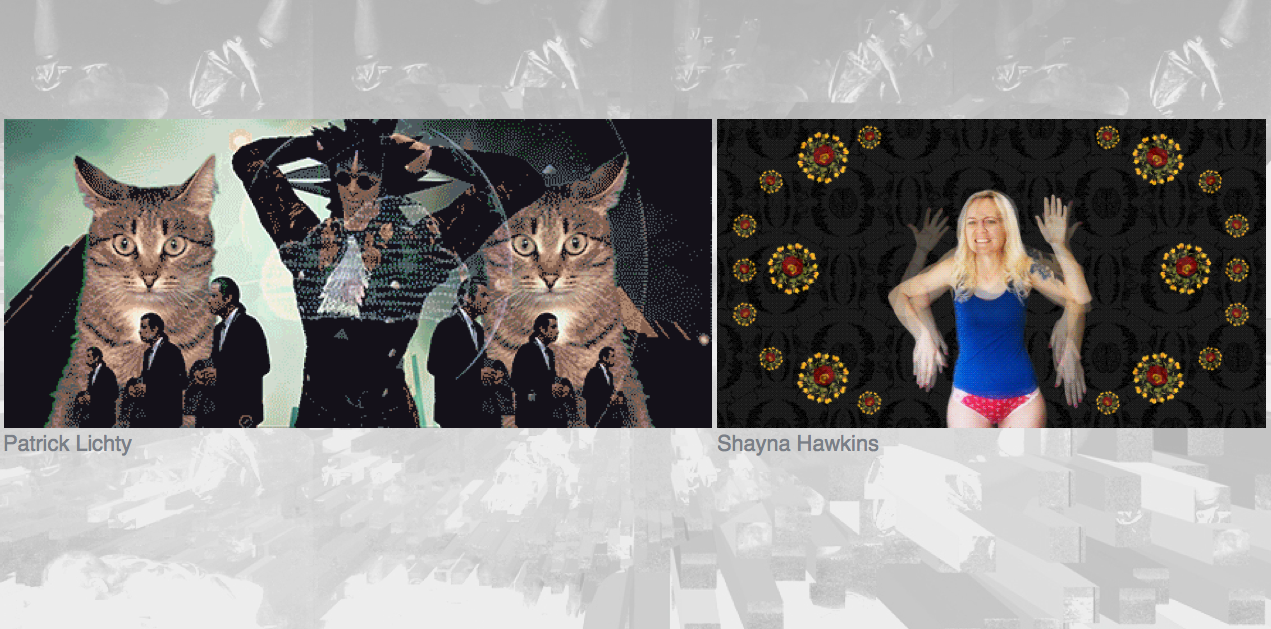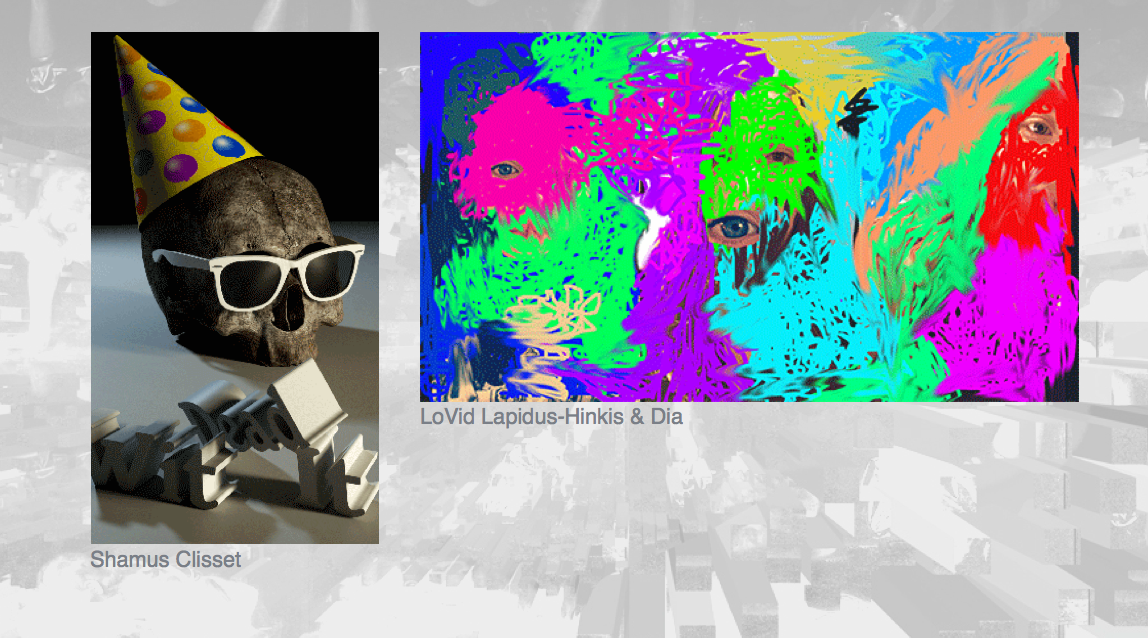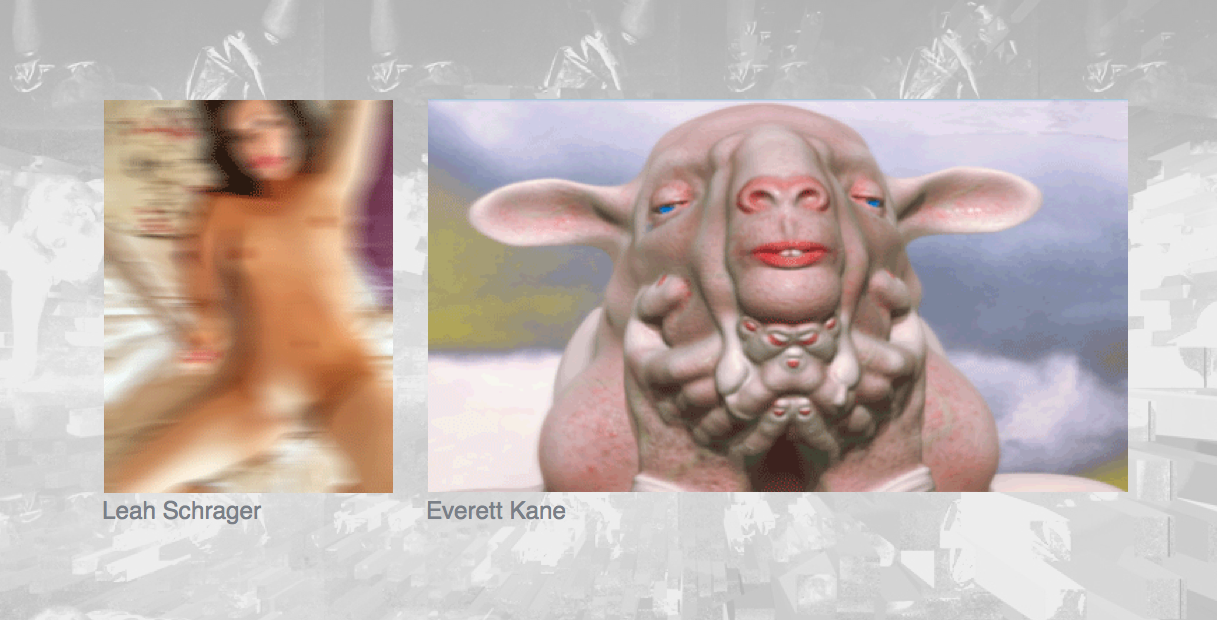ECHOES FROM THE FUTURE. Speculative Creatures & Post-Human Botanicals, 2023
Virtual exhibition commissioned by MacKenzie Art Gallery, Regina (Canada)
Works by Bianca Shonee Arroyo-Kreimes (CRI/CAN), Aviv Benn (ISR/UK), Laura Colmenares Guerra (COL/BE), Reiner Maria Matysik (DE), Sarah Oh-Mock (DE), Sabrina Ratté (CAN), Tamiko Thiel and /p (US/DE)
Curated by Tina Sauerlaender
Duration: June 29 – September 27, 2023
Disruptive human activity continues to destroy the Earth’s ecological balance, eradicating biodiversity and our planet’s shared resources. The virtual reality exhibition Echoes From The Future highlights artists working across diverse media to preserve endangered landscapes, reveal environmental devastation, and speculate on alternate future life forms. The visitors can explore their works together in an immersive landscape setting, a world of its own. The exhibition aims at revealing the complex, multifaceted interplay of nature, culture, technology, history and speculation to offer new perspectives on human existence amidst other entities. (…)
The exhibition title resonates with the interconnectedness of the present, the future and the past. Our deeds of the past, as well as our assumptions of the future, influence our actions in the here and now. Unfortunately, with our knowledge it still seems impossible to prevent the Earth’s ecosystem as we know it from breaking down. In the 3D sculpture series RÍOS, Laura Colmenares Guerra researches the deforestation of the Amazon Rainforest related to its commercial use. She proposes a series of speculative animated sculptures based on Amazonia-related data to render the human impact visible. In her interactive work What You Sow by Tamiko Thiel and /p, users sow seeds in a bubbling underwater world that grow into corals made of blue plastic bottles or red plastic forks. She alludes to the increasing plastic pollution in the world’s oceans and the contamination of all living creatures. (…) In her video, Last Species on Earth, Bianca Shonee Arroyo-Kreimes alludes to extinction and the domestication of nature by humans in an imagined reality where a hothouse biotope nurtures the last remaining plants and animals. In the installation, Floralia, Sabrina Ratté speculates on future forms of preservation of then-extinct plants. Her virtual biotope combines digital forms of organic matter and technological interventions to simulate an ecosystem that refers to the past, present and future. (…) In Aviv Benn‘s paintings, viewers encounter a dreamlike and enigmatic nature consisting of grotesque creatures and botanical themes in luminous yet unnatural colours. Her exuberant universe appears immersive and, at the same time, alienating, symbolizing the tension between humankind and nature. Meanwhile, in his series of 3D sculptures, Beings, Reiner Maria Matysik creates a cosmos of speculative creatures and organisms with almost scientific-like descriptions of the species and their natural habitat while they inhabit the virtual world. (…) With PHASO Project, Sarah Oh-Mock explores remnants of future life forms on Earth from a fictional, post-anthropocentric perspective, creating excavated skeletons of an airplane-bird hybrid or ancient clam shells fused to batteries. (…)
The exhibition’s works engage critically, playfully, and humoristically in current issues, combining them with speculative ecologies. Echoes From The Future invites visitors to grapple with their relationship to nature, particularly when it comes to its digital artificiality. What are the viewpoints the artists convey? Could their speculations and new technologies — particularly virtual worlds in which we can fully immerse ourselves — lead to more awareness and an ecological consciousness? Can they offer new approaches to solutions? Both the exhibition design and the artworks refrain from precise positioning. They are an invitation to reflect on our complex and multifaceted relationship with our environment on a personal, societal, and global level. Following mostly speculative and post-anthropocentric approaches, their works shift our perspectives from a human-centred angle towards alternate entities and scenarios for our planet. Read the full exhibition essay here.
Curator’s Tour Video, Curator’s Tour 360 Video
Artist Talk with Sabrina Ratté
Artist Talk with Sarah Oh-Mock
Artist Talk with Reiner Maria Matysik
PHOENIX FROM THE ASHES
Work by Mohsen Hazrati
Curated by Tina Sauerlaender
ONE TO ONE exhibition series
By PRISKA PASQUER Gallery, Cologne
July 14, 2022, 6 pm CET - May 31, 2024
Mohsen Hazrati’s work fuses new technologies with old traditions. The Iranian artist is interested in how literary forms come into existence, and the ways in which writing transmits meaning and value over centuries. Significance highly depends on the individual reader’s background, their cultural conditions, and the circumstances of their time. Words have an ever-changing connotation depending on the unique experience of every new person reading them. The meaning of words constantly transforms. Like the Phoenix, the legendary bird who rises anew from its own ashes, myths and narrations continue to exist and to transform in an eternal cycle.
In the exhibition, Mohsen Hazrati involves the visitors in the process of creating words and meanings. Along the way to the virtual gallery, visitors choose their avatars in the shape of letters from the Latin alphabet on a sheet of paper. In this way, each visitor embodies a letter and represents its meaning. In a mirror at the PRISKA PASQUER Virtual Gallery, they encounter themselves and other avatars and they jointly create new words. Though it appears as a mirror, it is actually a stream being recorded by the budgerigar bird sitting beside it. In Iranian culture, the budgerigar bird, perched on the hand of its owner, picks a written note out of a stack of cards containing quotes from the famous Shirazi poet Hafiz. For its reader, the text functions as a divination. This method of telling the future or finding answers through randomly chosen text passages is called bibliomancy. It posits that there is a mystic connection between the individual and the text in that moment of selection, since the individual will interpret the text according to their needs and wishes. Instead of picking paper notes, the budgerigar bird in Hazrati’s installation draws its inspiration from a huge PDF document, thus symbolizing today’s digital books and their corresponding knowledge.
The artist liberates the gallery from its grounded existence and turns it into a free-floating place in the sky. A majestic bird hovers above the gallery. The winged giant not only evokes the Phoenix, but also the Persian Simurgh, the king of the birds, which serves as a symbol for the self-knowledge that can only be reached when adhering to virtues like kindness or benevolence. The bird’s appearance reflects the colors of its surroundings and therefore metaphorically encompasses the whole space. Circling back to the idea of our avatars creating words from letters, the mystic bird symbolizes that not a single letter or person is of too much significance. Together, we create, shape, and constantly transform our own narratives.
The giant bird (“TayAR”) is commissioned by Grafikens Hus as part of the app Protoworld.
RISE OF GIANTS
Work by Banz & Bowinkel
Curated by Tina Sauerlaender
ONE TO ONE exhibition series
By PRISKA PASQUER Gallery, Cologne
November 25, 2021, 6 pm CET - May 31, 2024
The invisible bots and algorithms which govern our online behavior and collect our data every day, adopt visual forms in the series Bots by the artist duo Banz & Bowinkel. They occupy the virtual world of the PRISKA PASQUER gallery as giant cyborgs. The island, transformed into an all-encompassing coordinate system, becomes a symbol for the Internet. As visitors, we find ourselves in the middle of an experimental field of algorithms.
The Internet is a training ground for artificial intelligence to study, evaluate, and learn to anticipate human behavior. In doing so, they make our lives easier as we use map apps, talk to Alexa, or when Siri sets our alarm clock. Their knowledge helps drive our connection to technology and keeps it running as frictionless as possible. In the 1990s, we deliberately dialed into the Internet using routers and now we are connected to the internet automatically. We still push buttons and give voice commands today, but tomorrow we will control our actions with eye movements, hand movements, or even brain waves. The blurring of the boundary between humans and technology results in our gradual transformation into a technological giant. The visitors as cyborgs in the PRISKA PASQUER virtual gallery also attain formidable sizes. The gallery lies at their feet like Lilliput, the fictional island in Jonathan Swift's novel Gulliver's Travels.
Banz and Bowinkel's series Primitives also addresses the issue of scale in virtual reality. Primitives are simple basic graphical forms that are used as a foundation for the creation of more complex structures. Triangles, polygons or point clouds are important primitive forms for digital 3D objects. These shapes have no size and are arbitrarily scalable without loss of quality, since their existence is defined by the relationship of the individual parts to each other. Size is relative here as well, just like in the PRISKA PASQUER virtual gallery. Banz and Bowinkel's Primitives play with the various proportions of size that exist in the gallery space.
With a virtual reality headset, we have the opportunity to experience what is denied to us on the computer screen. We dive into the dimensions of virtual space and experience a new perspective. With ease, we fly over the miniature version of the virtual gallery and explore the gigantic bots and primitives. The exact size of our own avatars is unclear. However, thanks to an increasingly frictionless connection with technology, we too grow into cyborg giants with extraordinary powers.
Accompanying Program:
InstaLive Artist Talk: Dec 2, 2021, 6 pm CET
Virtual Happy Hour Drop Party, Jan 20, 2022, 6-8 pm CET
Soft Opening in Cologne at PRISKA PASQUER Gallery, Saturday, January 29, 12 - 6 pm
PARADOXICAL OBJECTS - Video Sculpture Art From 1968 To Today
Curated by Sue Bachmeier and Peggy Schoenegge (peer to space)
Link to the exhibition: paradoxical-objects.net
Web design by Camilla Murgia
Release date: September 24, 2021, 9 am CET
With works by Matej Al-Ali & Tomáš Moravec, William Anastasi, Emmanuel van der Auwera, Benton C Bainbridge, Frank Balve, Gabriel Barcia-Colombo, Kelsey S Brewer, Amy Cannestra, Yvon Chabrowski, James H. Connolly, Kevin Cooley, D’arcy Darilmaz, Manja Ebert, Daniel Everett, Exonemo, Stefano Fake, Ornella Fieres, Carla Gannis, James Alec Hardy, Claudia Hart, Faith Holland, Annebarbe Kau, Philipp Madörin, Marck, Alex May, Martina Menegon, Sali Muller, Juan Obando, Tony Oursler, Nam June Paik, Monica Panzarino, Taezoo Park, Björn Perborg, René Radomsky, Allison Maria Rodriguez, Ulrike Rosenbach, Nicolas Sassoon, Ira Schneider, Sid and Geri, Ivonne Thein, Joan Truckenbrod, Maria Vedder, Andy Vible, Wolf Vostell, Peter Welz, Xuan Ye
Peer to space’s exhibition PARADOXICAL OBJECTS is dedicated to this special construct that combines video and sculpture, embracing the temporality and dynamic of video and the static nature of the screen. Fourty-six time-based works by international artists from 1969 to today highlights the technological development and variety of artistic uses of video sculptures over the last decades. Whether closed-circuit, single or multi-channel, screens create a physical entity to display of moving images. The exhibition’s artists explore the possibilities and conditions of this disparate unity.
Full exhibition text and exhibition at: paradoxical-objects.net
AUGMENTED SPECIES
Invasive Sculptures in Hybrid Ecologies
Works by Sofia Crespo & Feileacan McCormick, Carla Gannis, Joanna Hoffmann, Tamiko Thiel
Curated by Tina Sauerlaender and Ursula Ströbele
Organized and developed by MoMAR (Damjanski, David Lobser, Monique Baltzer, Vicky Leung)
#augmentedspecies
Opening: Sept. 10, 2021, 3 pm local time
MoMA Sculpture Garden, New York
Further venues below.
The show runs on ANY LOCATION from November 5, 2021 to January 15, 2022
Download the MoMAR App to experience the show:
>> Click here for the iOS version <<
>> Click here for the Android version <<
An unauthorized international Touring Exhibition of AR sculptures in Museums and Sculptural Gardens worldwide.
The relationship between the arts and what has been called ‘nature‘ as a historic, cultural and scientific concept, has undergone some major shifts. Various theories of post-(human)nature and eco-fiction have become more and more influential during the last decades as is well-known. The term ‘nature‘ itself has been called into question. Ecological theorists, such as Timothy Morton think that we actually live in a post-natural age, proclaiming ecology without nature. Donna Haraway describes entangled multispecies histories, using the term natureculture. These theories include new ways of thinking about established hierarchies, agency and power, as well as difference and ontology. Leaving behind established dualisms, the exhibition Augmented Species. Invasive Sculptures in Hybrid Ecologies aims to present four contemporary artistic positions working in the field of sculpture, cyber ecology, and eco fiction: Sofia Crespo & Feileacan McCormick, Carla Gannis, Joanna Hoffmann, and Tamiko Thiel. They all deal with new technologies and forms of display, thus developing a site-specific sculptural aesthetics of the living, along with expanded possibilities of the sculptural in the digital age. The concept of MoMAR, an unauthorized non-profit gallery, is to democratize physical exhibition spaces, museums, and the curation of art within them. The exhibition occupies prestigious museum spaces around the world to connect the concept of eco-fictional shifts to said spaces. This process reestablishes what is called the canon of (art) history while invading physical locations with today’s technological possibilities, questioning institutions and their hierarchies, structures and programmes. Read the full text here
Openings
Further Venues
Each from 4 pm local time
September 17: Neue Nationalgalerie, Berlin, Germany // Kunstareal, Munich, Germany // Centre Pompidou, Paris, France
September 24: Franklin D. Murphy Sculpture Garden, Hammer Museum, LA, USA // Yorkshire Sculpture Park, UK // FRAC, Marseille, France
October 1: Centrum Rzeźby Polskiej w Orońsku (Center of Polish Sculpture), Poland // Museum of Contemporary Art, Belgrade, Serbia
October 8: Kröller Müller Museum, Otterlo, Netherlands // Middelheim Museum, Antwerp, Belgium
October 15: Zeitz MOCAA, Cape Town, South Africa // Tel Aviv Museum of Art, Tel Aviv, Israel
October 22: Louisana Museum of Modern Art, Humblebaek, Denmark // Moderna Museet, Stockholm, Sweden
October 29: Sapporo Art Park, Hokkaido, Japan // National Museum of Anthropology, Mexico City, Mexico
November 5 to November 30: Open 24/7 globally! End of all exhibitions: November 30, 2021
Eastern Bloc presents its 11th edition of SIGHT + SOUND FESTIVAL virtually:
Some Universe : Internet Spaces in a Postdigital World
June 29 to August 31st, 2021
Participating Artists: AAA Collective (AU; AR; РФ/; DE; US; FR); Banz & Bowinkel (DE); Ronnie Clarke (CA); Mara Eagle (US/CA); Anna Eyler – Nicolas Lapointe (CA); Philippe Pasquier and Miles Thorogood (CA), Jiwon Ham (KR/ US); JakyuNG Lee (KR/ US); Olia Lialina (РФ/DE); Frances Adair McKenzie and Alisha Piercy (CA); Fallon Simard – Amery Sandford (CA); Timothy Thomasson
Curated by Erandy Vergara and Tina Sauerlaender
At the forefront of the experimental digital art scene in Quebec since 2007, Eastern Bloc presents the 11th edition of the SIGHT + SOUND International Digital Art Festival this summer. Titled Some Universe : Internet Spaces in a Postdigital World, this year’s festival will be held completely online. The 2021 edition of SIGHT + SOUND Festival takes advantage of the immobility we have all been forced into to propose a reflection about the aesthetics and politics of space and representation. The artworks help us imagine and speculate on what “space” really means in a post-internet and post-pandemic world. The exhibition invites online users to delve into the worlds produced by contemporary artists, provoking us to think about what kind of spaces we want to inhabit in the years to come. The curators selected net art, videos, and videogames exploring spaces beyond perspective and cartesian references. The artists move away from realism, or engage with it critically. They ask questions, not attempting to provide linear solutions. Most of all, they virtually hold the visitors’ hands during immersive, multidimensional experiences to reconfigure the “fourth wall” to which we are mostly submitted to during our day to day lives facing flat screens. The title of the 11th edition of SIGHT + SOUND Festival paraphrases Olia Lialina’s Some Universe (2002), a link-free site inspired by the popular star backgrounds on the early web. Like many of Lialina’s works, this net art piece functions as an archive of the aesthetics and vernacular roots of the internet. I like the vagueness and unpretentiousness implied in the title of Lialina’s piece. But I admire it even more for its archival impulse: to create it the artist extracted as many outer space backgrounds she could find on the web in 2002. The evocation of the infinite universe and the stars, which often stand for the future also resonates with this curatorship.
WE ARE ALL UNDER THE SAME SKY
Artist: Gabriella Torres-Ferrer
Curator: Mara-Johanna Kölmel
On view from May 14, 2021 - May 31, 2024
peer to space’s Associate Director Mara-Johanna Kölmel presents the work of artist Gabriella Torres-Ferrer as part of ONE TO ONE, an exhibition series by PRISKA PASQUER gallery, funded by the Kunstfonds’ Neustart program.
About the exhibition:
We Are All Under the Same Sky questions the significance of the body in our technological present by addressing both our physical and virtual realities within networked, globalized, and data-driven worlds. How are we still connected to each other regardless of our physical locations? What do these different kinds of connections involve? How do such connections maintain traditional power relations or give them new forms? Gabriella Torres-Ferrer's transmedial practice strives to break down hegemonic narratives by challenging interfaces, modes of spectatorship, and materialities. By connecting references to net culture, neocolonial landscapes, ecologies, and globalization, their work seeks out the potential for the respective transformations of these phenomena. This artistic approach can be experienced sensually in the exhibition space, which has transported the Priska Pasquer Gallery onto a cloud. As crucial element of digital infrastructures, the cloud is an important concept for the artist and curator. It therefore becomes the central visual metaphor of the exhibition, through which power relations inscribed in the digital sphere are explored. The show thus becomes a plea for alternative infrastructures to expose and counter oppressive regimes. Gabriella Torres-Ferrer’s solo show, curated by Mara-Johanna Kölmel, reminds us that we all live under the same sky. In doing so, the exhibition pleads for radical togetherness as an alternative to the feigned empathy implicit in our constant social connectedness. Read the full text here
PORTRAIT OF A FUTURE
Artist: Charlie Stein
Curator: Peggy Schoenegge
On view from March 10, 2021 - May 31, 2024
peer to space’s curator Peggy Schoenegge presents the work of artist Charlie Stein as part of ONE TO ONE, an exhibition series by PRISKA PASQUER gallery, funded by the Kunstfonds’ Neustart program.
About the exhibition:
Charlie Stein's paintings and drawings depict female robots that resemble humans on the surface, and yet appear unnatural. The artist humanizes machine-like figures by assembling individual components from various Instagram selfies to create new images. The portraits follow the typical style of staged self-portraits found on the Internet. Stein often shows her subjects looking slightly upwards. Their abnormally large eyes are in keeping with the transformations promoted by the facial filters common on social media. The artist deals with the relevance of robots and the portrayal of femininity in the digital age. The robots that serve as references for the artist are partly real, and partly of imaginary origin. The work Unimate in Paris (2020) refers to an industrial robot that was made operational by the Ford company in 1961. Made in the shape of a single arm, the robot built and welded components for car bodies. Stein added a female body to the arm to the robot. The young woman in a brown coat is holding a cigarette and looking apathetically past the spectators. By using this feminine identity, the artist counteracts the masculine connotations of the machine. The exhibition title PORTRAIT OF A FUTURE is derived from the series Portrait Of A Future Self (2019-2021). The female robots free themselves from the constraints of their intended purposes and turn both gender clichés and the relationships between humans and machines on their heads. In light of the increasing significance of robot technologies in our daily lives, questions emerge about their social functions. Robots are produced by humans and therefore shaped by our norms and values. Charlie Stein's works open up the opportunity for reflection. In the future, will we continue to reproduce stereotypical role models in the machines we are creating? Or do we have a desire to change and develop a more open, diverse and fair existence to shape our future? Read the full text here
LIGHT SHINES THROUGH THE CURTAINS OF TIME
Artist: Ornella Fieres
Curator: Tina Sauerlaender
On view from February 10, 2021 - May 31, 2024
peer to space’s Director & Head Curator Tina Sauerlaender presents the work of artist Ornella Fieres as part of ONE TO ONE, an exhibition series by PRISKA PASQUER gallery, funded by the Kunstfonds’ Neustart program.
The virtual space of PRISKA PASQUER gallery will be inaugurated with the new exhibition series ONE TO ONE. In this series, one artist and one curator develop an exhibition project together. The series begins with four exhibitions in collaboration with four peer to space curators, Tina Sauerlaender, Mara-Johanna Kölmel, Peggy Schoenegge and Gloria Aino Grzywatz. They will each present one artist whose practice evolves around the influence of the digital on our environments and personal lifeworlds.
About the exhibition:
In the works of artist Ornella Fieres, new technologies meet analog found objects from times past. The artist instrumentalizes photographs from personal estates and archival material from scientific films for her own purposes. She is concerned with "transferring the past into the present and making the invisible processes of the digital visible." Her works show the world of yesterday, seen through the eyes of today's algorithms. The basis for Ornella Fieres' series Postcards to M / GAN (2021) are flower postcards from the 1960s and 1970s. The postcards come from the estate of an East Berliner, and were acquired by the artist at an online flea market. A self-teaching artificial intelligence called a GAN (Generative Adversarial Network) studies the postcards’ motifs and then creates its own images based on what it has learned. The works illustrate the machine's view of the data that has been entered, creating a matter of fact depiction and a poetic yet irritatingly artificial result. The title of the exhibition was borrowed from the video work I create paths that lead to the clouds in which we go (2020), in which an artificial intelligence creates a poetic-dystopian vision of the end times based on all the texts that have been written about Ornella Fieres' works to date. This vision also has its hopeful sides, as Ornella Fieres' works always reflect two sides of the same coin. They illustrate both human and computer-generated perception. On the one hand, they compare the relationship between the artist and her tools with the careless interventions of man in nature. On the other hand, they symbolize the creative potential of her collaborative work. Above all, Fieres' works remind us that artificial intelligence, although complex, was created by humans. They therefore reflect one thing above all else: human nature. Read the full text here
BUNCH OF KUNST IN QUARANTINE // PARADOX PARADISE
Online exhibition at Kara Agora - Online Art & Research Center
October 8, 2020, 7-9 pm CET - - May 31, 2024
Curated by: Mara-Johanna Koelmel and Tina Sauerlaender
Spatial Design by: Sabine Funke and Martina Menegon
Participating artists: Uli Ap (UK), Katharina Arndt (DE), Lara Verena Bellenghi (AT), Hannah Bohnen (DE), Marta de la Figuera (ESP), Ornella Fieres (DE), Bettina Funke (DE), Sabine Funke & Karlheinz Bux (DE), Fabian Hesse (DE) & Mitra Wakil (AFG), Helena Hunter (UK), Dorien Lantin (DE) & Robert Hecht (DE), Marie-Eve Levasseur (CAN/DE), Martina Menegon (IT/AT), Filippo Minelli (IT), Chiara Passa (IT), Agnese Sanvito (IT), Susan Supercharged (US/UK), Thomas Teurlai (FR), Miloš Trakilovic (BIH/NL)
Bunch of Kunst in Quarantine // Paradox Paradise is a virtual exhibition turning its lens on artistic production in times of Corona. It poses the question of how visual art – in the context of social distancing, national demarcation, domestic retreat, economic downturn, rising nationalism and encompassing surveillance – can open up alternative paths for reflection, transformation and solidarity. The works in this show aim to distill the complexities of the current moment into artistic form and thereby amplify European experiences across closed borders. If an invisible force indeed makes visible the weaknesses of our fragile social systems, it also offers possibilities for fundamental change on a personal and collective level. Paradox Paradise symbolizes the state of living between the extremes unfolding between physical and the digital worlds. This paradox conveys a potential to unveil spaces of opportunities that the artists address in the exhibition. As such, the exhibition also aims at re-activating the future as a space of possibility by transforming prevailing accounts and by sharing with one another what moves and connects us in these challenging times.
Link to the Curator’s Tour with Mara (Domestic Dreams space) here.
Link to the Curator’s Tour with Tina (Liminal Latitudes space) here.
Link to the Artist Talk on ZOOM here.
CLAIMING NEEDLES - Positions of Contemporary Embroidery Art
Online exhibition: claiming-needles.net
Release date: August 16, 2018, 10 am CET
Curated by: Peggy Schoenegge and Darja Zub
Exhibition Design by: Emilie Gervais
Participating artists: Tanya Akhmetgalieva, Alma Alloro, Ana Teresa Barboza, Alexandra Baumgartner, Danielle Clough, Dave Cole, Liz Collins, Ruth Cuthand, Erika Diamond, Birgit Dieker, Jochen Flinzer, Gabriele Fulterer & Christine Scherrer, Anja Fussbach, Michelle Hamer, Sally Hewett, Barb Hunt, Aya Kakeda, Katika, Alexandra Knie, Dinah Kübeck, Jan Kuck, Rebecca Levi, Aubrey Longley-Cook, Gretta Louw, Robyn Love, LoVid, Katrina Majkut, Niina Mantsinen, Jamie Martinez, Elisabeth Masé, Victoria May, Cat Mazza, Reija Meriläinen, Carol Milne, Julia Neuenhausen, Natasza Niedziolka, Shanell Papp, Anja Claudia Pentrop, Cordula Prieser, Anna Ray, Karolin Reichardt, Fiene Scharp, Noora Schroderus, Kathryn Shinko, Annegret Soltau, Laura Splan, Jonny Star, Marion Strunk, Anna Talens, Marianne Thoermer, Kata Unger, Sanni Weckman, Shea Wilkinson, Jessica Wohl
With the online exhibition CLAIMING NEEDLES, peer to space aims to explore definitions of embroidery art, its topics and materials. The goal of the exhibition is to heighten awareness of embroidery art and to break with common definitions and assignments in a patriarchal society, such as "female", "emotional", or "traditional", allowing new plotlines to be discovered and new territory of art to be embraced. Fifty-four international artists present their works in the exhibition, showcasing embroidery as an artistic tool from the contemporary perspective, revealing different approaches on embroidery as well as various topics such as gender, science, digitalization, urbanity, politics or social criticism that are dealt with and reflected by the medium. These approaches extend the critical realm of embroidery.
Full exhibition text and exhibition at: claiming-needles.net
MERMAIDS AND UNICORNS
Online exhibition: mermaidsandunicorns.net
Release date: Sunday April 9, 2017, 3 pm CET
Curated by: Carlotta Meyer, Benoit Palop and Tina Sauerlaender
Exhibition Design by: Emilie Gervais
Participating artists: Anthony Antonellis, Katharina Arndt, Kim Asendorf, LaTurbo Avedon, Domenico Barra, Aram Bartholl, Alexandra Baumgartner, Aviv Benn, Jonas Blume, John Breed, Gaby Cepeda, Gregory Chatonsky, Monica Cook, Shyra De Souza, Paula Doepfner, Grigori Dor, Mark Dorf, Rose Eken, Ornella Fieres, Katherine Frazer, Bea Fremderman, Carla Gannis, Emilie Gervais, Hobbes Ginsberg, Andreas Greiner & Armin Keplinger, Karolina Halatek, Claudia Hart, Gregor Hildebrandt, Faith Holland, Hideyuki Ishibashi, Everett Kane, Erica Lapadat-Janzen, Geoffrey Lillemon, Gretta Louw, LoVid & Douglas Repetto, Alexandre Madureira, Claudia Maté, Michal Martychowiec, Rosa Menkman, Eva Papamargariti, Sabrina Ratté, Kent Rogowski, Manuel Roßner, Cecilia Salama, Alfredo Salazar-Caro, Nicolas Sassoon, Ann Schomburg, Robert Seidel, Berndnaut Smilde, Charlie Stein, Mathieu St.Pierre, Katie Torn and Miriam Vlaming
Not only the physical world exists today. There is an equivalent one that we only perceive with our eyes. Yet this on-screen world is real. Everything is possible there; unicorns and mermaids exist and become part of our lives. But the world in the digital realm is very fragile. At some point in the future, it may no longer be accessible; its devices and hardware will become purely objects. The online exhibition Mermaids & Unicorns examines how today’s artists working in varied media explore the phenomenon of evanescence. They reflect on the pictorial history of vanitas and evanescence, the concept of absence in the visual present or the topic of “digital obsolescence” in today’s post-digital living conditions.
Full exhibition text and exhibition at: mermaidsandunicorns.net
OUR CITIES SURROUNDED
Release date: Sunday July 31, 2016, 3 pm CET
Curated by: Carlotta Meyer and Tina Sauerlaender
Participating artists: Taysir Batniji, Bogdan Andrei Boreianu, Malte Brandenburg, Hannah Darabi, Marlon de Azambuja, Donato del Giudice, Lorena Endara, Gerrit Engel, Katharina Fitz, Faten Gaddes, Jennifer Garza-Cuen, Florian Generotzky, Otto Hainzl, Robert Harding Pittman, Matthias Hoch, Jordi Huisman, Rohan Hutchinson, Nicu Ilfoveanu, Gerry Johansson, Urte Kaunas, Yasutaka Kojima, Dillon Marsh, Bernhard Moosbauer, Huma Mulji, Mame-Diarra Niang, Hirohito Nomoto, Hildegard Ochse, Yu Ogata & Ichiro Ogata Ono, Mikula Platz, Gabriele Rossi, Katharina Roters, Jörg Rubbert, Eli Singalovski, Silvia Sinha, Rainer Sioda, Jan Vranovsky, Sinta Werner, Michael Wolf, Yoshie Atsushi, Kyler Zeleny, Harf Zimmermann
The online exhibition Our Cities Surrounded reveals residential areas around the globe—from America to Asia, Europe to Africa or the Middle East. 42 artists from 21 countries photographed in 19 states both home and abroad to give an insight into global human living conditions and their specific local history. Our Cities Surrounded follows peer to space’s IRL group exhibition Sometimes You See Your City Differently. This online exhibition now extends the original concept in terms of diversity and scale, facilitating the inclusion of many more artists as well as infinite access thanks to the Internet.
Our history shapes our present. We are all involuntarily born into a certain culture, a certain region, a certain city somewhere in this world, that in turn shapes our own perception of our surroundings, foreign cultures and the world itself. We are all responsible for making ourselves aware of this fact in order to treat each other with respect, empathy and humanity. Clearly this demands a huge amount of self-reflection and change of perspective from each of us, especially when we encounter “the other” on the streets of our neighborhoods, abroad on our holidays, on the Internet, somewhere in this world, physically or virtually. Our Cities Surrounded contextualizes our own living space within the one of the others around the globe. Differences and similarities become visible proving that we are all somehow linked together. The urban street scenes away from public buildings and tourist sites reveal the inhabitant’s daily surroundings. Without any individuals the images speak generally about human living conditions and their cultural or country-specific manifestations. Buildings last over generations. Therefore they symbolize and witness societal values or a certain aesthetic sense. Both change or decline over time. Edifices decay with it, are abandoned, destroyed or become ruins, or they get reshaped or restored. Our Cities Surrounded speaks about this change, that may have been brutally forced by authorities or happened barely noticeably and slowly over time.
CAT HEROICUS SUBLIMIS
Release date: Sunday June 4, 2016, 3 pm CET
Curated by Tina Sauerländer & Peggy Schoenegge
Participating Artists: Helena Acosta, Alma Alloro, Maggy Almao, Anthony Antonellis, Kim Asendorf, LaTurbo Avedon, Domenico Barra, Uğur Engin Deniz, Mark Dorf, César Escudero Andaluz, Dor Even-Chen, Ole Fach, Ornella Fieres, Katherine Frazer, Carla Gannis, Sara Goodman, Claudia Hart, Philip Hausmeier, Paul Hertz, Faith Holland, Mark Klink, Erica Lapadat-Janzen & Sophia Borowska, Gretta Louw, LoVid, Vince Mckelvie, Rosa Menkman, Lorna Mills, Brenna Murphy, Zach Nader, Od Niwr, Eva Papamargariti, Will Pappenheimer, Michael Pelletier, Niko Princen, Casey Reas, Antonio Roberts, Rachel Rossin, Cecilia Salama, Nicolas Sassoon, Robert Seidel, Yoshi Sodeoka, Anne Spalter, Mathieu St-Pierre, Phillip Stearns, Daniel Temkin, Giselle Zatonyl, Erik Zepka, Damon Zucconi
Cat Heroicus Sublimis explores how digital artists use abstract visual language. The title refers to Barnett Newman’s painting Vir Heroicus Sublimis (1950-51) at MoMA. Newman hoped that the viewer would stand close to this expansive abstract work to experience a physical human encounter, which is part of his definition of the sublime as a “self evident reality” that comes “out of ourselves, out of our own feelings” and “can be understood by anyone” (see here and here). Abstract Expressionist artists like Newman escaped traditional patterns and aesthetics to create their own understanding of the sublime. Now that we are living in the Digital Age, Cat Heroicus Sublimis gathers works by 48 artists who reflect the ideas and ideals of digital abstract art. Cat Heroicus Sublimis presents their new media-related ways of abstraction and questions if this could be a way to find a contemporary sublime. Is there even a need of a sublime in the digital space? How could it be created? Cat Heroicus Sublimis follows peer to space’s IRL group exhibition WHEN THE CAT’S AWAY, ABSTRACTION curated by Tina Sauerländer at Anna Jill Lüpertz Gallery in Berlin. The show explores artistic works that reveal the merge of the real and virtual world with abstract visual language and innovative materials.
NARGIFSUS | ANIMATED SELF-PORTRAITS
Release date: Sunday March 20, 2016, 6 pm CET
Curated by Carla Gannis and Tina Sauerlaender
Participating Artists: Alfredo Salazar-Caro, Angela Washko, Ann Hirsch, Ann Schomburg, Anna Frants, Anthony Antonellis, Antonio Roberts, Carla Gannis, Cecilia Salama, Christian Petersen, Claudia Hart, Domenico Barra, Elena Garnelo, Emilie Gervais, Emilio Vavarella, Erica Lapdat Janzen, Erik Zepka, Eva Papamargariti, Everett Kane, Faith Holland, Federico Solmi, Gaby Cepeda, Giselle Zatonyl, Gretta Louw, Guido Segni, Helena Acosta, Jacky Connolly, Jennifer Chan, Jonny Star, Joshua Weibley, Katie Torn, LaTurbo Avedon, Laurence Gartel, Leah Schrager, Lisa Levy, Lorna Mills, LoVid & Dia, Man Bartlett, Mark Dorf, Mathieu St-Pierre, Michael Mallis, Nicholas O'Brien, Niko Princen, Ole Fach, Patrick Lichty, Paul Hertz, Rafia Santana, Ray Tee, Rollin Leonard, Savannah Spirit, Shamus Clisset, Shayna Hawkins, Stefano W. Pasquini, Sung-Ah Jun, Susan Silas, Vince McKelvie, Will Pappenheimer, Yuliya Lanina
For NARGIFSUS artist Carla Gannis and curator Tina Sauerlaender invited 58 international artists to present animated GIF Selfie-Self Portraits that provide a broad range of artistic perspectives on contemporary selfie culture and self-display. This online exhibition (released March 20, 2016) follows the NARGIFSUS SCREENING at TRANSFER Gallery, Brooklyn, New York, on the occasion of the closing event of Carla Gannis's solo show A Subject Self-Defined on March 19, 2016. The Selfie Drawings by Carla Gannis, which are the prelude to the works in the show at TRANSFER, were part of the group show Porn to Pizza - Domestic Cliches curated by Tina Sauerlaender at DAM Gallery in Berlin in 2015. The topic of the exhibition, the change of private and personal comfort zones in the Digital Age, complements Gannis's The Selfie Drawings that deal with contemporary states of analog-virtual hybridity and identity performance.
Link to the video with all works: vimeo.com/159504170
